This is a talk I gave at Webstock in June 2019. A text version and the slides appear below.

Last year, I went to see a little movie called Avengers: Infinity War.

I saw it at the Alamo Drafthouse in San Francisco, which is an independent cinema that cuts its own pre-roll clips.
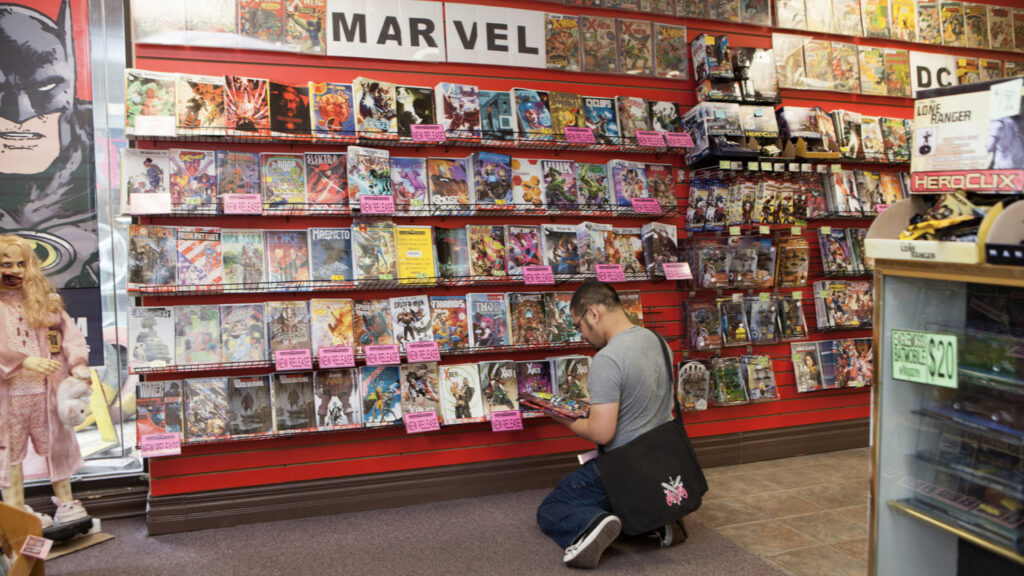
Before they screened Infinity War, they showed a pre-roll clip of two comic boy guys sitting in their store.
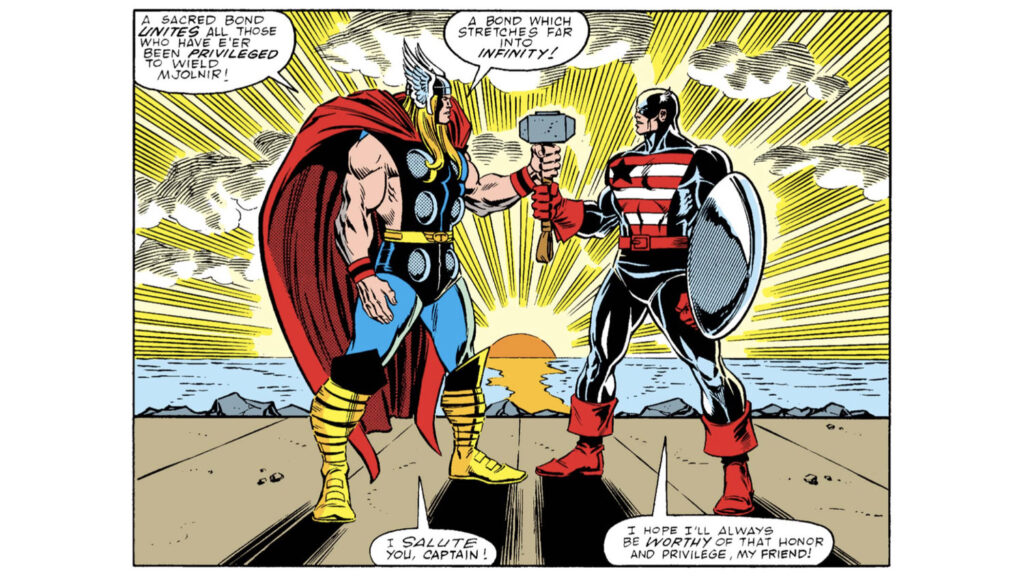
They were discussing their favourite issues of Avengers comic books over the years and their favourite storylines including Captain America, and Thor…
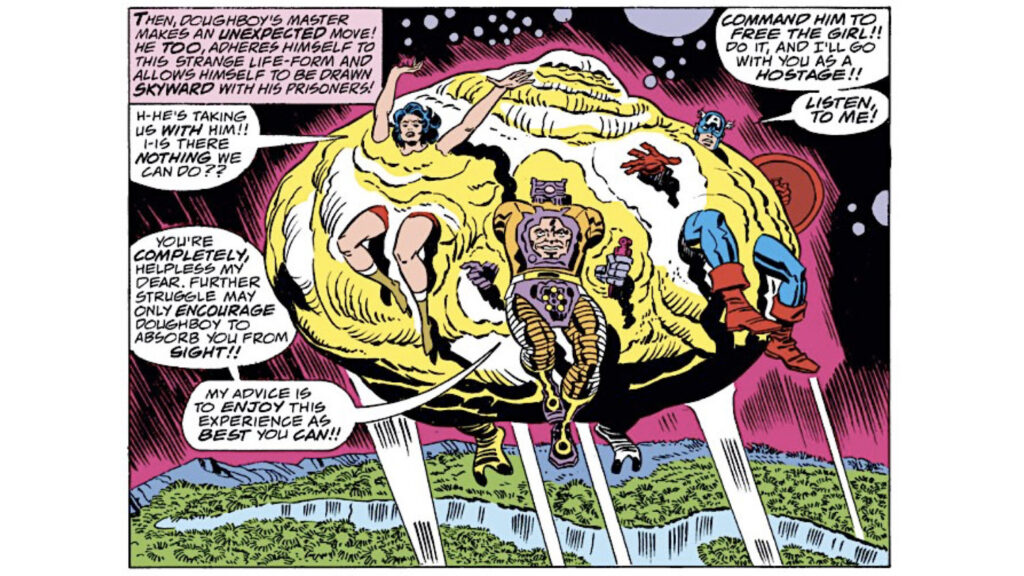
…and even that slightly lesser known Marvel character, Doughboy.
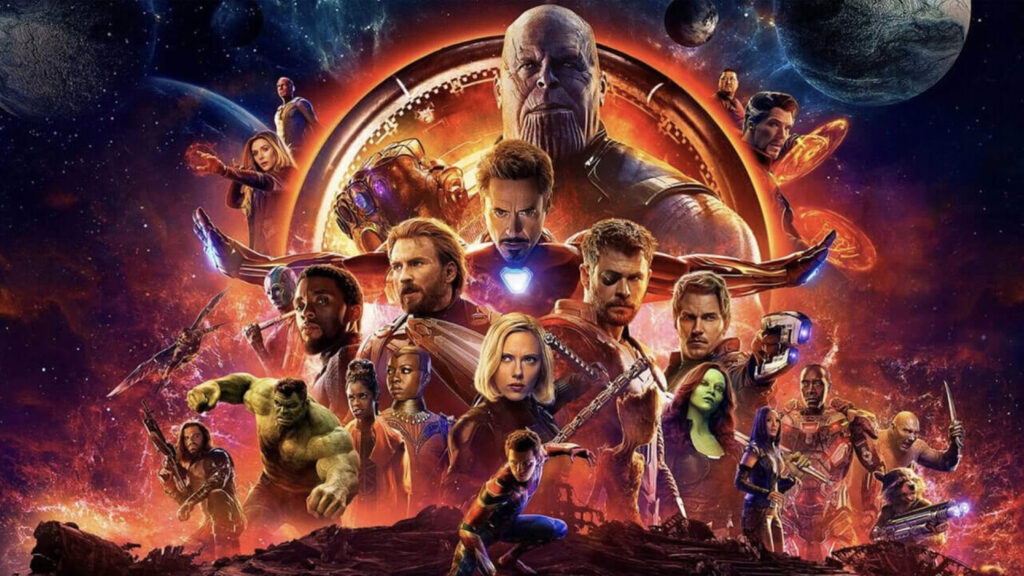
I realised, as I sat there, that Infinity War was not exactly a movie for beginners. After twenty odd Marvel movies, it encompassed over thirty characters and storylines. It was the culmination of a decade of film-making.
On its face, it was a movie specifically designed for the Comic Book Guys.
And yet, there I was with one of my best girlfriends, having never once opened a Marvel comic, and still excited as all hell.
So, what was I doing there?
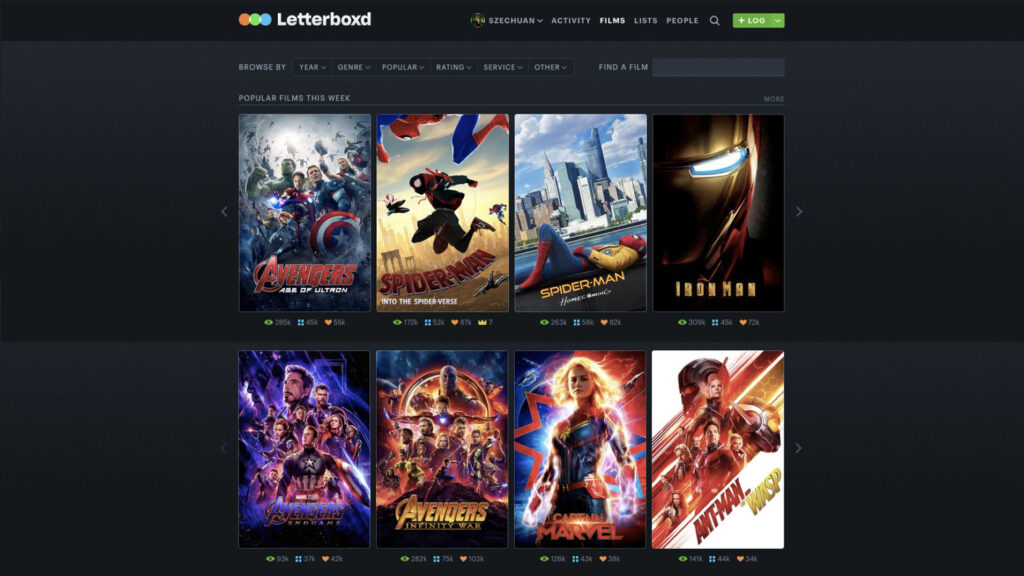
It’s hard to imagine now, living in a time before all movies were basically Marvel movies.
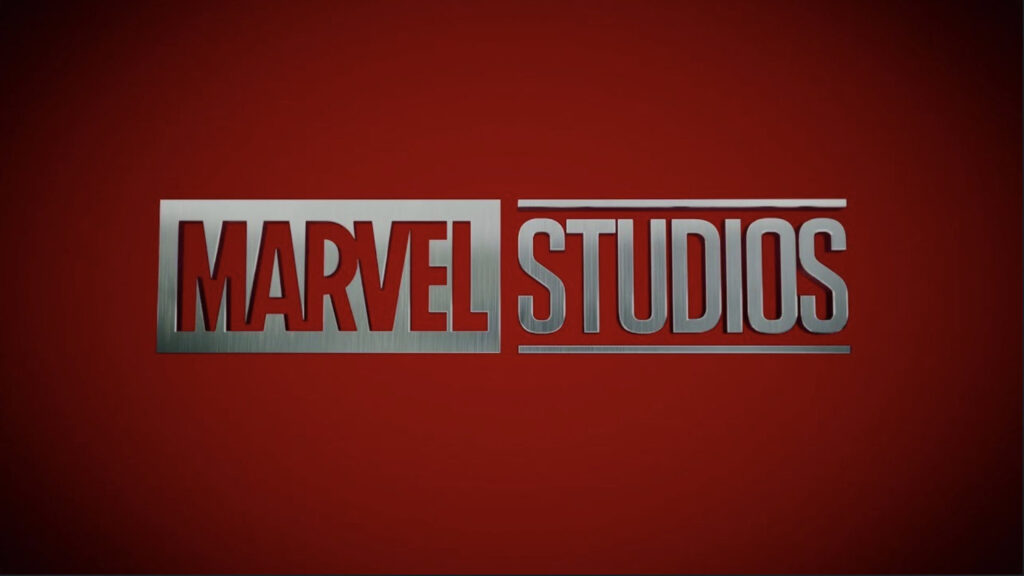
But Marvel Studios started out in the 90s as a licensing company. It sold the rights to Marvel characters to other studios, who turned them into movies. Marvel as a group were in financial dire straits and filed for bankruptcy in the mid-nineties.
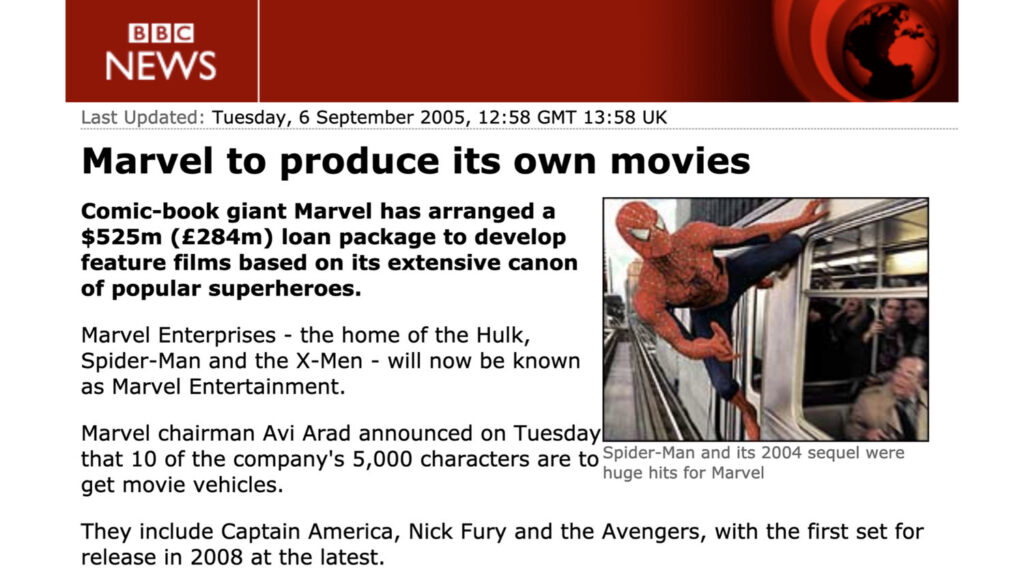
After a massive restructuring, Marvel decided to take some of the characters it had left, and try to self-finance its own films, so that it could keep all of the revenue. Armed with a $525m loan, it announced a ten-property series in 2005.
It was an enormous creative gamble. While comic book characters had always existed in a continuous world, where they moved in and out of each other’s storylines, movie characters did not. They had prequels and sequels, sure. You could do a Superman 1, 2 and 3. But not a shared universe comprising completely different movies and characters.
And basically, other than the Comic Book Guys, no-one had heard of these lesser known superheroes like Doctor Strange.
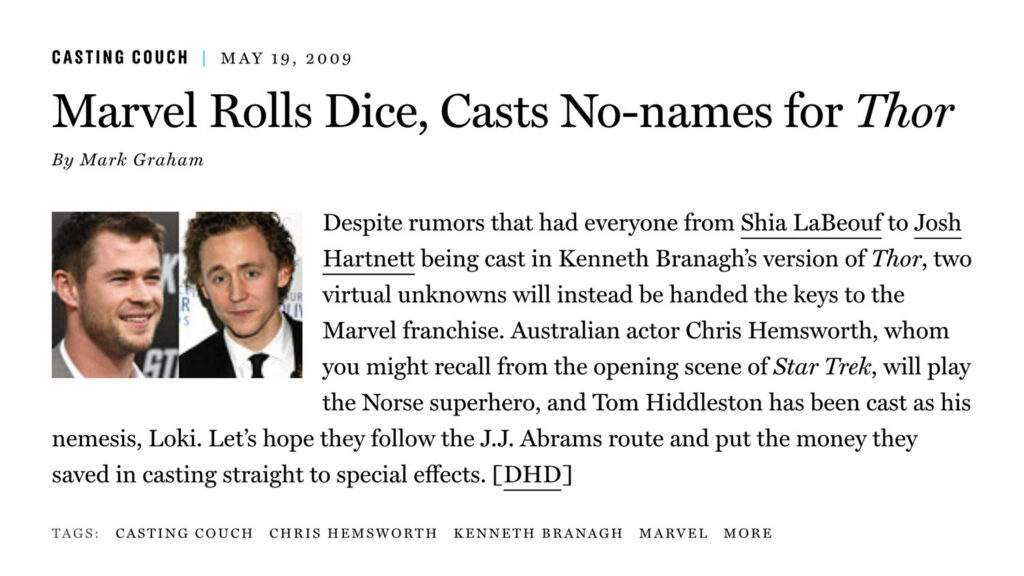
And even fewer people had heard of the proposed cast.

And yet here we are – 22 movies and 20 billion dollars at the Box Office later.
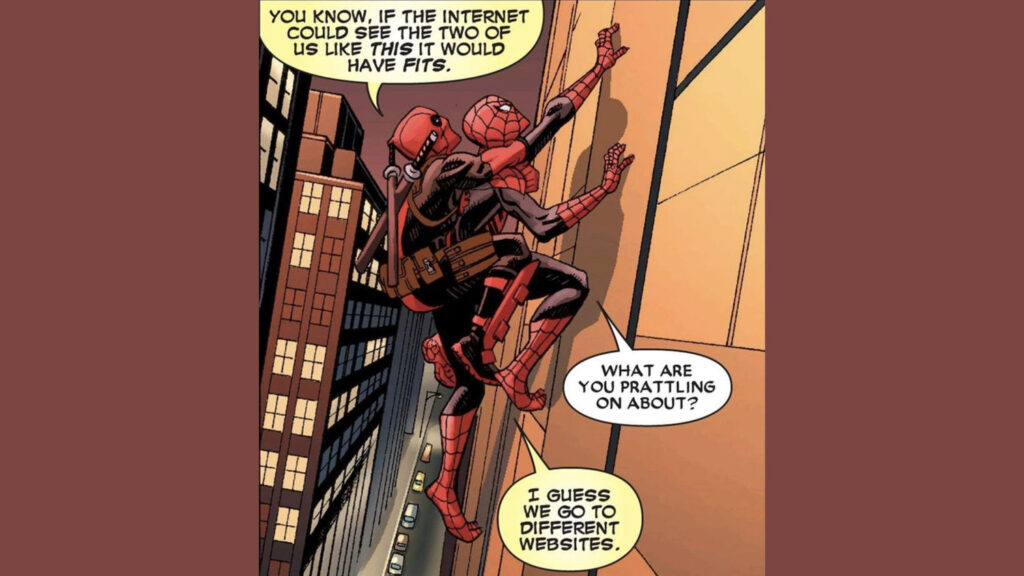
Like so many things in my life, I came to the Marvel Cinematic Universe, or MCU to its friends, through online fandom.
Over the last few years, I started to see more and more incredible fan work being created around the MCU.
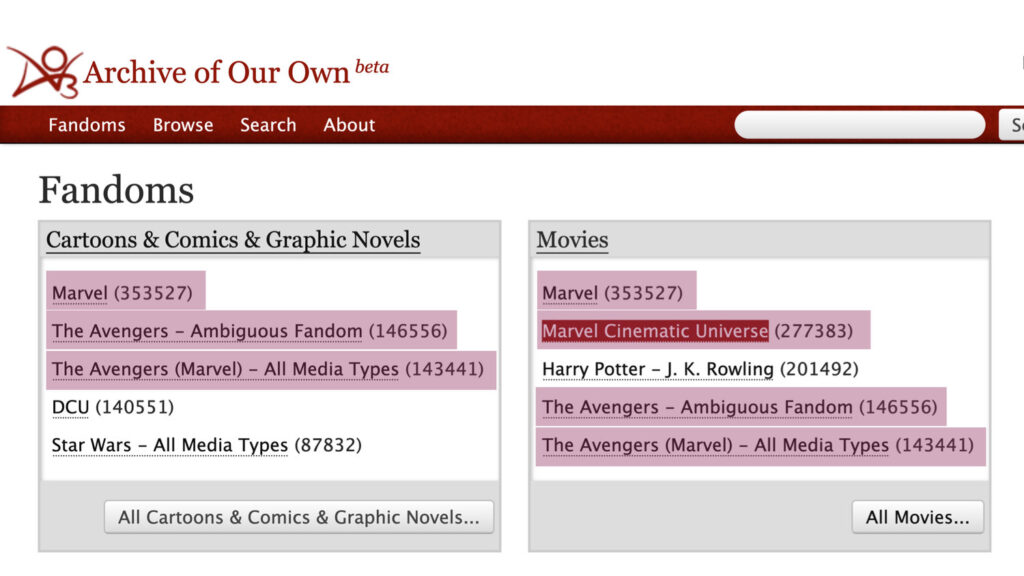
Hundreds of thousands of stories being written.

Absolutely gorgeous digital art.
(credit: Sophia Canning)

(credit: Aliya Chen)
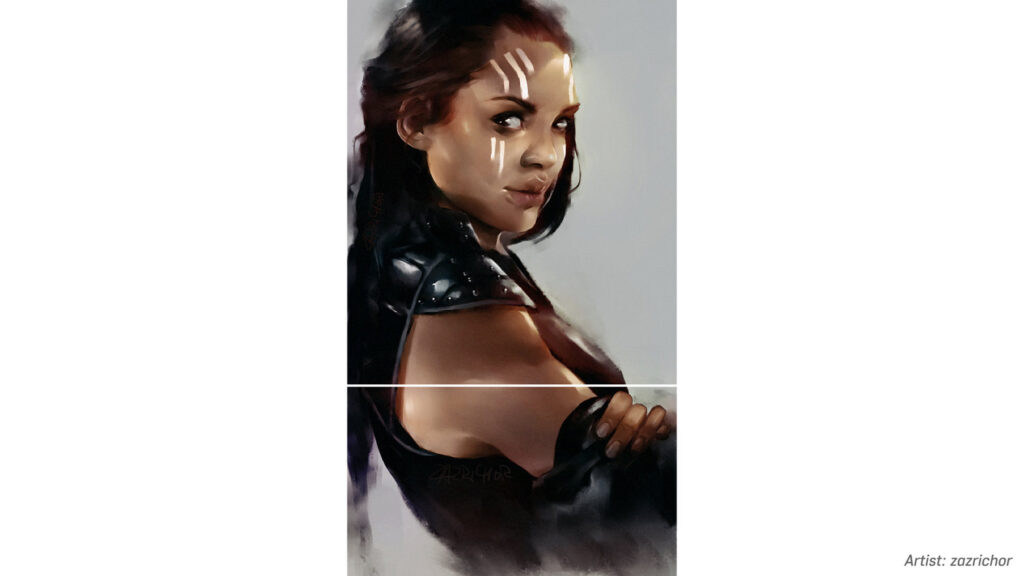
(credit: zazrichor)
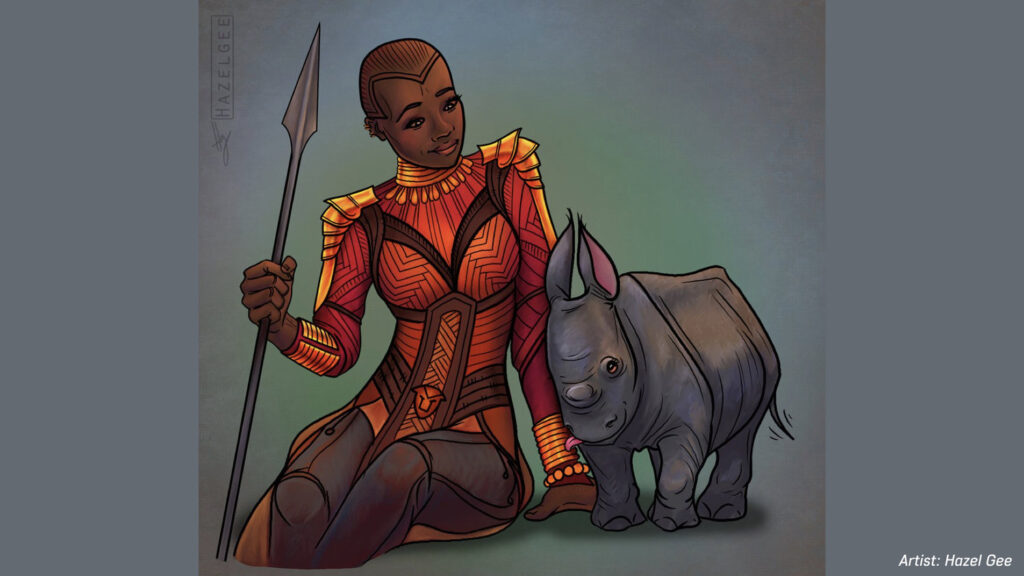
(credit: Hazel Gee)
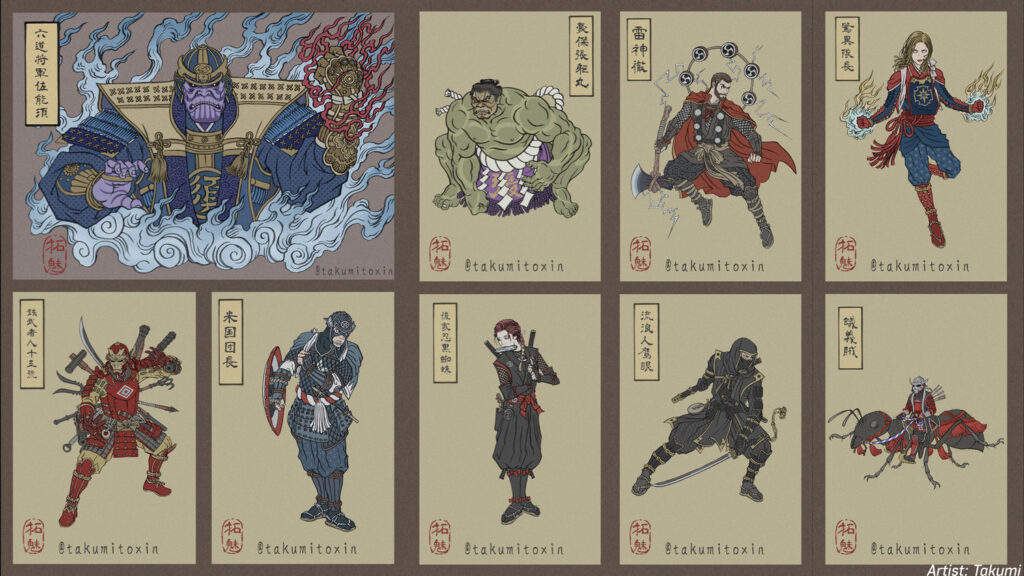
(credit: Takumi)
This kind of fandom is called “transformative” fandom. It takes the original source material and adds to it, breaks and remakes it. Transforms it. Depicts the characters in new situations, imagines “what if?”
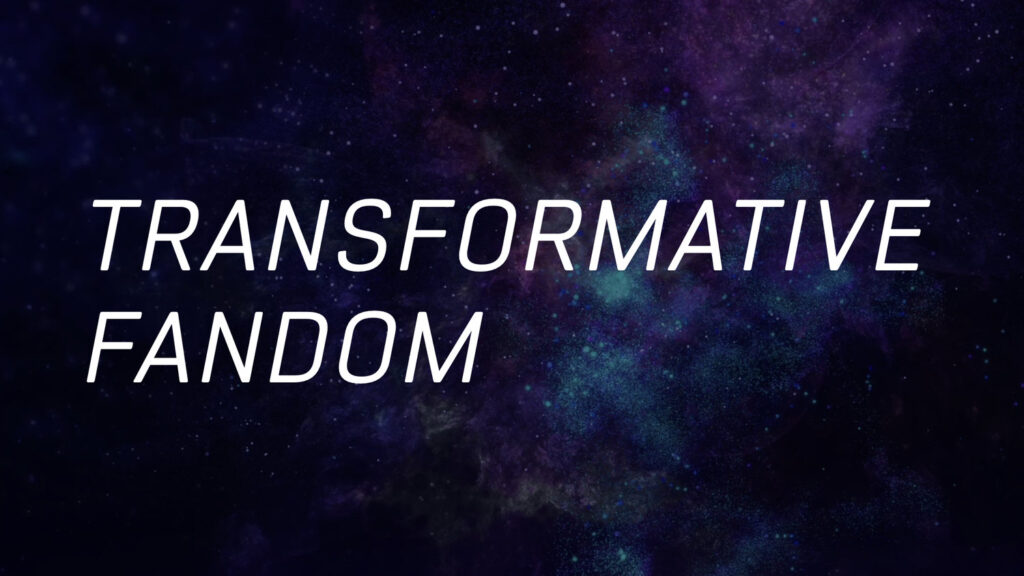
There’s something generative about transformative fandom. Something that’s about ideas and possibilities.
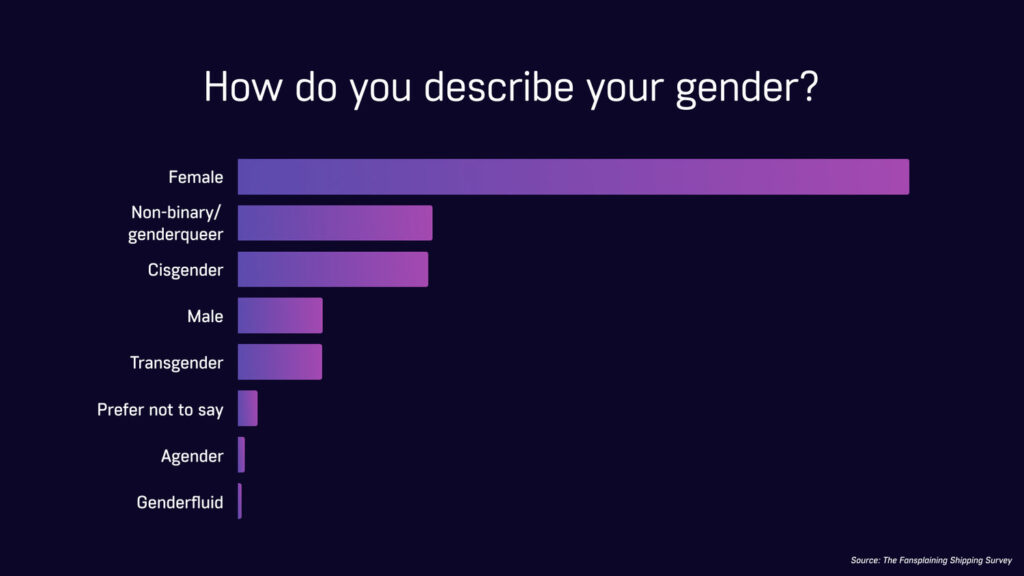
And, generalising, it tends to be female fans and queer fans that are more inclined to engage in this kind of fandom. These are the demographic results of the recent survey conducted by the Fansplaining podcast, which had over 17k responses.
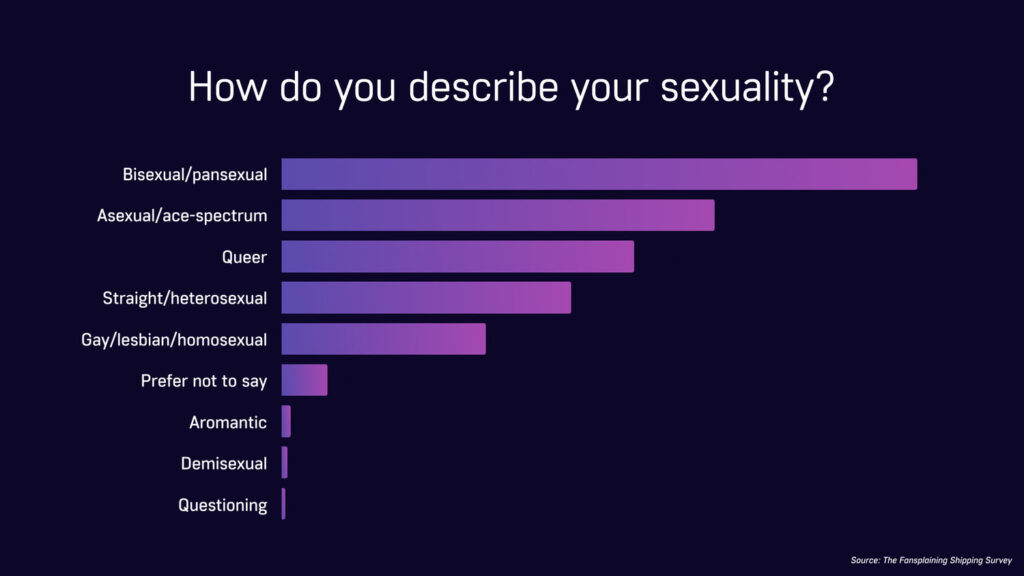
In part, this is because it lets fans create the representation that they don’t see on the page and on the screen. A way of telling their own stories, or versions of the stories, in which they can see themselves.
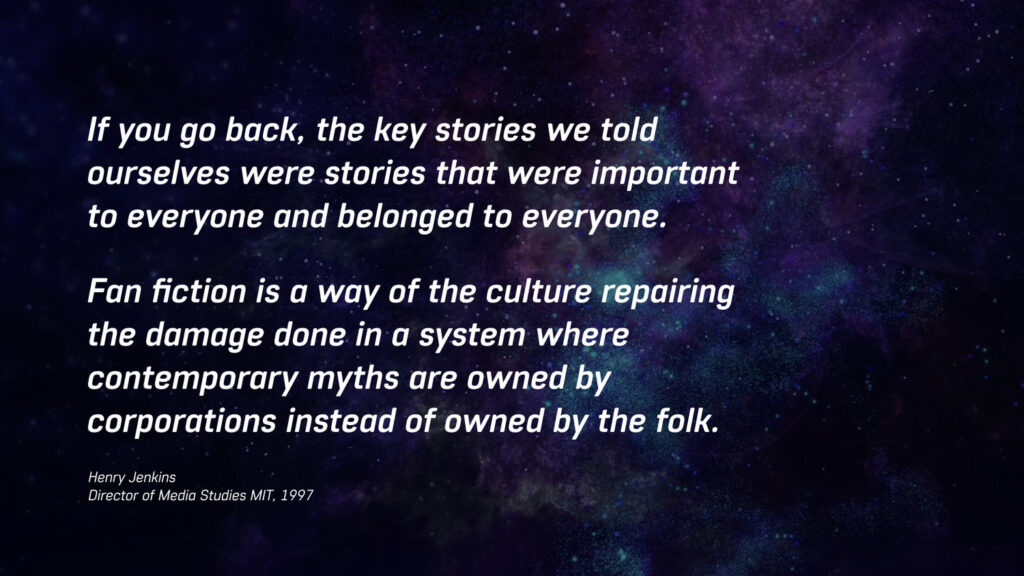
As Henry Jenkins said, way back in 1997, “If you go back in history, the key stories we told ourselves were stories that were important to everyone and belonged to everyone. Fanfiction is a way of the culture repairing the damage done in a system where contemporary myths are owned by corporations instead of owned by the folk.”
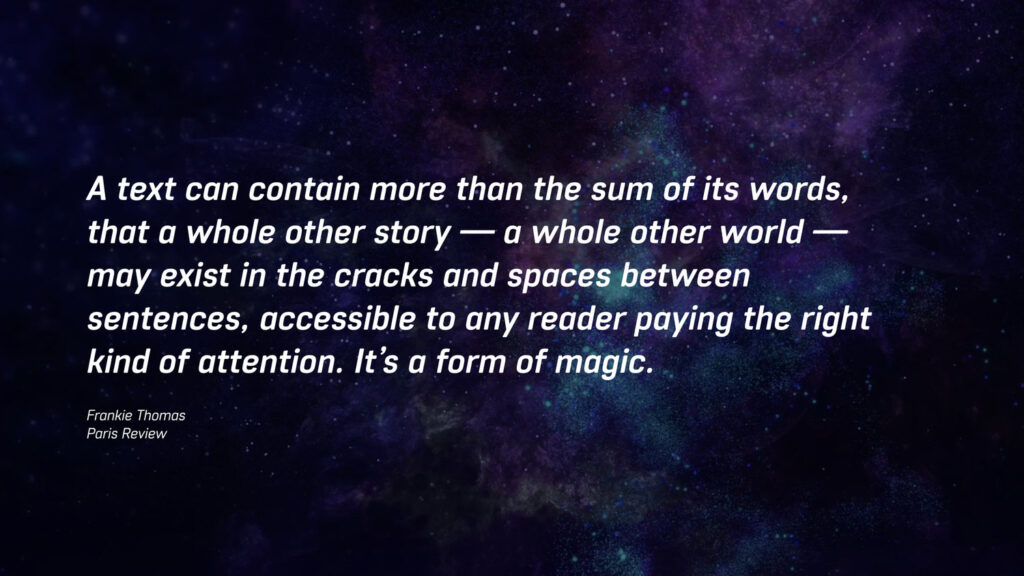
Transformative fandom tells the stories that exist in the cracks.
“A text can contain more than the sum of its words, that a whole other story—a whole other world—may exist in the cracks and spaces between sentences, accessible to any reader paying the right kind of attention. It’s a form of magic.”

And sometimes, transformative fandom exists just because it’s fun.
(credit: @McJesse)
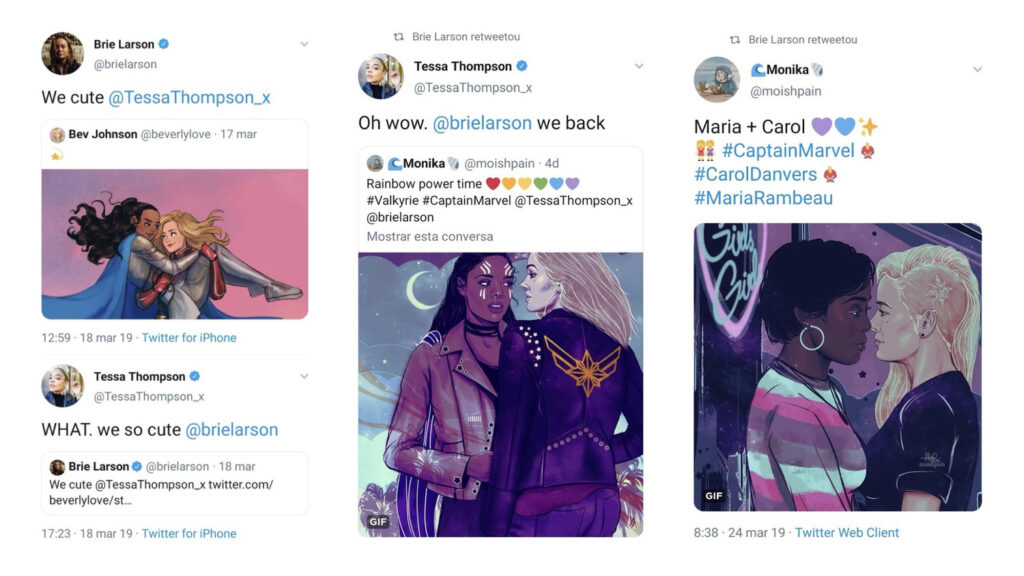
We’ve been on a journey with transformative fandom. At first, authors and publishers and studios weren’t sure how they felt about all of this. There was a lot of push back. Attempts to stop this kind of work as infringing copyright and so on.
But now we’re here, a world in which the two actors playing characters in these movies are openly sharing and celebrating fan art on social media that depicts them in relationships never seen on screen.
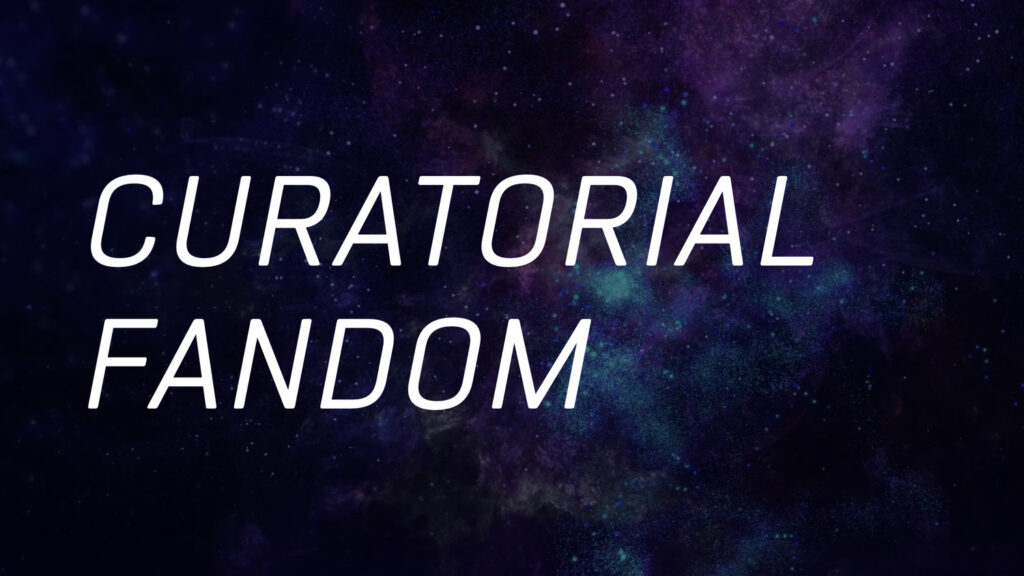
When we think about fandom, we can categorise it broadly (I’m generalising wildly, but go with me for a moment) into two different kinds – this transformative kind. And then…
The other, more traditional kind of fandom, is what we call curatorial fandom. This is what one of my friends referred to recently as “anorak” fandom, which is very British way of describing it. It celebrates the fans who know the most facts, who are the most expert about the canon. Sports fans are great examples of curatorial fans – where you’re prized for knowing player statistics and starting line-ups. Star Wars fans, who can tell you all about the extended universe and which bits contradict what. Marvel fans who can explain to you how an arc reactor works, or…

… or who the strongest Avenger is.
Generalising, curatorial fans tend to be men.
Of course, in an ideal world, all of this glorious fannish activity would co-exist happily.
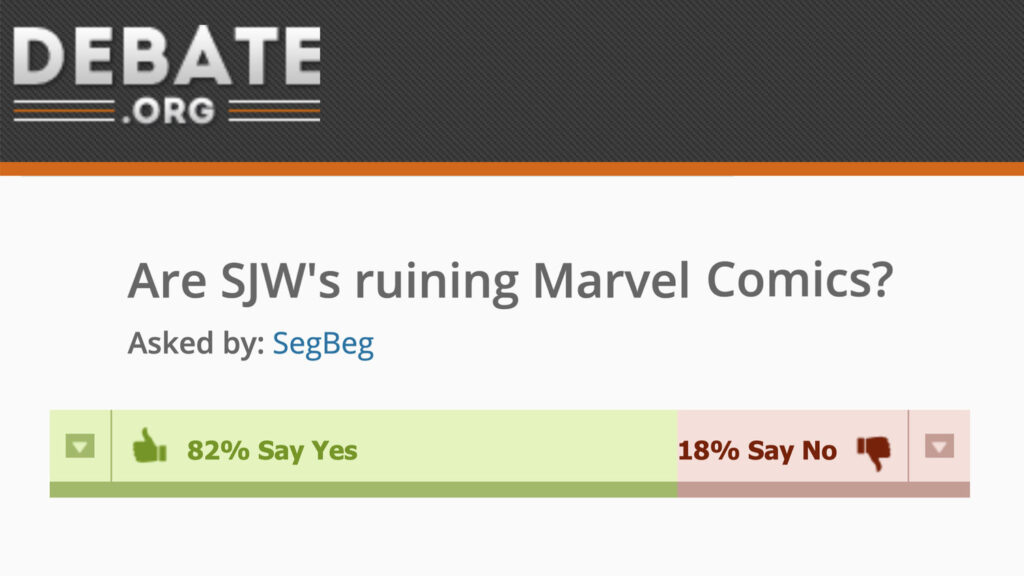
Unfortunately, for some fans, the Marvel Cinematic Universe is descending into chaos and it’s got nothing to do with Thanos. For the uninitiated among you, SJW stands for “social justice warriors” a label slapped on pretty much anyone interested in progressive ideas.
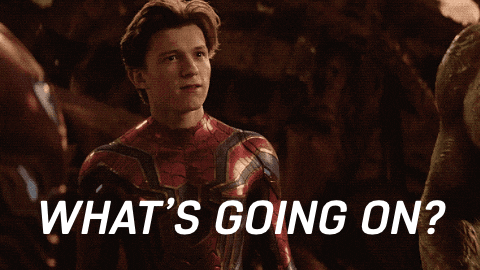
So, what’s going on?
We get the backlash whenever we get new bits of canon: new Star Wars movies, a new Ghostbusters.
The backlash comes from curatorial fans. They don’t like the idea that canon is changing, or that the things they’ve learned and know to be true are changing.
Remember, in their framework, being a “Good Fan” means knowing all the things. If you’re changing the canon, you’re undermining that and need to be stopped.
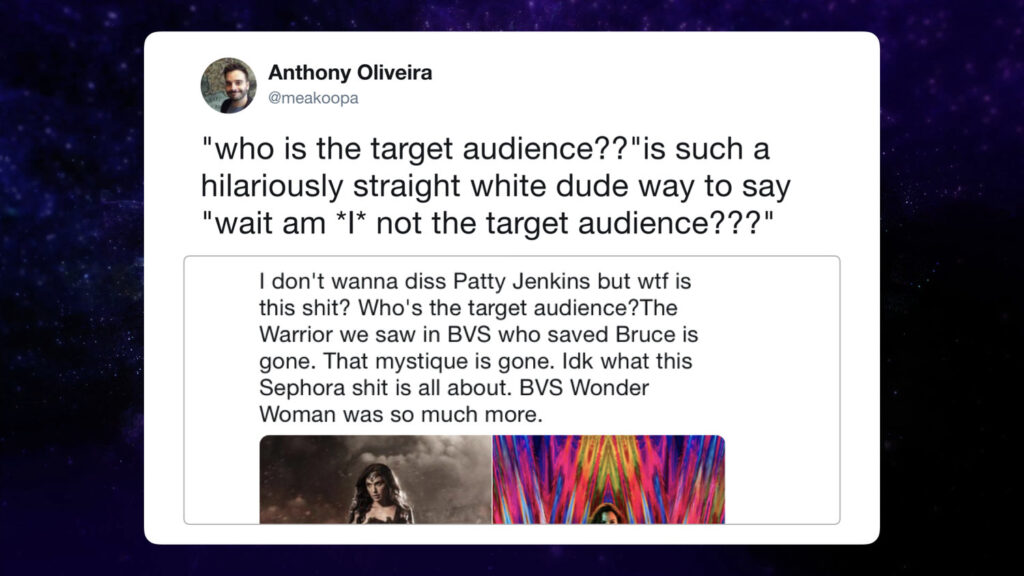
Then you have to add in that popular culture is also changing (not as fast as we’d like) and so we’re getting more diverse casts, the inclusion of characters of colour and queer characters. We’re seeing a tiny bit less of the straight white man. And there’s a perception that these changes are “ruining” the stories that curatorial fans love, because they’re used to seeing themselves on screen.
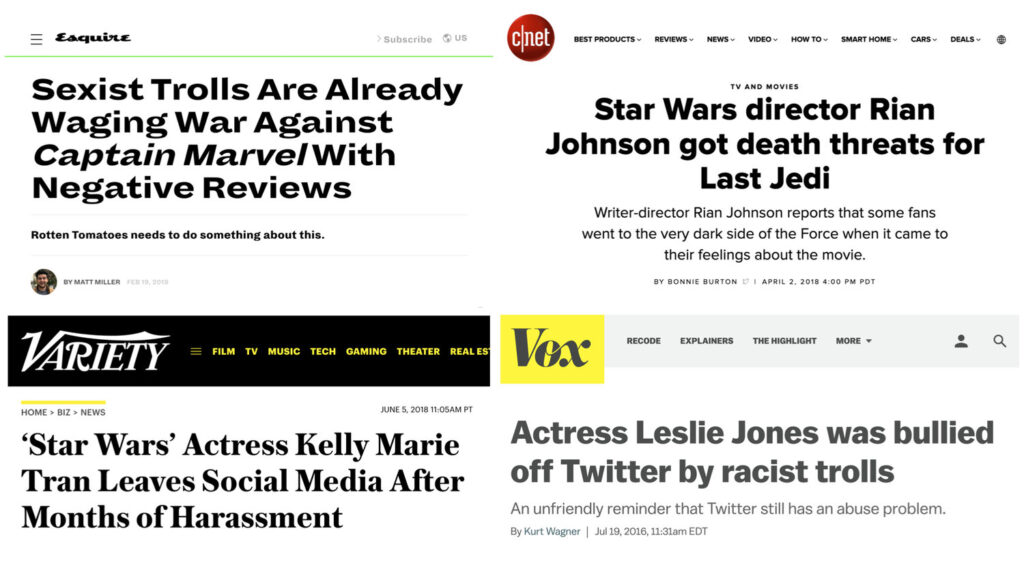
So they lash out at these actors, and at the directors and creators.
Now – I want to make an important and giant qualifier here. I am not suggesting that transformative fans are flawless, or that there aren’t significant problems in transformative fandom, particularly with racism. Transformative fandom is overwhelmingly white, and that can lead to ugly behaviour, and I’m going to talk about that more in a minute. Transformative fans deeply invested in the relationships they support can be just as awful to tv showrunners and actors when the show doesn’t take the direction they want. There are angels and demons on both sides of this divide.
But what we’re seeing with these angry curatorial fans is a kind of gatekeeping. The idea that there’s a right way and a wrong way to appreciate these stories.
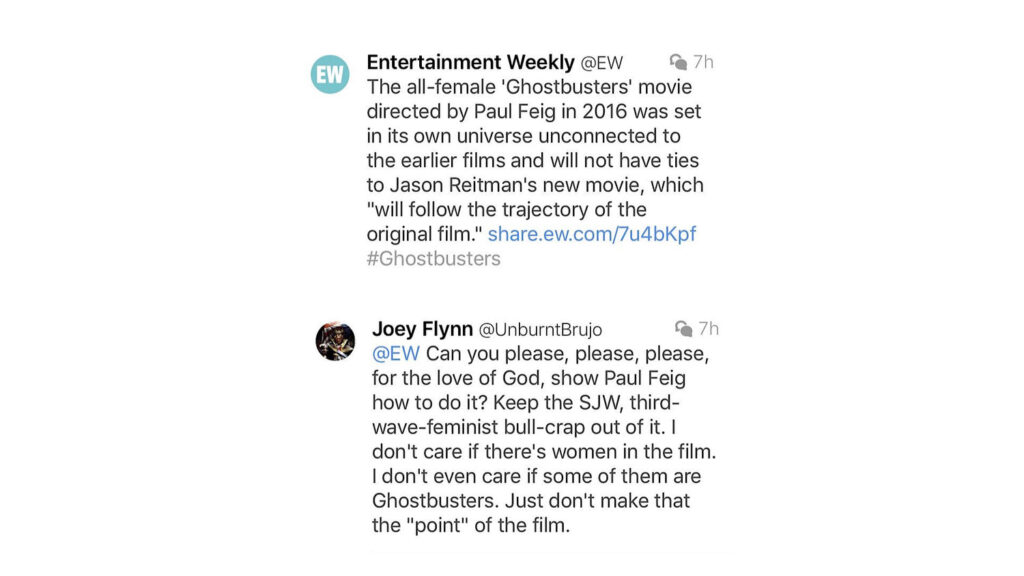
Let’s look at a recent example.
Recently it was announced that Jason Reitman would be directing a new back-to-being all male version of Ghostbusters. And the public reaction online from curatorial fans looked a lot like this. “Keep the feminist bull out of it. Don’t make women the “point” of the story.”
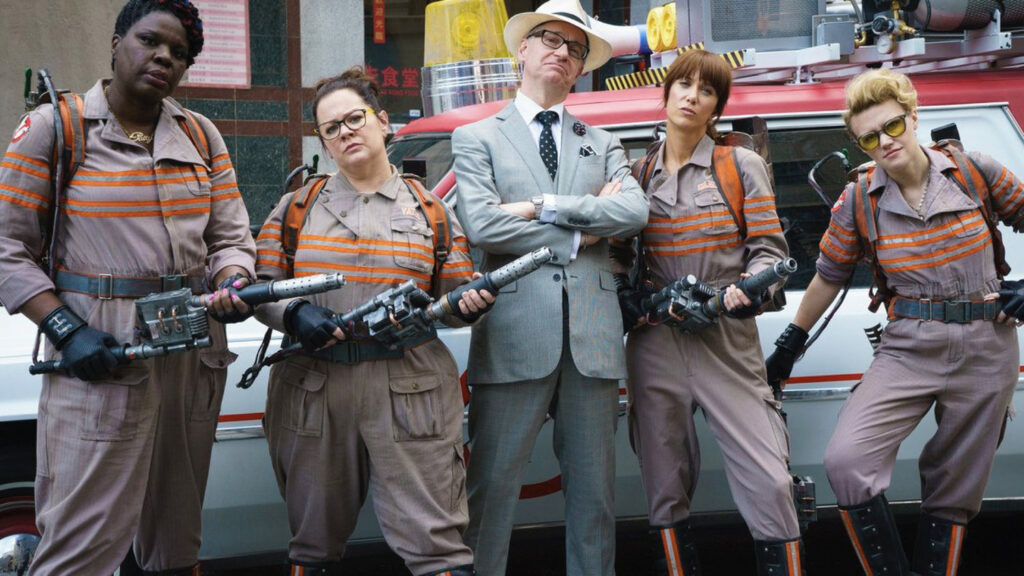
And Reitman totally validated this, by saying:
“We are, in every way, trying to go back to the original technique and hand the movie back to the fans,” “I love this franchise. I grew up watching it; I consider myself the first Ghostbusters fan… I want to make a movie for my fellow Ghostbusters fans.”
Here’s the question. Who are your fellow Ghostbusters fans? Who are you taking it from to hand it back??
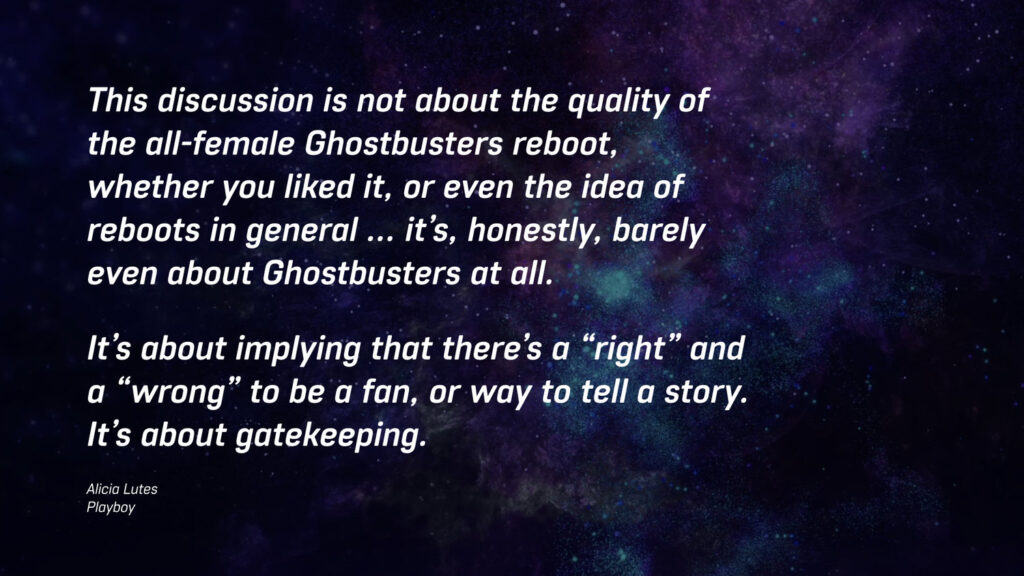
As Alicia Lutes wrote, “This discussion is not about the quality of the all-female Ghostbusters reboot, whether you liked it, or even the idea of reboots in general … it’s, honestly, barely even about Ghostbusters at all. It’s about implying that there’s a “right” and a “wrong” to be a fan, or way to tell a story. It’s about gatekeeping”
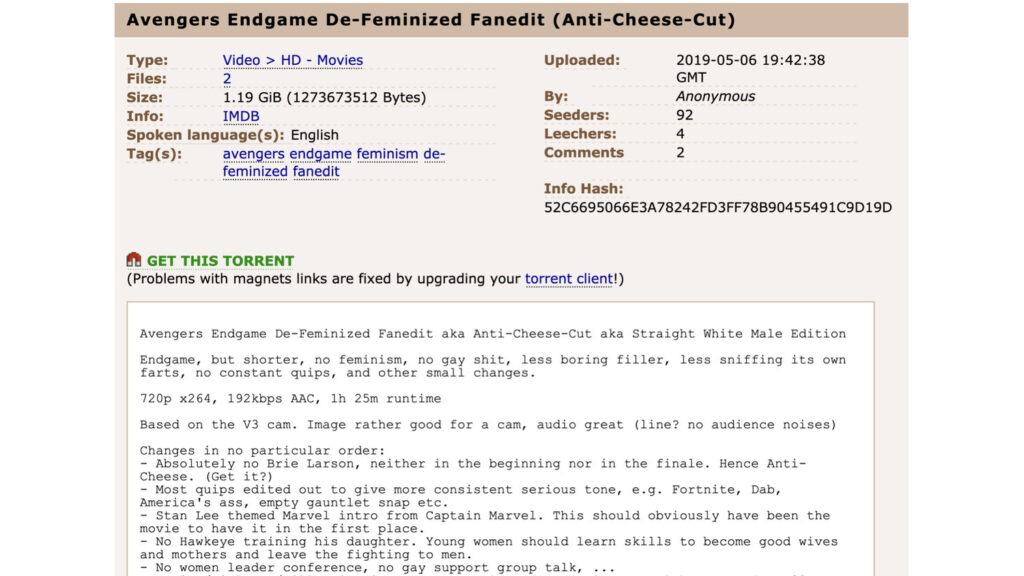
At its most preposterous, this attitude leads some “true” fans to cut versions of The Last Jedi and Endgame that remove all of the troubling social justice content.
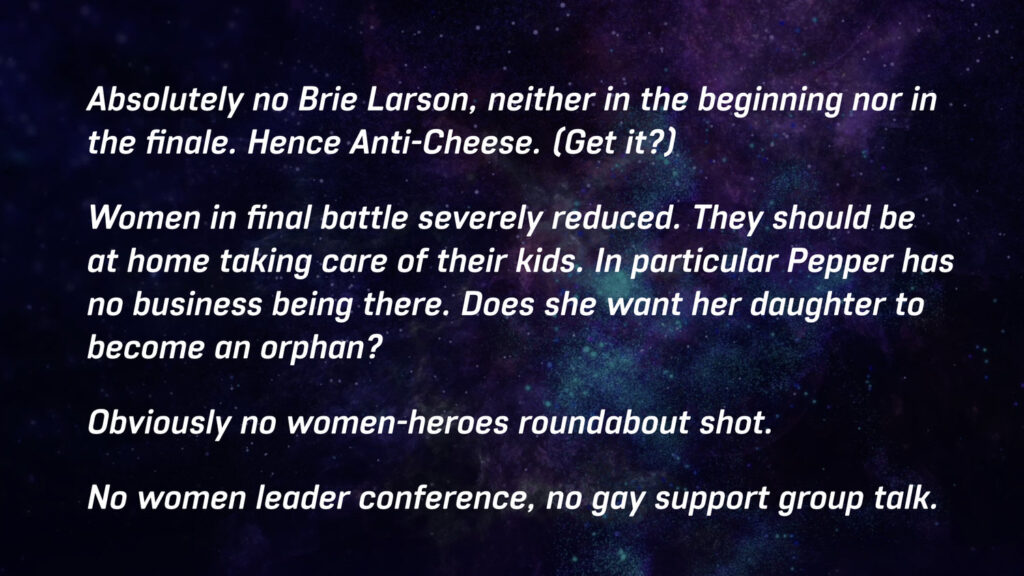
This version of Endgame weighs in at a lean 1 hour 25 minutes, half the length of the actual movie, and apparently contains no Brie Larson. No women at all, actually. And definitely no gay support group.
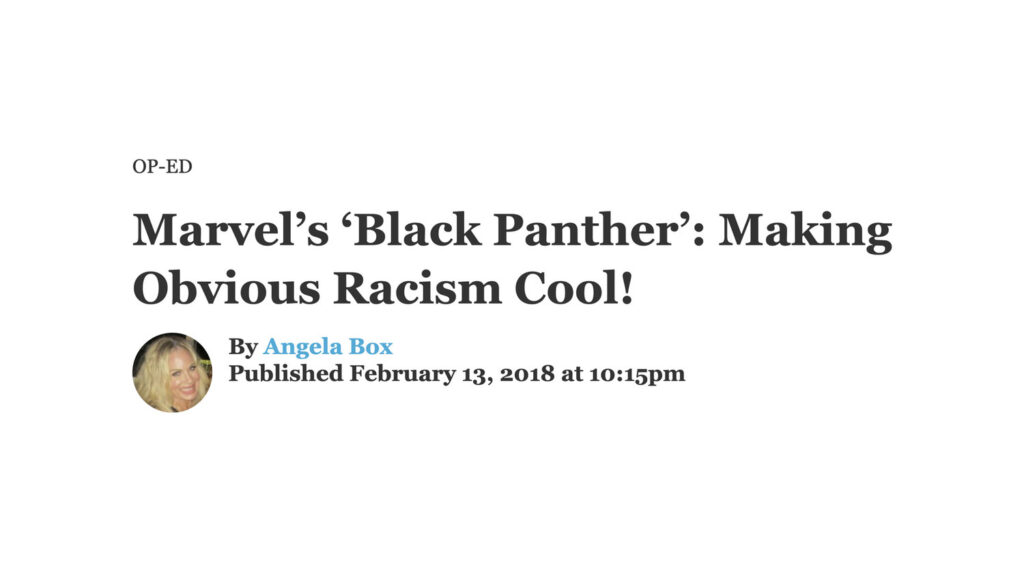
So now Marvel is the latest franchise to be under the gun.
First the blatantly racist criticism of Black Panther.
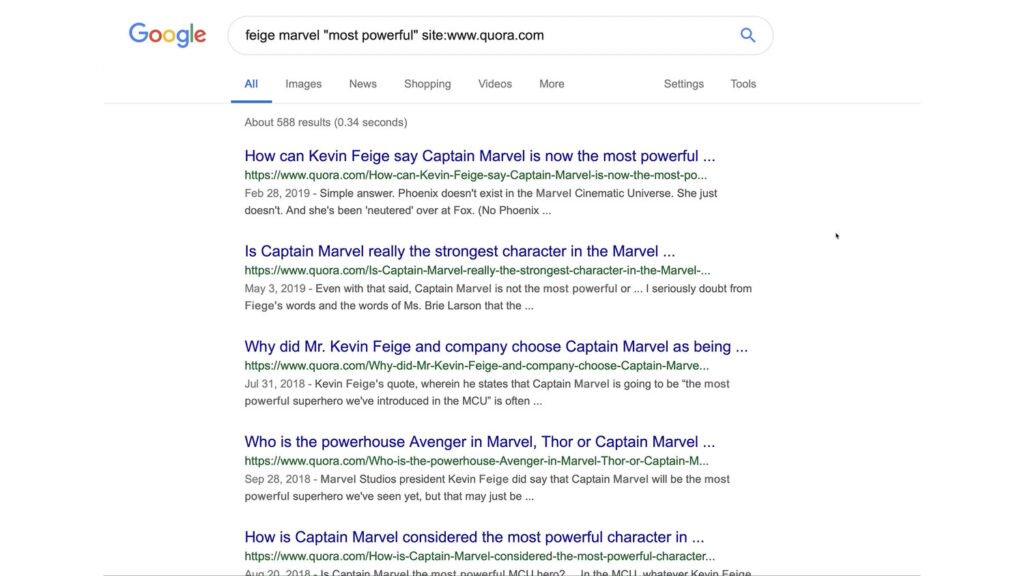
And then Captain Marvel stepped into the firing line.
Producer Kevin Feige announced that Captain Marvel would be the most powerful hero the MCU had yet seen. And let’s say the curatorial fans were not best pleased.
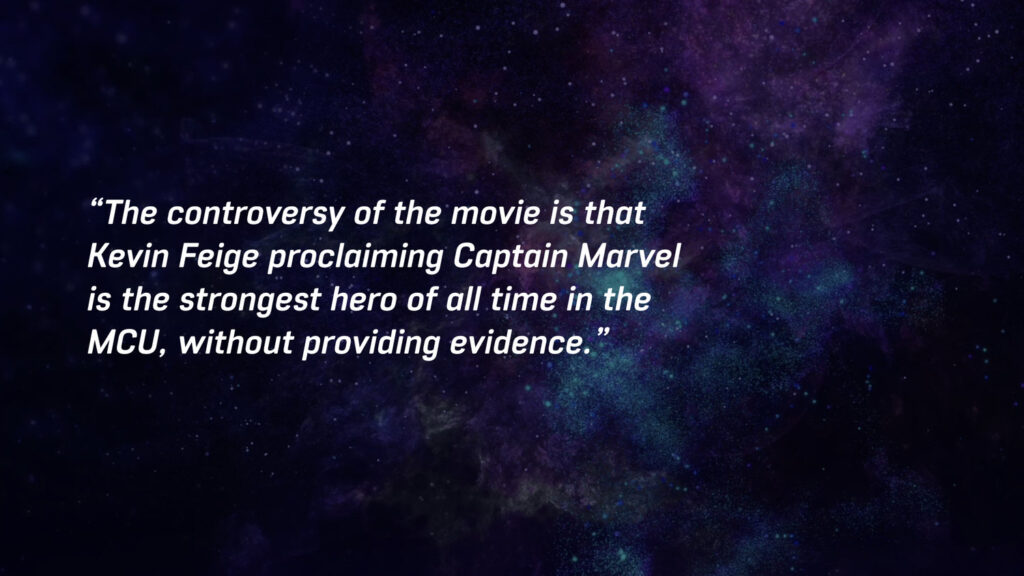
Many fans were outraged that he’d announce something like this “without providing evidence.”
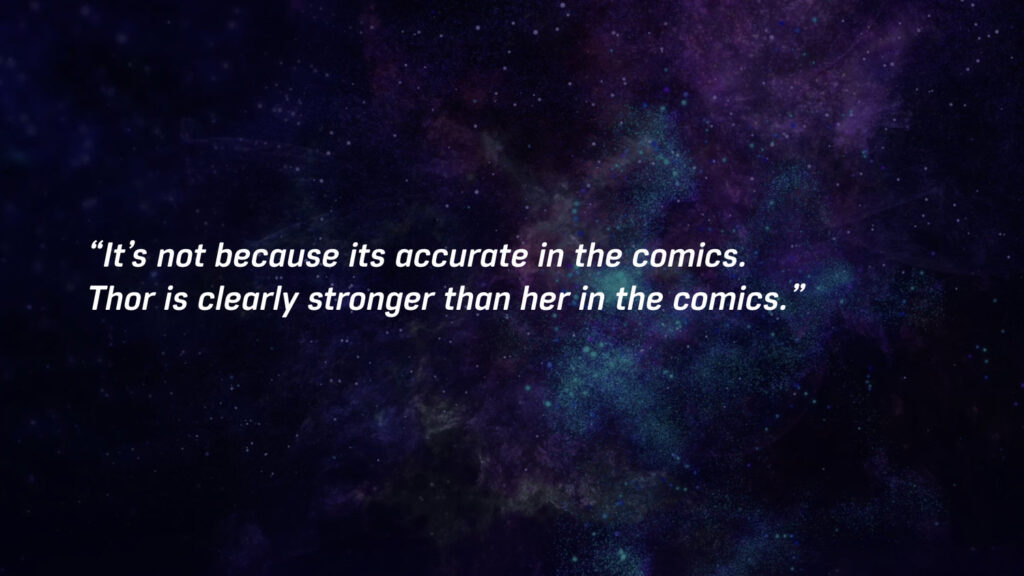
Many were furious because “It’s not because its accurate to the comics.”
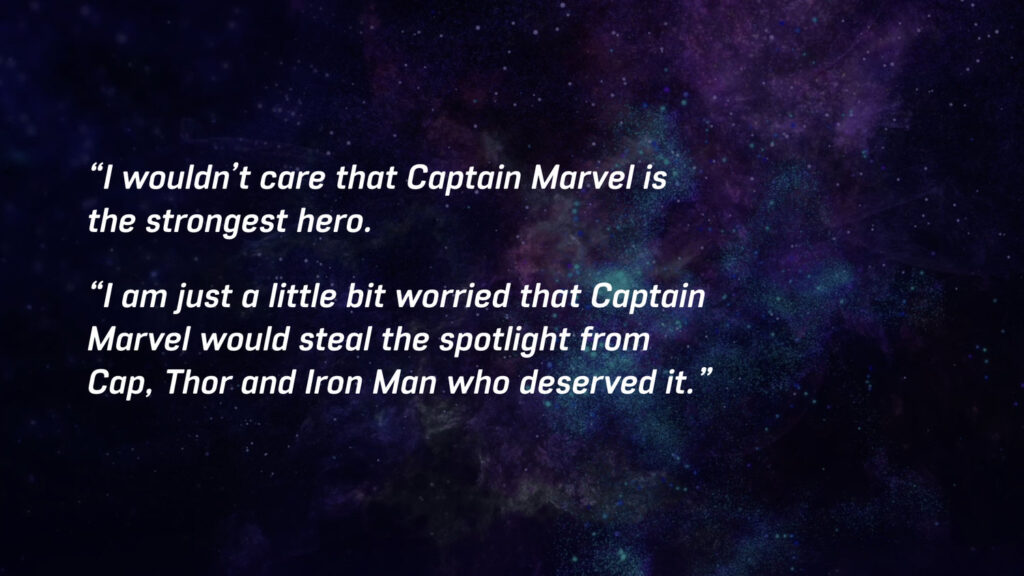
And still others felt that it was deeply unfair to the existing characters Cap, Thor and Iron Man who deserved the spotlight.

Brie Larson, the actor playing Captain Marvel, fueled their anger, taking an active role in inviting interviewers on the press junket who were not just white men,

And speaking actively about the need for queer representation in the MCU.
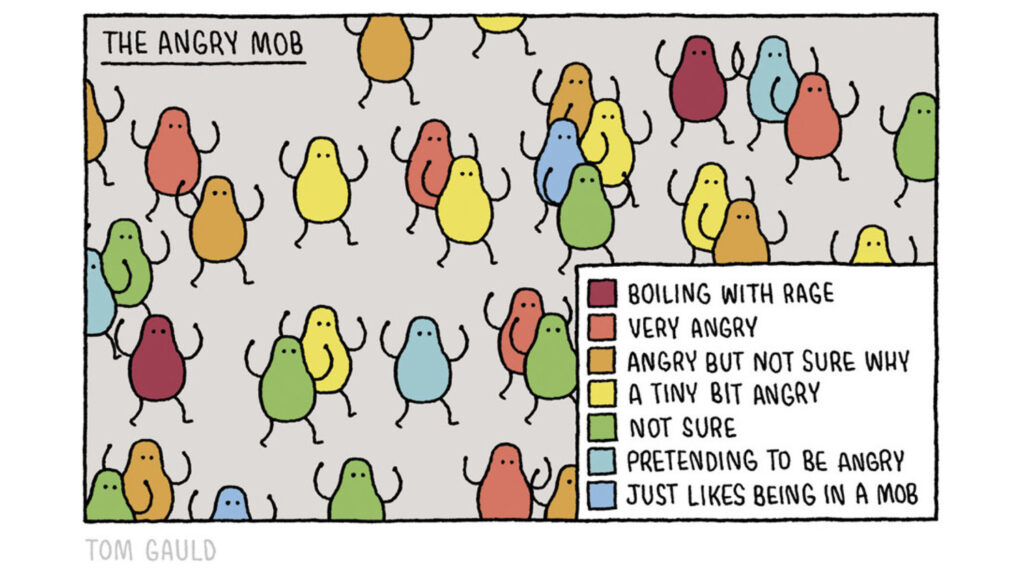
And you can imagine how that went down.
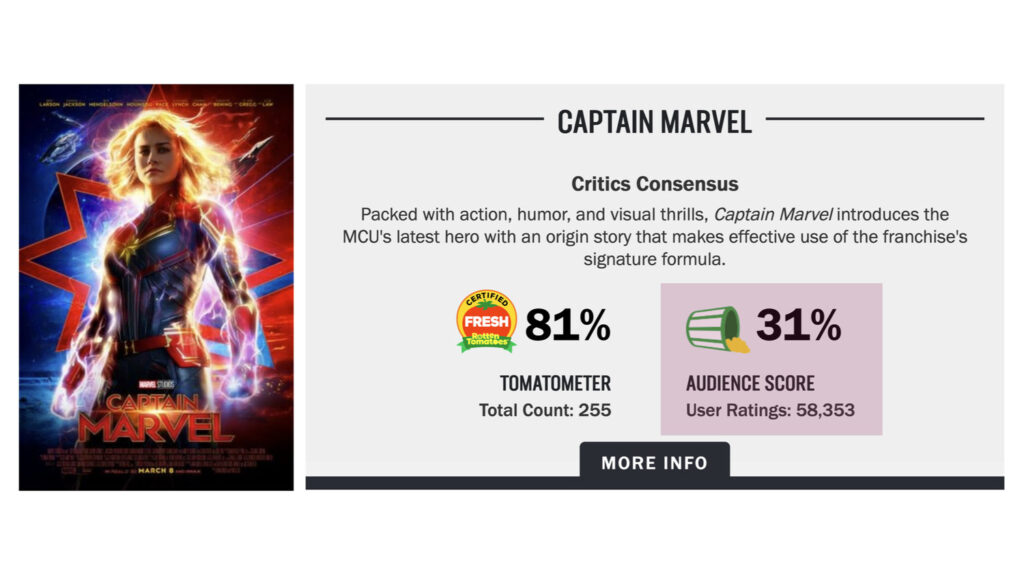
Curatorial fans downvoted Captain Marvel so aggressively ahead of its premiere that Rotten Tomatoes had to disable its pre-release voting mechanism.

Here’s the interesting thing, though. Of course these fans are wrong.
Stan Lee the iconic creator of some of Marvel’s most beloved characters was speaking openly against racism and anti-semitism way back in the 60s
He said: “Bigotry and racism are among the deadliest social ills plaguing the world today. But, unlike a team of costumed super-villains, they can’t be halted with a punch in the snoot, or a zap from a ray gun. The only way to destroy them is to expose them — to reveal them for the insidious evils they really are.”
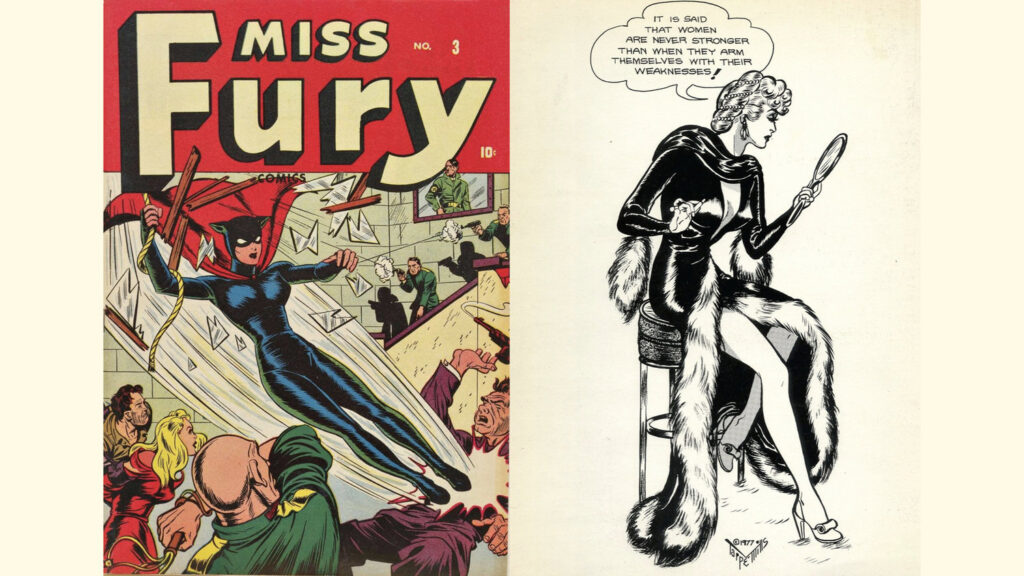
Even before that, in the Golden Age of comics, a woman was the creator and writer of Miss Fury. Miss Fury could fly a fighter plane when she had to, jumping out in a parachute dressed in a red satin ball gown and matching shoes. She was also a crack shot. Half way through the series, Marla got a job, and – astonishingly, for a Sunday comic – became a single mother.

Over the decades, Jane Foster has taken a turn as Thor.

Captain America’s best friend has been gay for over thirty years.
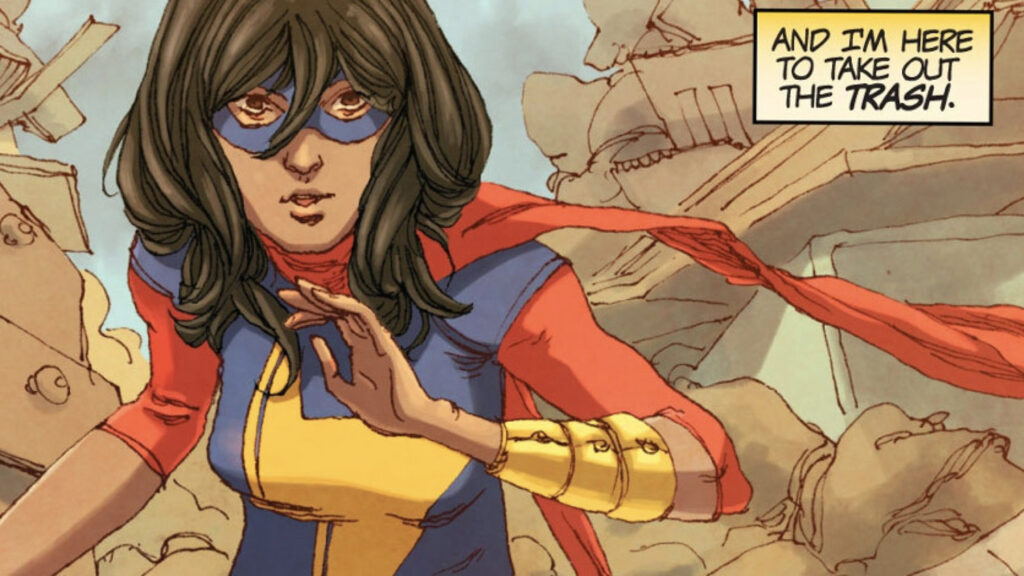
Ms Marvel, the comic book about a female muslim superhero, topped the New York Times bestseller list.
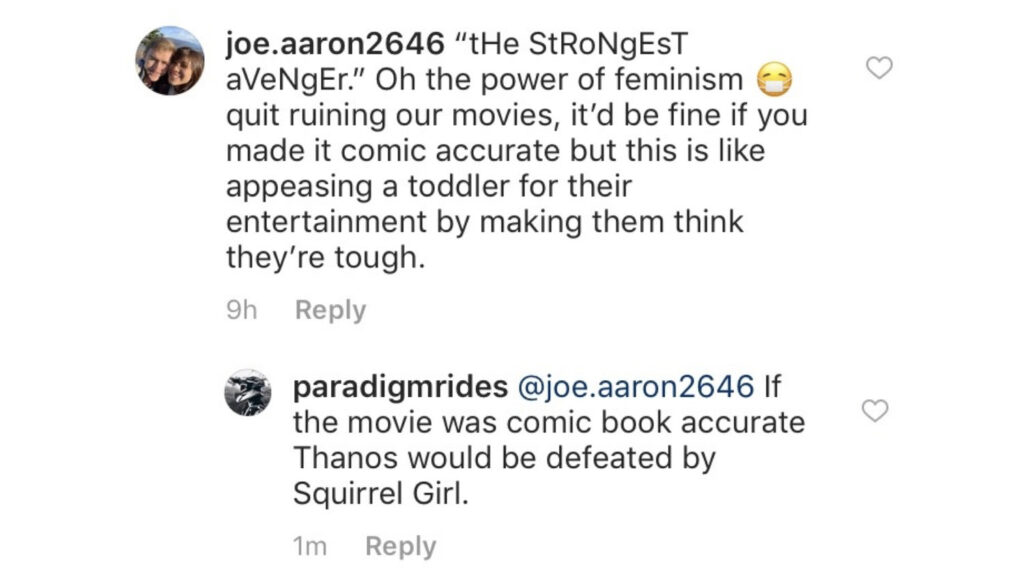
And let’s come back to our friends who were so worried about who the strongest avenger really is, and who gets to beat Thanos.
According the comics – the actual, accurate, comic book answer? Squirrel Girl.
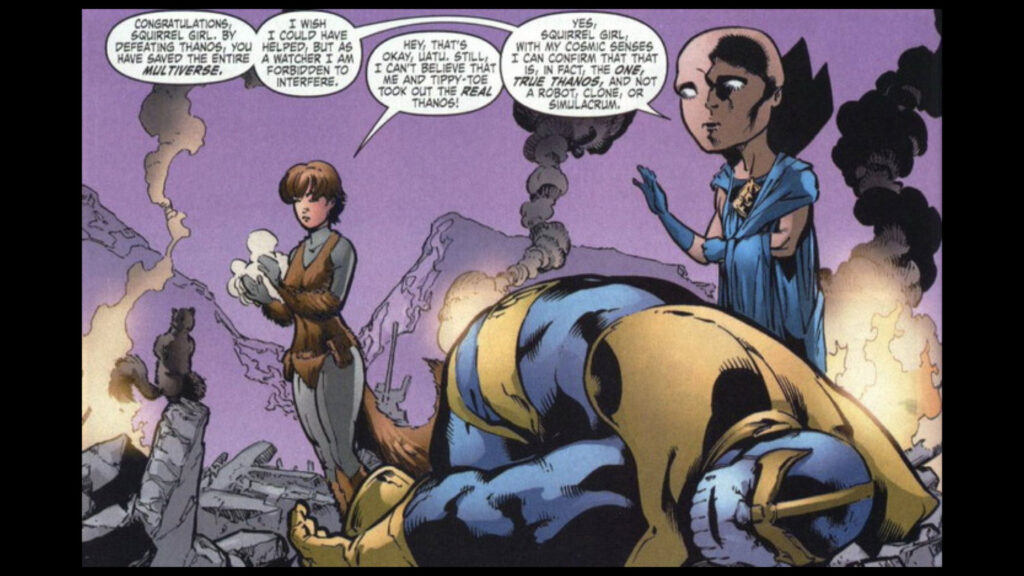
Yes. Squirrel Girl.
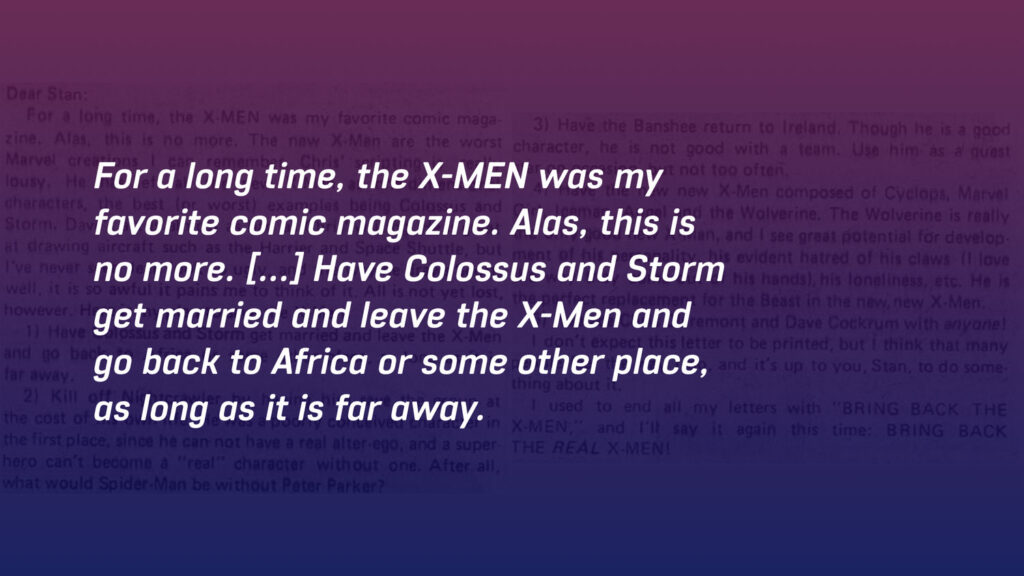
Anyway – none of this is a new conversation – here’s a fan calling for less diversity from Marvel in the 1970s. While another is just delighted to finally see herself on the page.
And I don’t want to tar all genuine comic fans with the same brush. Many of them are awesome.
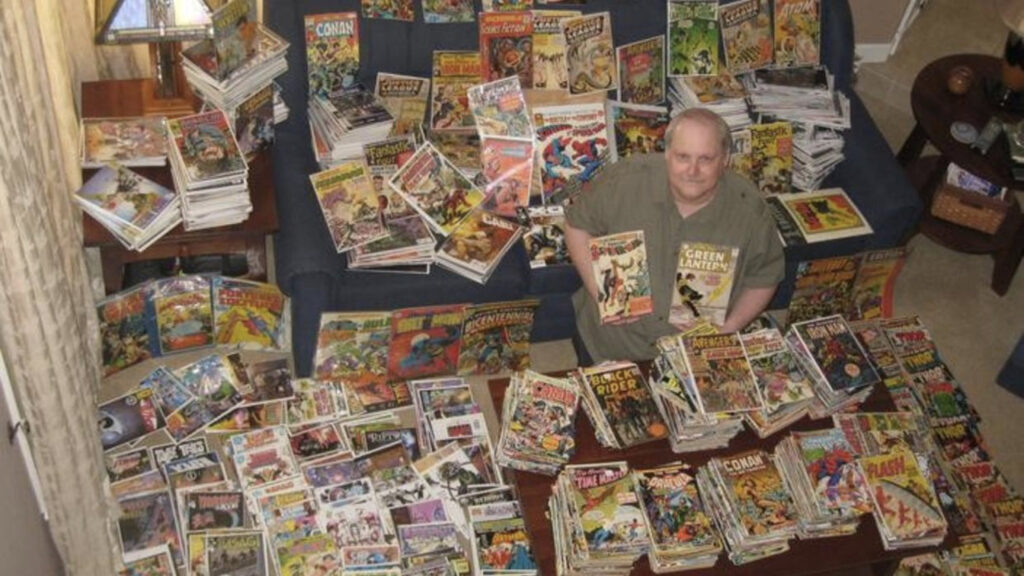
Bob Bretall is 56, owns the world’s largest personal comic book collection, and loves diversity.
He said in a recent interview: “I love Riri Williams as Ironheart. I love Squirrel Girl. I love Jane Foster as Thor. And I am really, really happy whenever I open up the letters page and I see little girls or little boys with a picture of themselves in a Squirrel Girl costume…I don’t sit back and say ‘Gee, in my day, Iron Man was a white guy. I’ve got probably a thousand Tony Stark Iron Man comic books. I don’t need to have them print another one of those for me.”
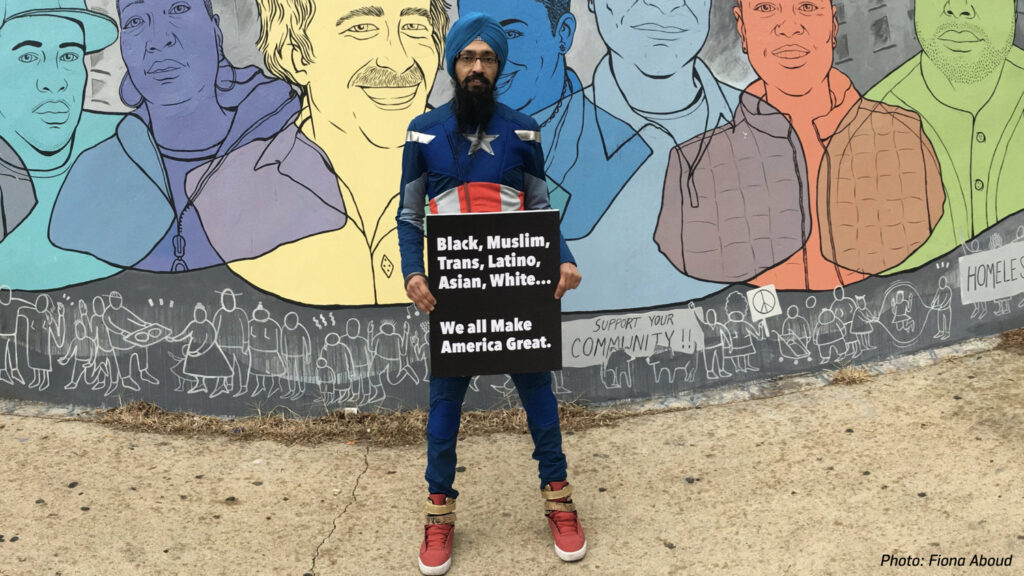
But unfortunately there’s still a powerful category of people who are determined to insist that we should get our politics out of their comic book movies.
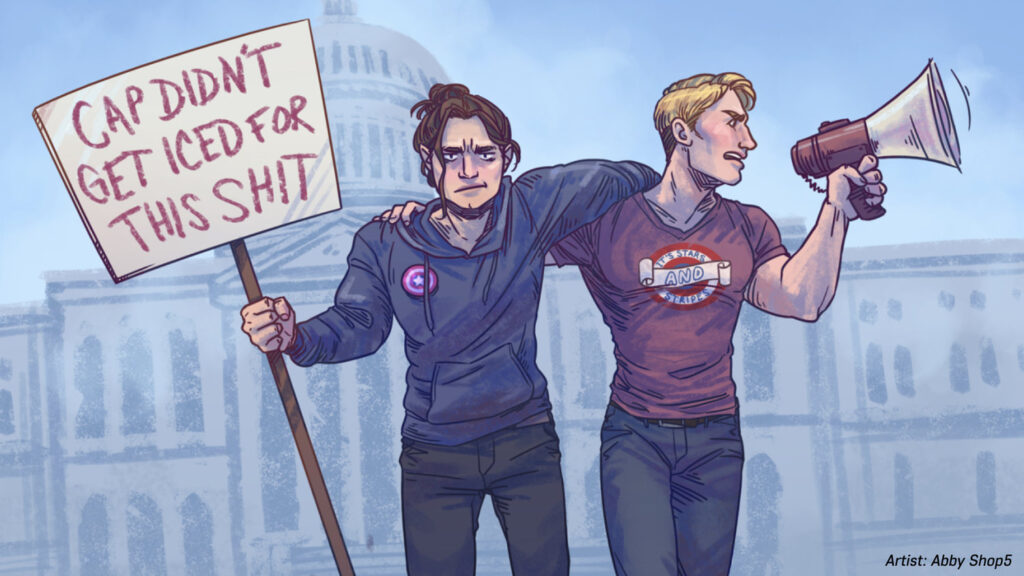
There’s no such thing as apolitical entertainment. As soon as you’re deciding that the pop culture we enjoy shouldn’t reflect the world around us, you’re making a political decision.
(credit: Abby – Shop5)
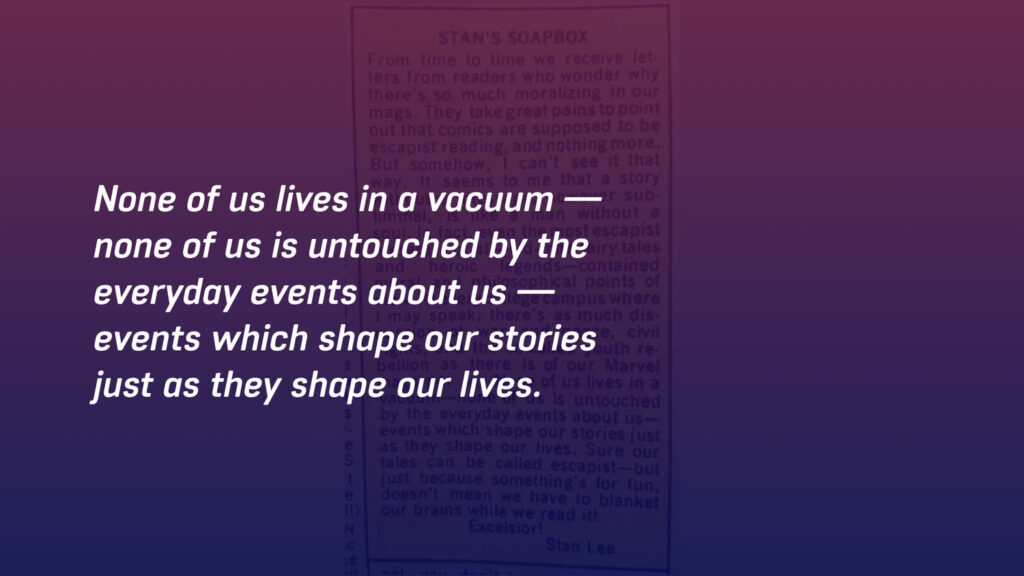
That these are “escapist fantasies”, or that escapist fantasies are politically neutral, is a myth Stan Lee saw right through.
“From time to time we receive letters from readers who wonder why there’s so much moralising in our mags. They take great pains to point out that comics are supposed to be escapist reading and nothing more. But somehow, I can’t see it that way…
None of us lives in a vacuum — none of us is untouched by the everyday events about us — events which shape our stories just as they shape our lives.”
And I think this is a really fascinating lens through which to look at what’s going on with our tech platforms, and the way we build our products and services.
Because we’re seeing exactly the same arguments play out as the private companies who have built and now control all of our social infrastructure continue to try to make the argument that they are platforms, not publishers. That it’s not for them to decide the merits of an argument someone wants to make or amplify using the tools that they’ve built. That they have no role in deciding what kind of shops they want to host, what kind of sites they want to protect.
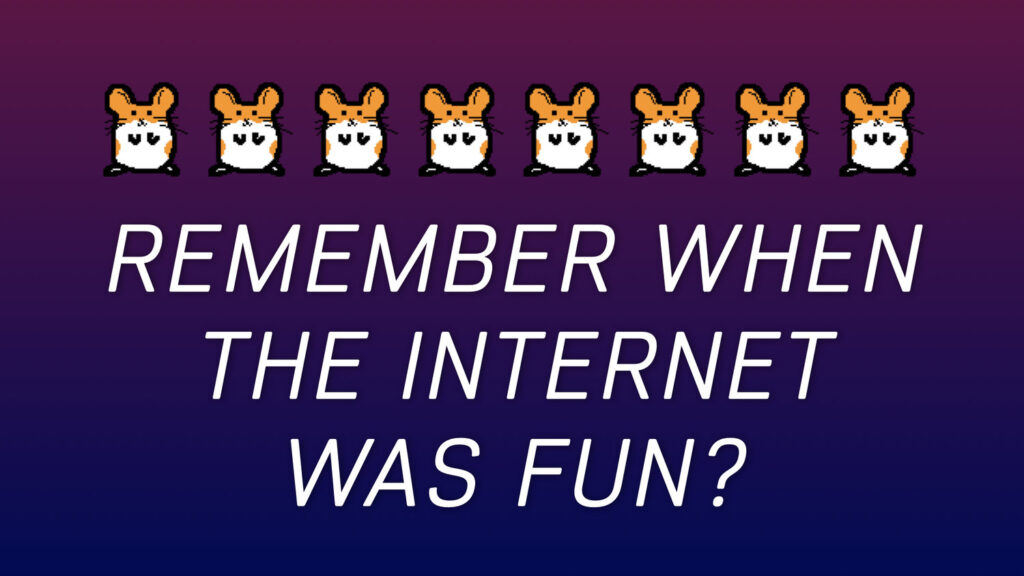
Remember when the people in this room were probably the only people in New Zealand on Twitter?
Remember when Facebook was a cool way to find friends you hadn’t seen since highschool and not a way to destroy democracy and speed up genocides? Remember when Tumblr was a delightful meme machine? Remember Flickr before Yahoo killed it?

Remember when Twitter was just the way a perfect joke could spread. And not a hellscape in which people are harassed and lies and misinformation are spread.
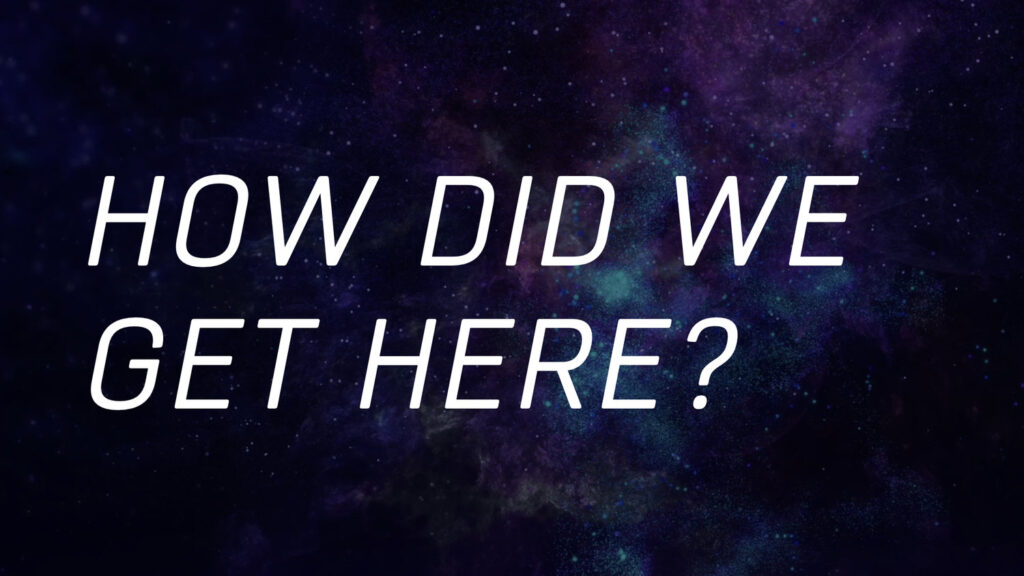
How did we get here?
There are so many things we can point to – prioritising revenue (and particularly ad revenue) over everything including privacy and safety. Prioritising “engagement” over everything because it gets more revenue. Platforms and products built by homogenous teams who never took into account the ways in which they would be used or misused.
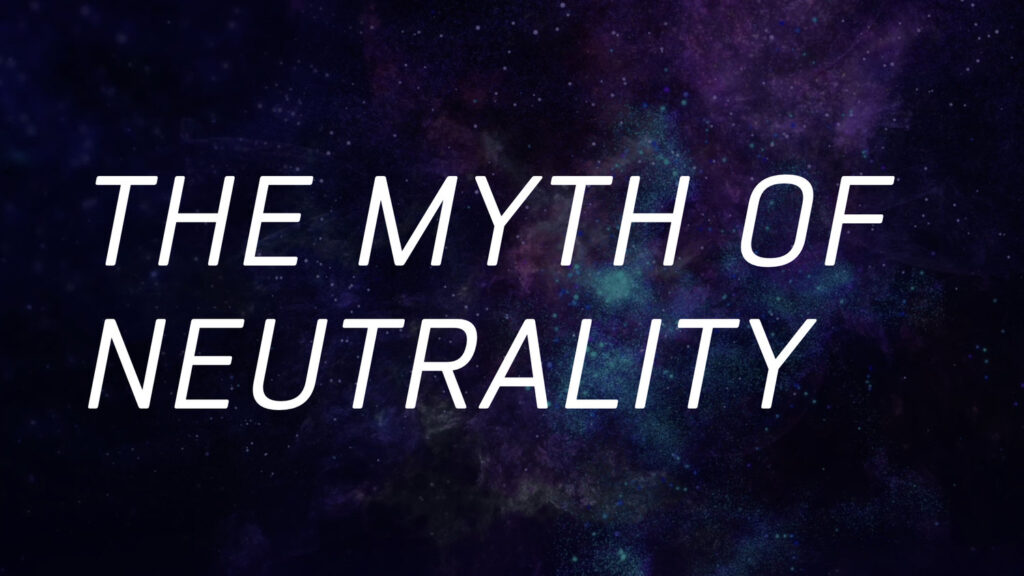
But today I want to focus in on just one: the myth that a digital space can or should be neutral. The incredible damage that myth has caused. And what we might be able to do it about it for the future.

The myth we bought into early on was that a free and open internet would be a kind of global social and technical utopia, where everyone had a voice, and all the world’s knowledge was available to be exchanged.

As Paul Ford wrote: “People—smart, kind, thoughtful people—thought that comment boards and open discussion would heal us, would make sexism and racism negligible and tear down walls of class. We were certain that more communication would make everything better.”
Even now, as we look at how things have gone horribly wrong, there are free internet devotees who believe the answer is in abandoning corporately-controlled platforms like Facebook or Twitter or Tumblr for open source alternatives.
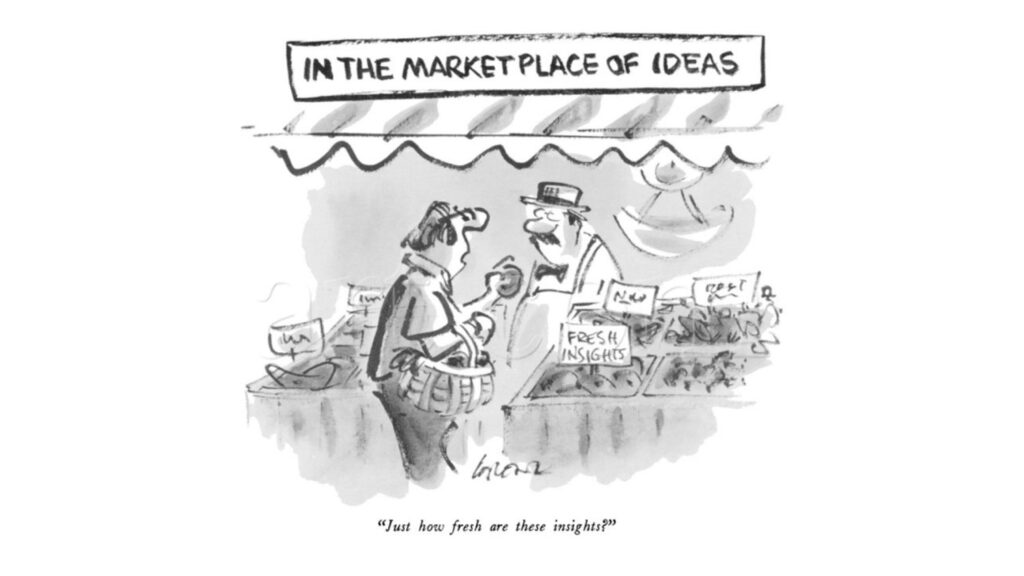
At the heart of all of this is the libertarian ideal that this would all inexorably lead toward social progress.
I get it – I grew up as a competitive international debater. I spent my teens and twenties 100 percent convinced in the marketplace of ideas, the rationality of people. That sunlight was the best disinfectant.
Of course the answer to bad information was more information.

And instead, we’ve had to grapple with the fact that Nazis are back.
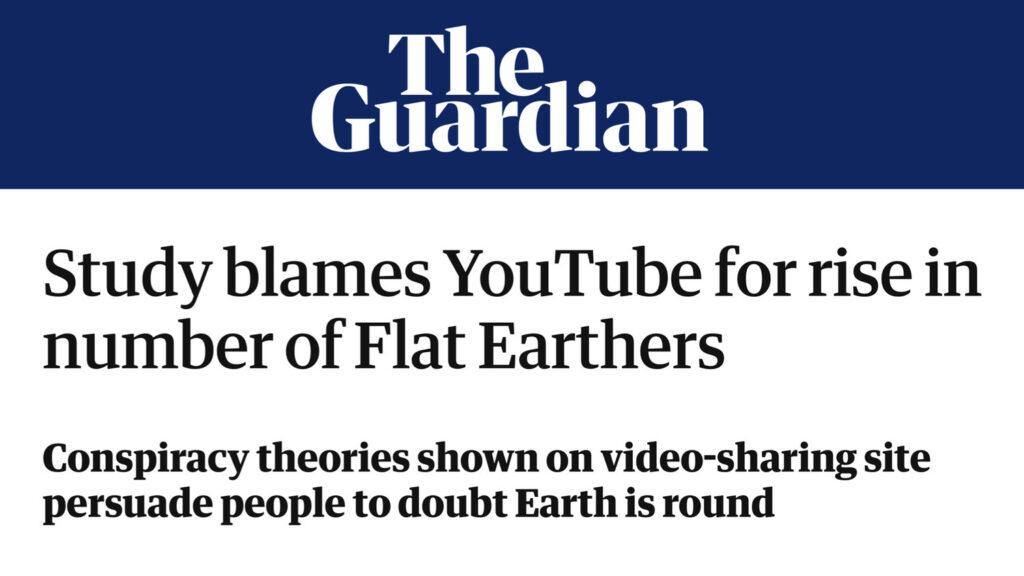
The marketplace of ideas has just proven…
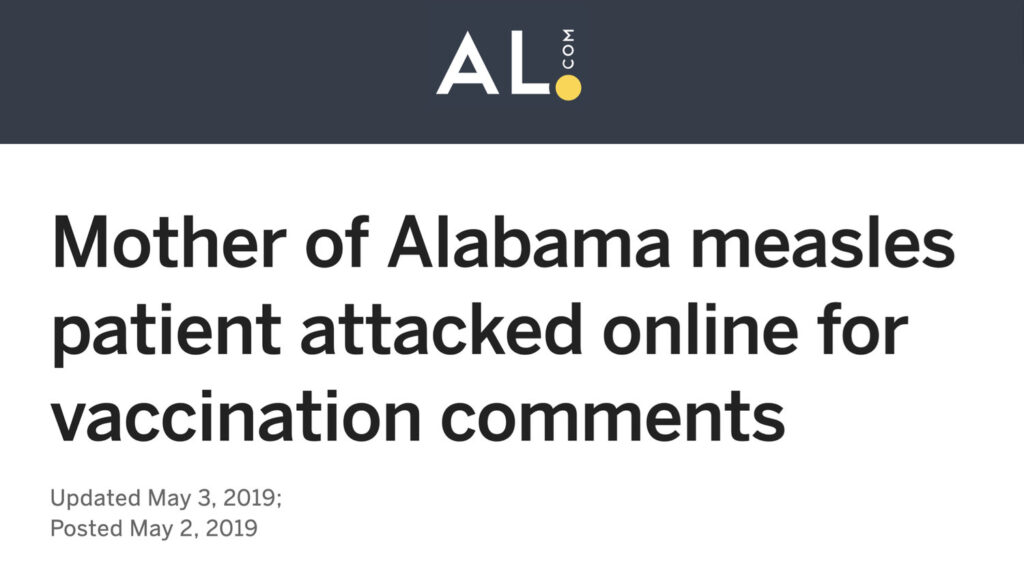
… that there’s actually a market for really terrible ideas.
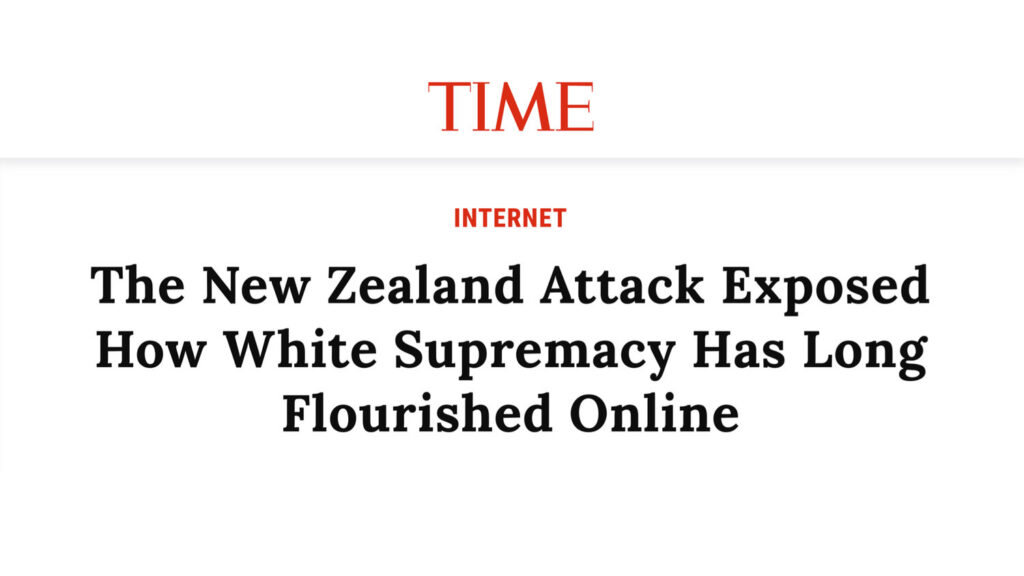
And a market that is now being deliberately exploited for political aims. Turns out the devil doesn’t need any more advocates.
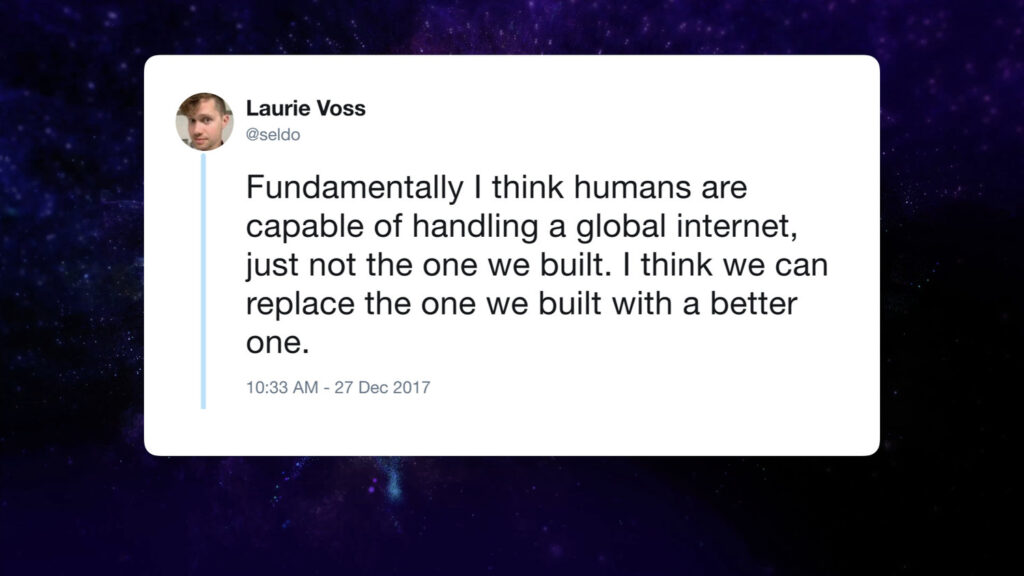
There’s an interesting question here about whether it is even possible to have a global community of the kind that we envisaged.
I love this thread from Laurie Voss.
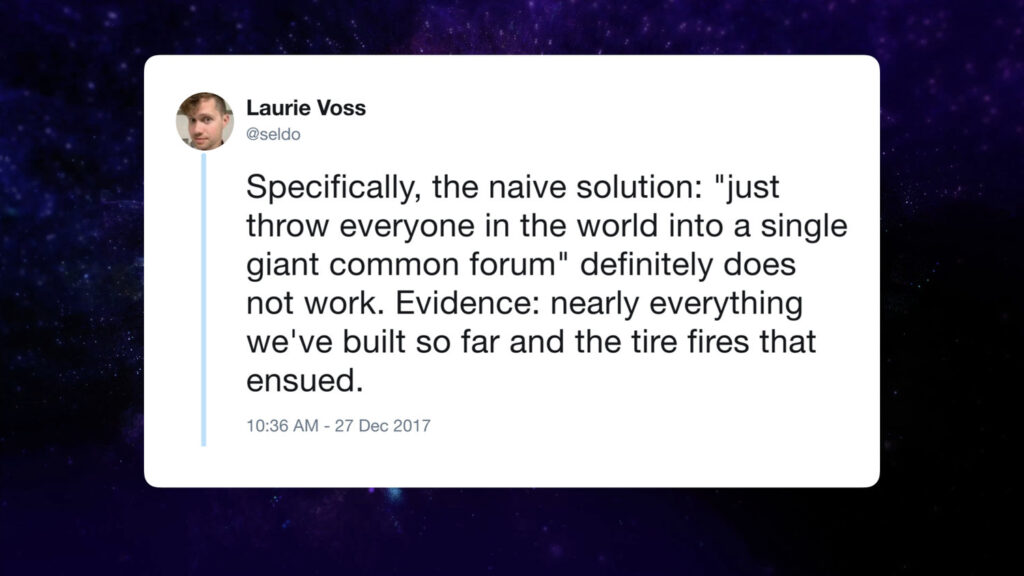
We threw everyone together in a single community in the space of a generation. And we didn’t think about the fact that Dunbar’s number – the cognitive limit to the number of people we can have stable social relationships with is around 150 people.
As he says: “People often complain that cities are cold and impersonal but this is a feature, not a bug. Cities are survivable only because we found a way to coexist without interacting. The internet needs this feature.”

“But the answer is not a million silos with 100 people each. Every person needs a *different* 150 people. It still needs to be a global network, just not a single global space with everyone surrounded by shouting strangers.”

We need tools, control, granularity a different way of thinking about spaces and our relationships with other people.
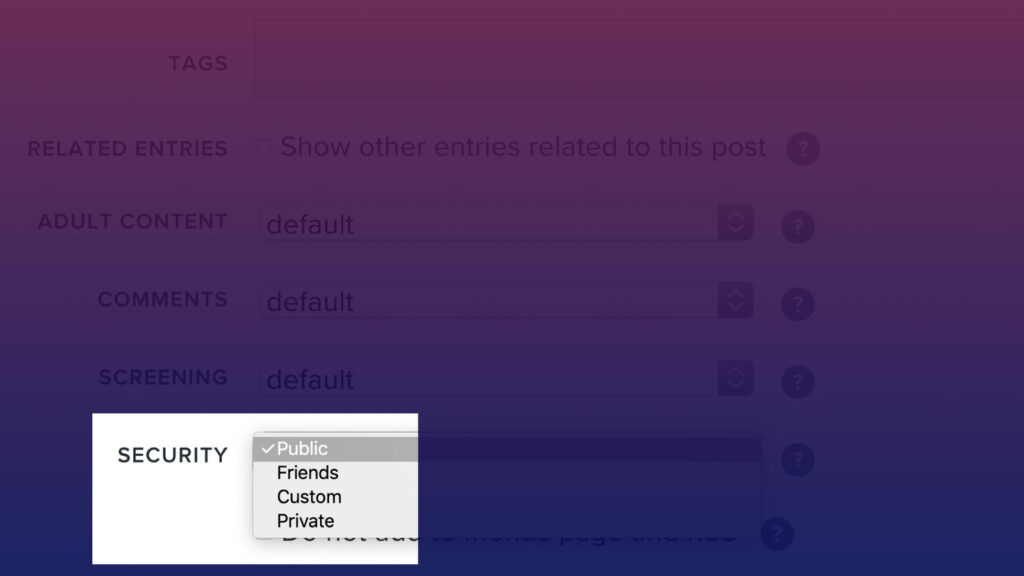
Those of you who used Livejournal back in the day will remember the degree of control you had over what you shared and to whom. Facebook comes close, with its privacy controls, but hides them so deep most people never find them.

So instead, we have platforms that use things like likes and followers as the only metric.
Your only way of determining value or meaning is through likes, it’s a hopelessly blunt instrument. The other ways of measuring engagement are kept for brands, verified users, influencers.
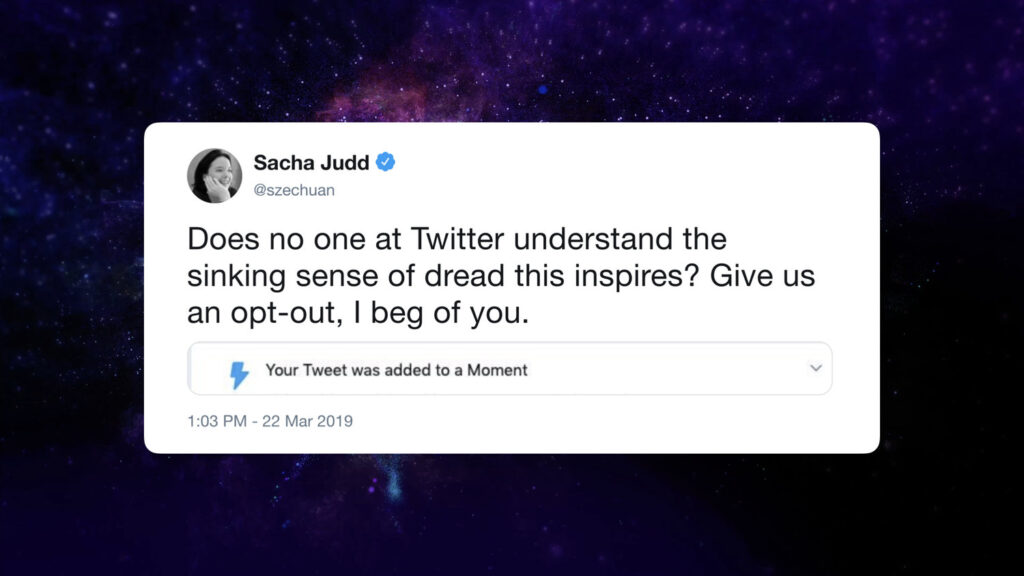
And we’re not given any control over how our information is amplified or shared.
Take Twitter Moments, for example, where twitter aggregates a whole bunch of tweets around a news story or topic. I got a cute dog photo added to Pets of the Week and got heart-eyes in my mentions for a week. But I’ve seen women of colour face racist horror and hate when their tweets get amplified beyond their intended audience. And there’s no opt out.
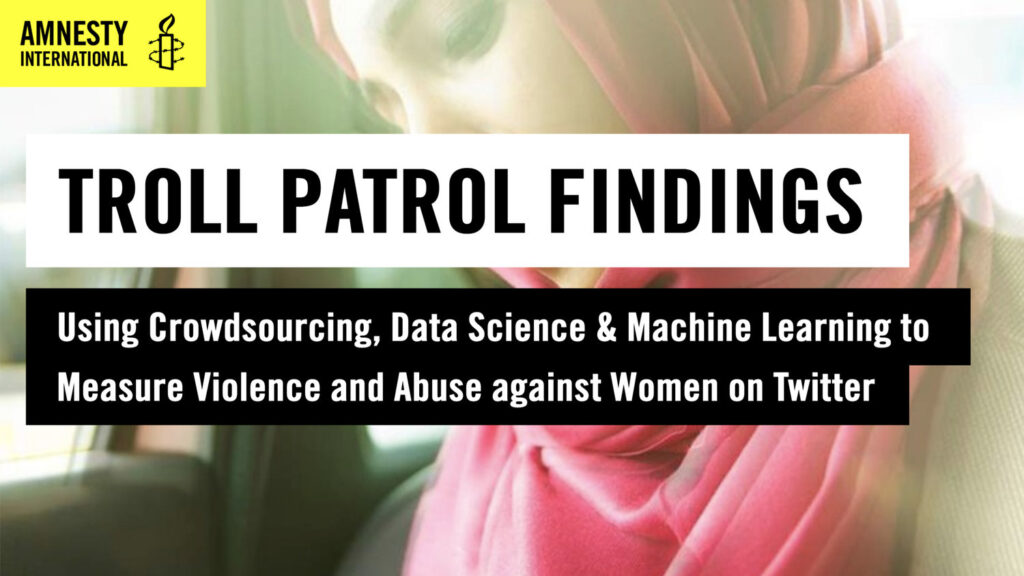
Last year, a crowdsourced study by Amnesty International found that a problematic or abusive tweet is sent to a woman every 30 seconds.

For women of color, one in every 10 tweets they receive is abusive.
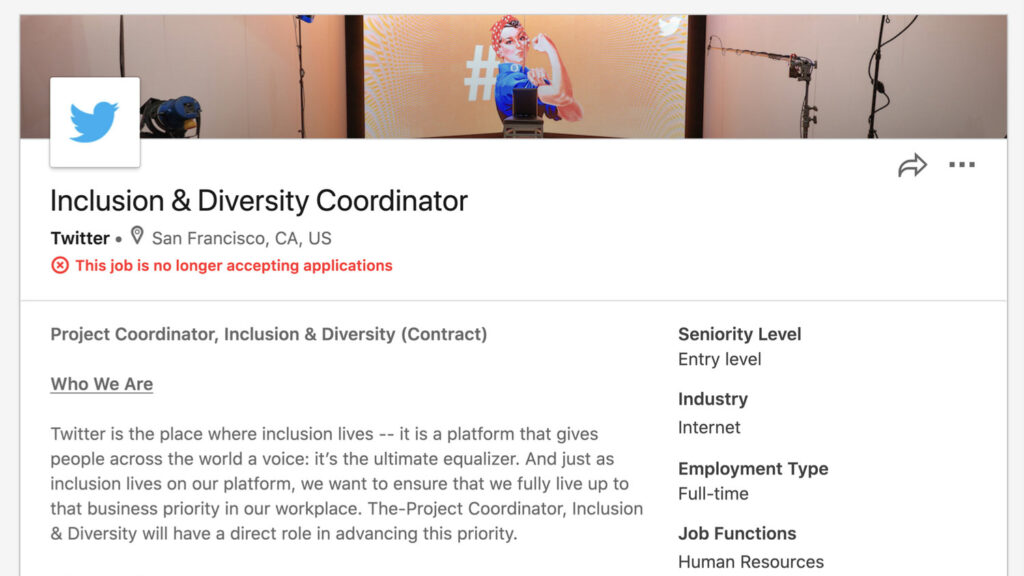
So, we find ourself in this giant caldron. And the private owners of this caldron like to pay lipservice to the idea that they understand the problem and they want to help.
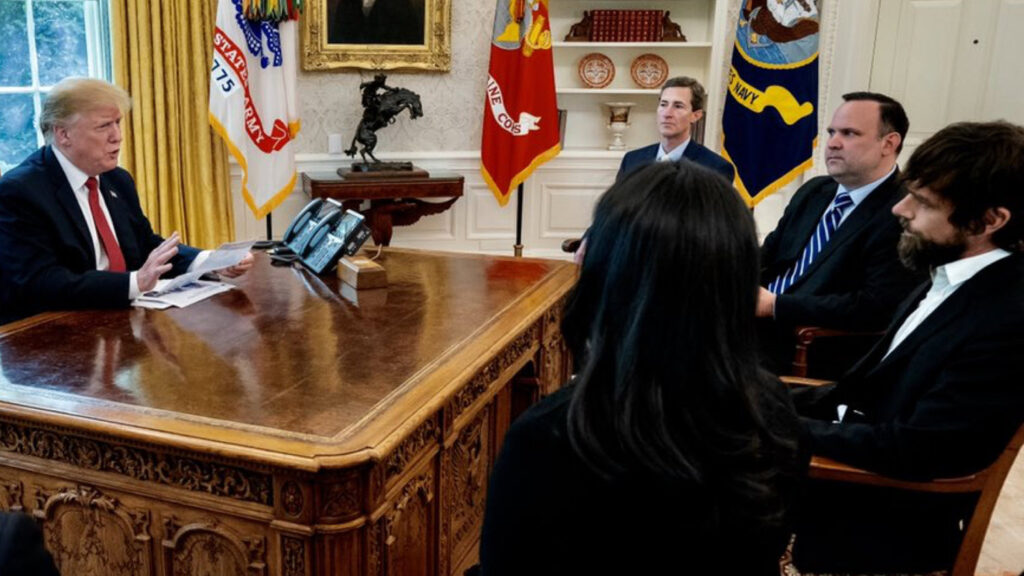
While at the same time, they do things like this.
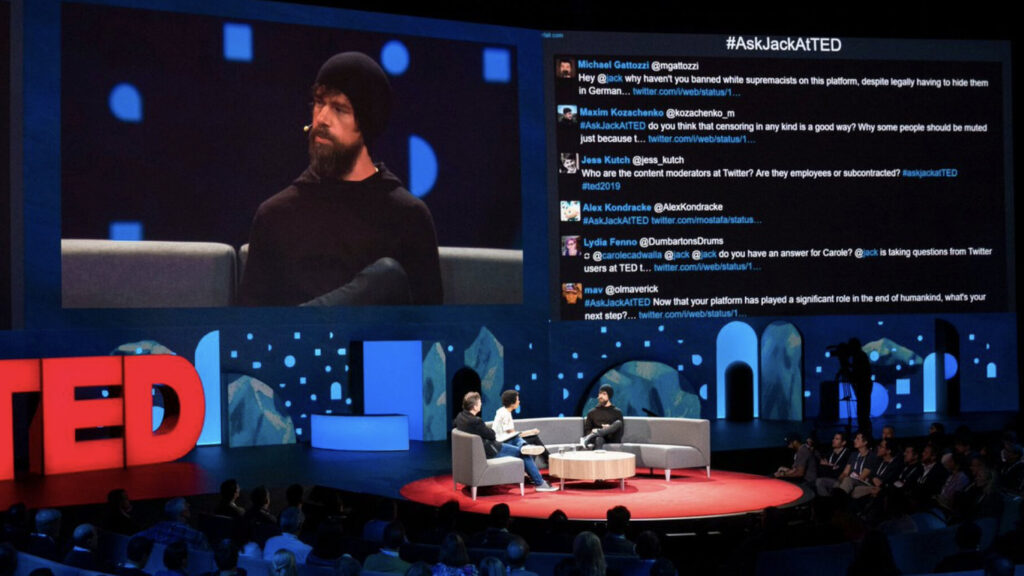
Speaking at TED earlier this year, Jack said that Twitter was adopting four new metrics for conversational health: “shared attention,” “shared reality,” “receptivity,” and “variety of opinion”. But you’ll notice all of these still centre this idea that the space can be neutral – every one of these measures is values-agnostic. The “shared reality” metric, for instance, captures “what percentage of the conversation shares the same facts,” not “whether those facts are truthful.”
As Anna Wiener in the New Yorker put it: “At a time when conspiracy theories are gaining traction across social media, it seems naïve to embrace a standard of conversational health that allows for mutual delusion.”

A mutual delusion that allows Jack to go on the podcast of an avowed anti-vaxxer, and then tweet this.

So, we’re supposed to believe he’s taking the problems at Twitter seriously.
(Is he though?)
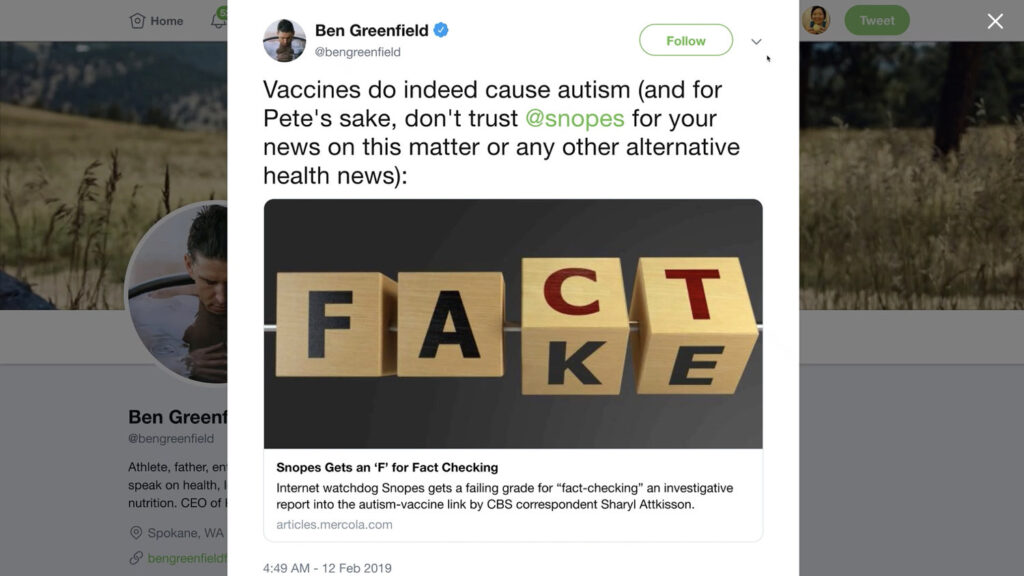
Here’s the interesting thing – there’s actually not a way to report a damaging lie on twitter.
You can allege it’s abusive or harmful, but then what?
You can block the person or mute them.

But there’s literally no way to report that something is just false.
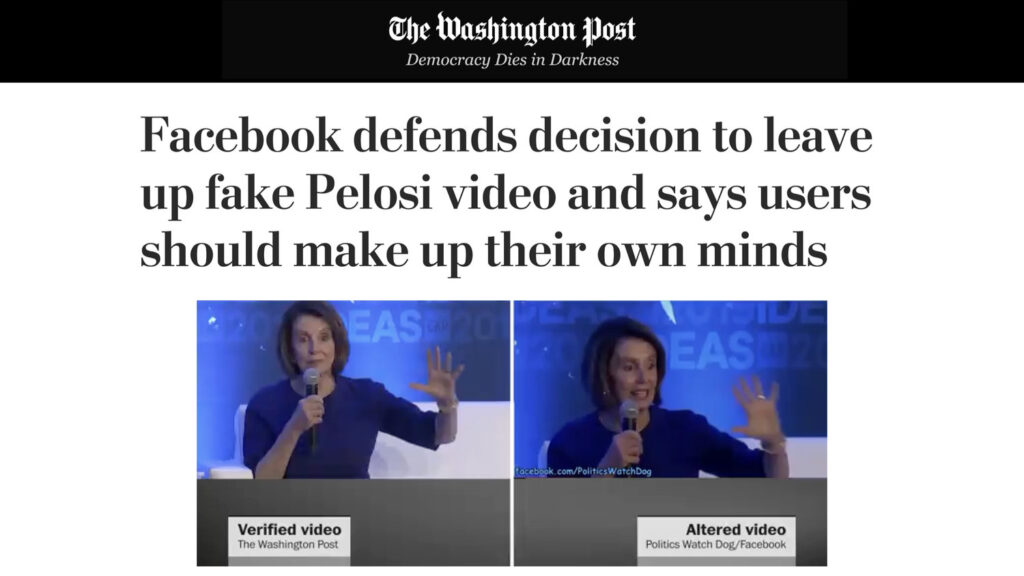
It’s the same rationale that lead to Facebook refusing to take down a doctored video of Nancy Pelosi.
This libertarian ideal underpins everything. That these companies are “platforms not publishers”. That it’s not on them to make any kind of ethical decisions. And it utterly fails to take into account the power imbalances in the world around us.
It’s this myth that technology can be neutral.

So Twitter won’t ban the Nazis, even though we know they could.
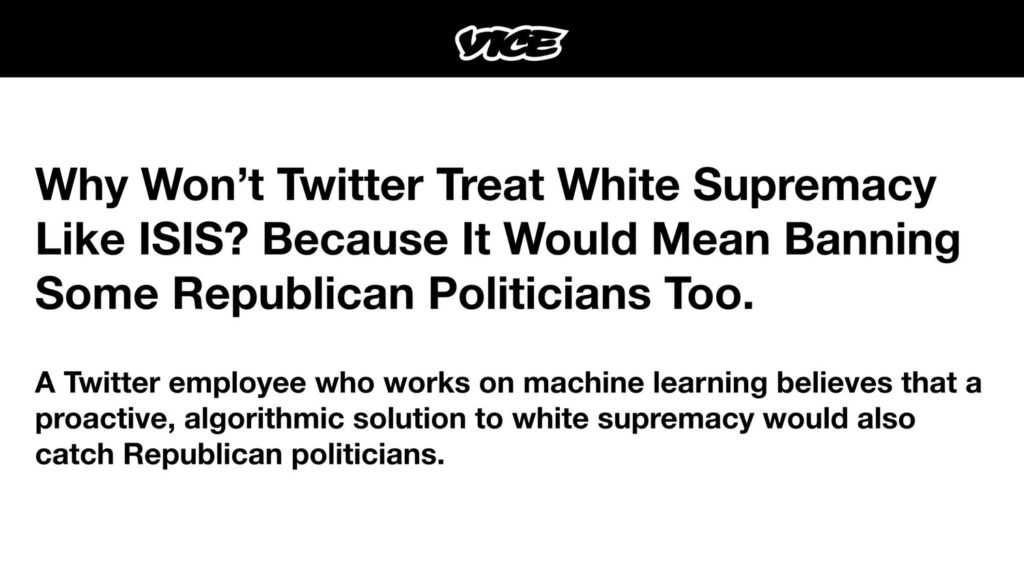
A twitter employee recently let slip that one of the main reasons is that any such ban would catch too many Republican politicians.
And yet in the last year, we’ve started to see something even more horrifying. Right wing commentators and politicians arguing that they’re victims of censorship and bias from tech platforms. That conservative voices are being silenced. In essence, they’re claiming that they’re suffering from the very action we wish these platforms would take and won’t.
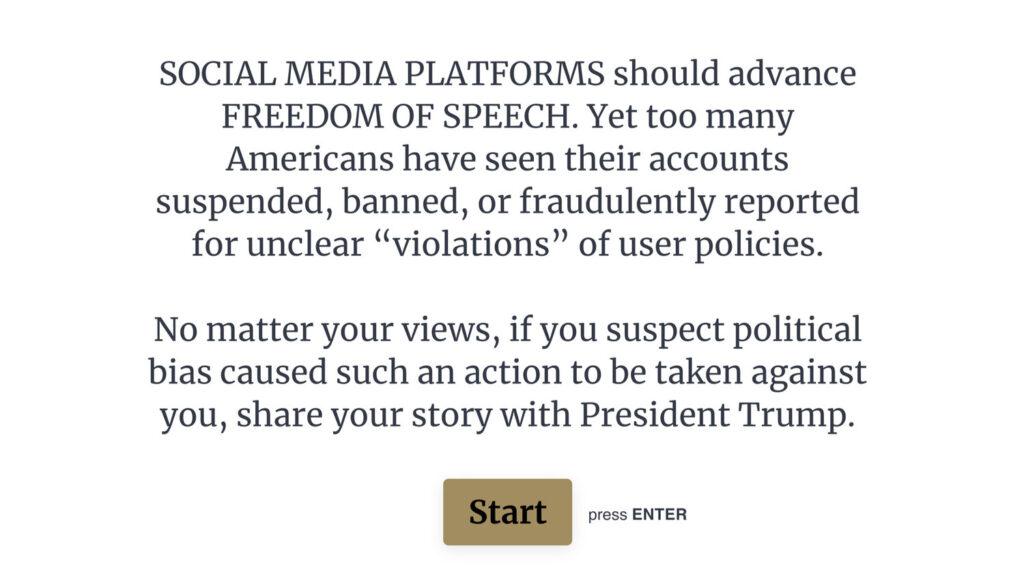
So much so, that the White House has launched a tool to help them report it.

In fact, available data consistently shows that right-wing content does as well as left-wing content on Facebook, that YouTube algorithms boost far-right content that radicalizes audiences, and that claims of anti-conservative bias are nothing more than anecdotal.
Yet, Jack goes to the White House to appease a president who tweets about this imagined censorship and bias. He tells Representative Ilhan Omar that he won’t take down the president’s tweet that brought about a flood of death threats for her, because it didn’t break Twitters rules.
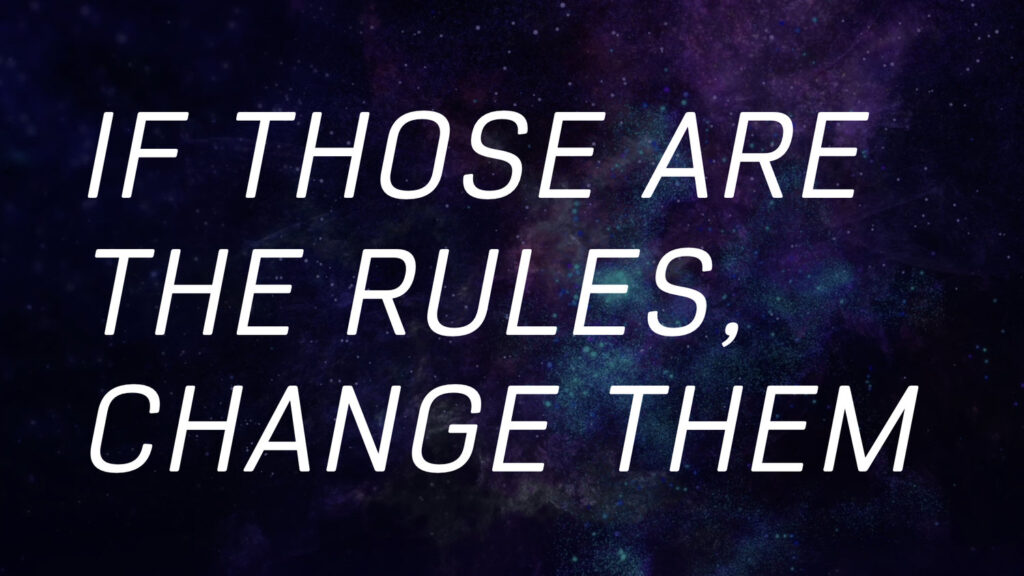
And what I’m saying is, if those are the rules, change them.
And it’s not just Jack and Twitter, obviously.
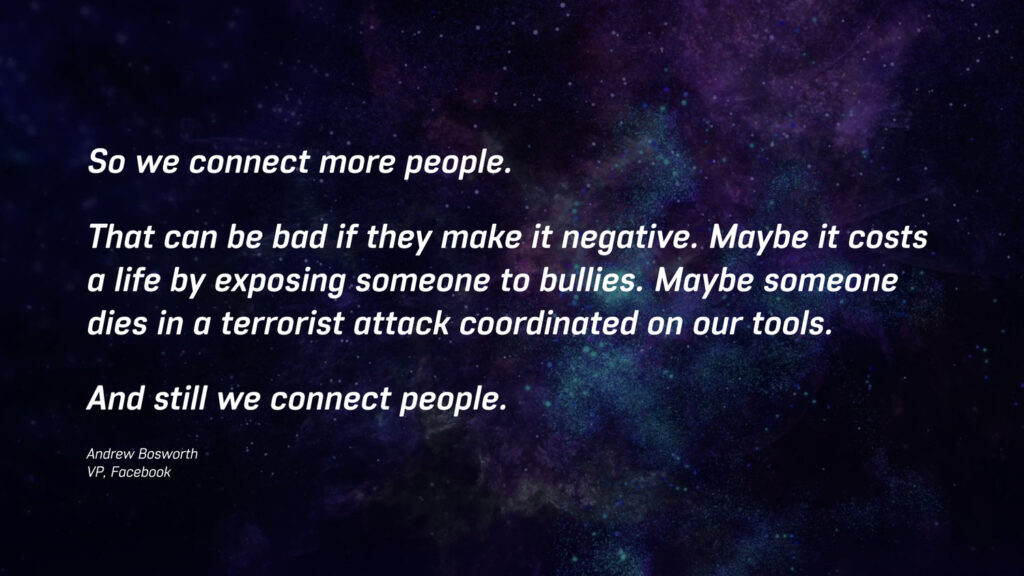
It’s Facebook, where VP Andrew Bosworth wrote in a leaked internal memo in 2016 “The ugly truth is that we believe in connecting people so deeply that anything that allows us to connect more people more often is *de facto* good.” even if it results in death.
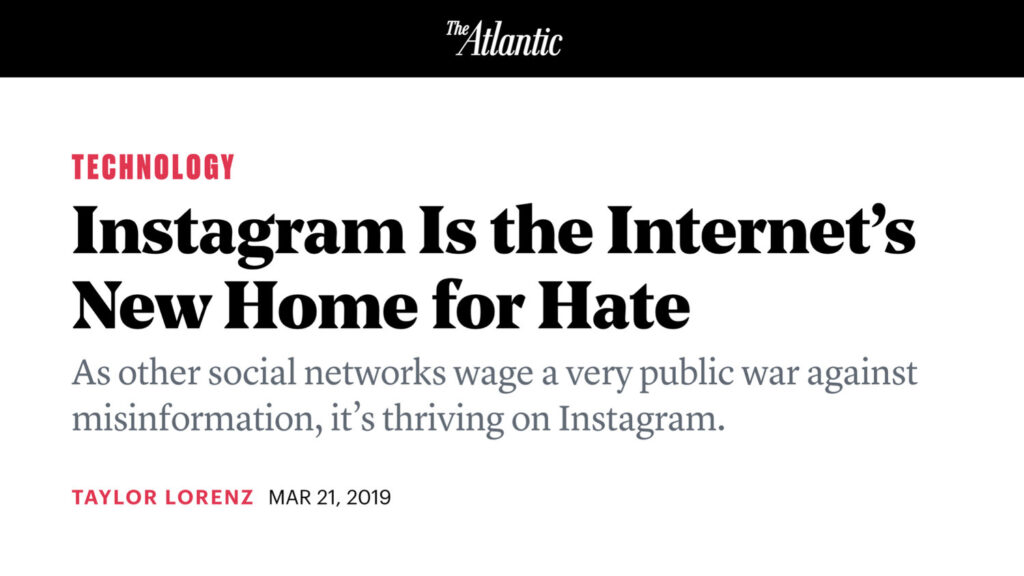
And it’s Instagram.
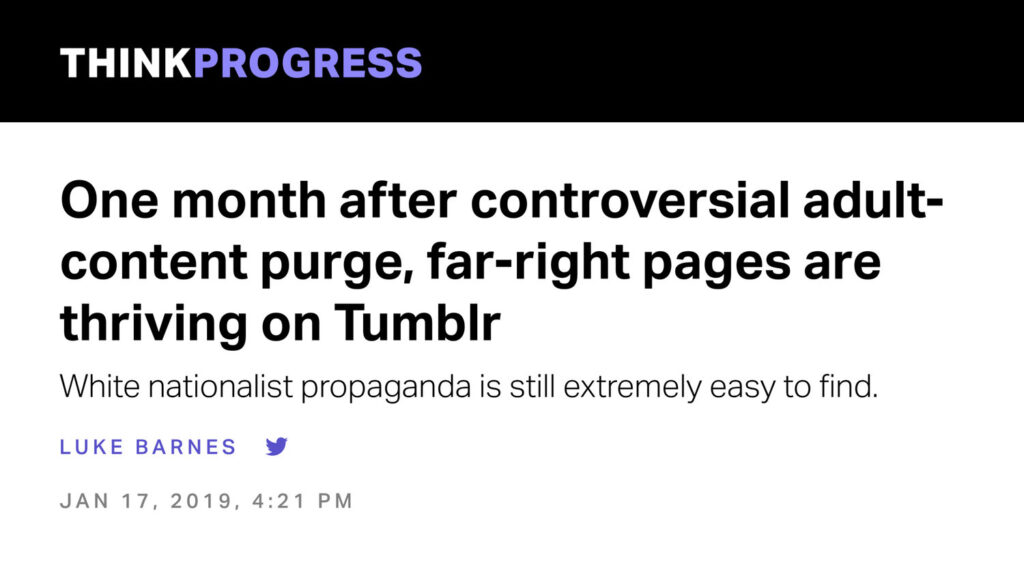
And it’s Tumblr.
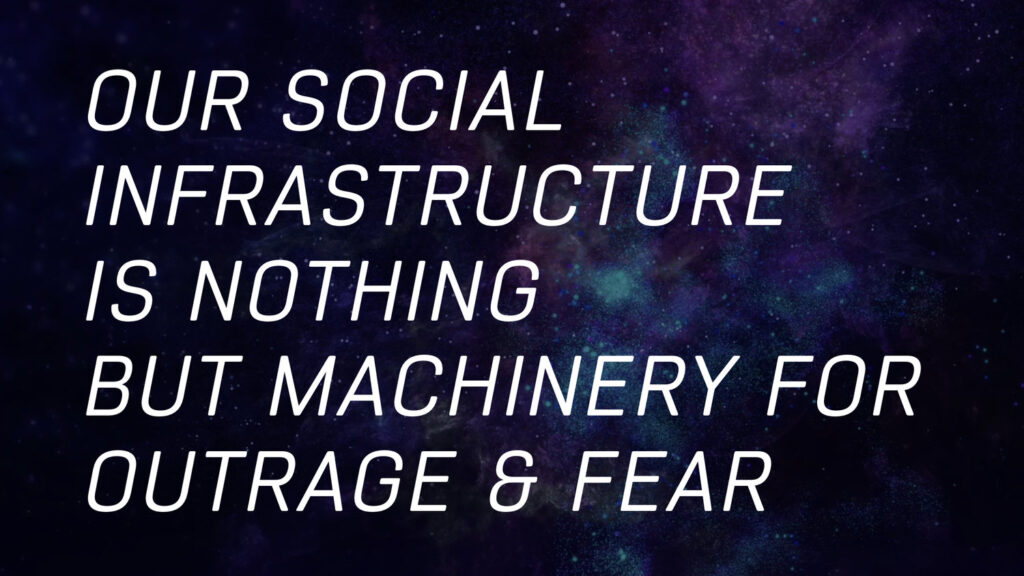
Our social infrastructure is nothing but machinery for outrage and fear.
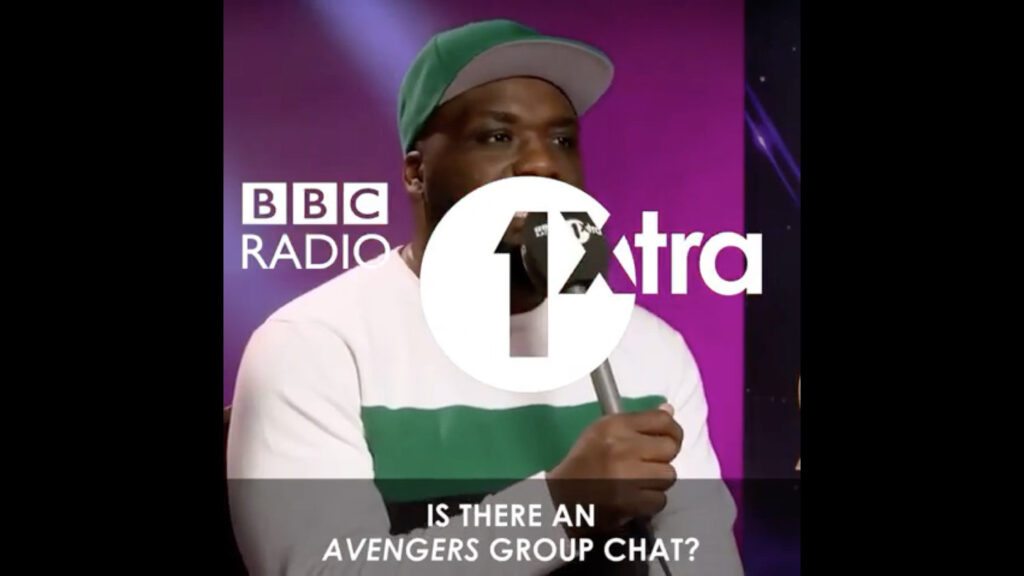
So we draw back to more intentional, smaller, more private communities. Permanent group chats.
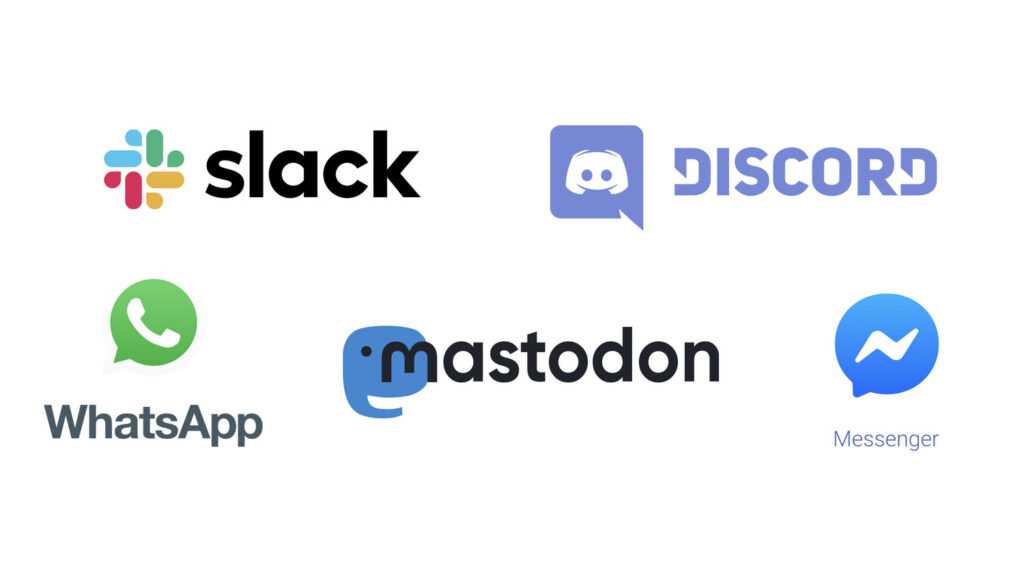
Social discords or slacks. Even within those we need to create smaller, even more private spaces.
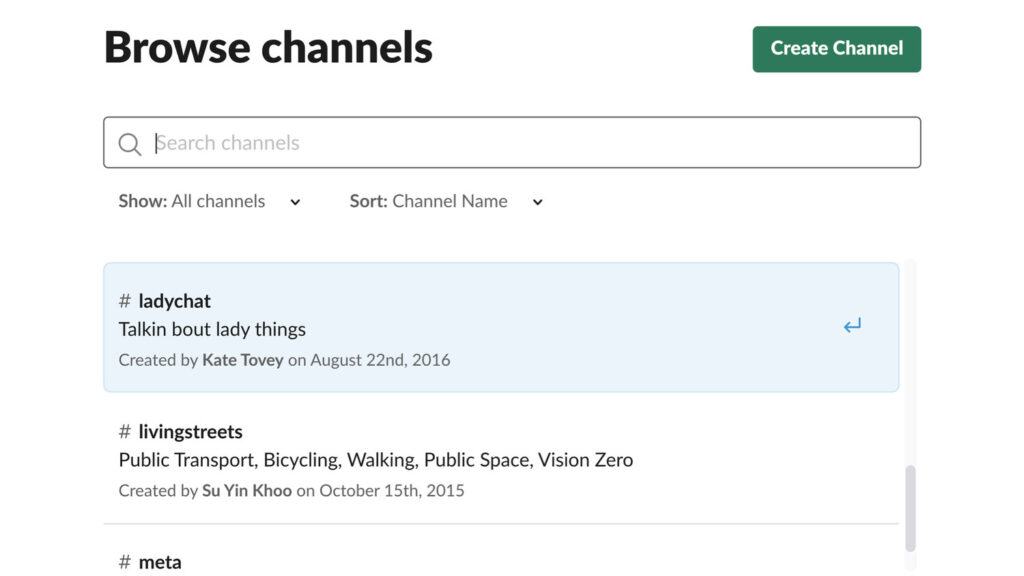
Every social Slack has a women’s only channel.
And the tools we’re using for these more intentional, closed communities weren’t built with these use-cases in mind, necessarily.
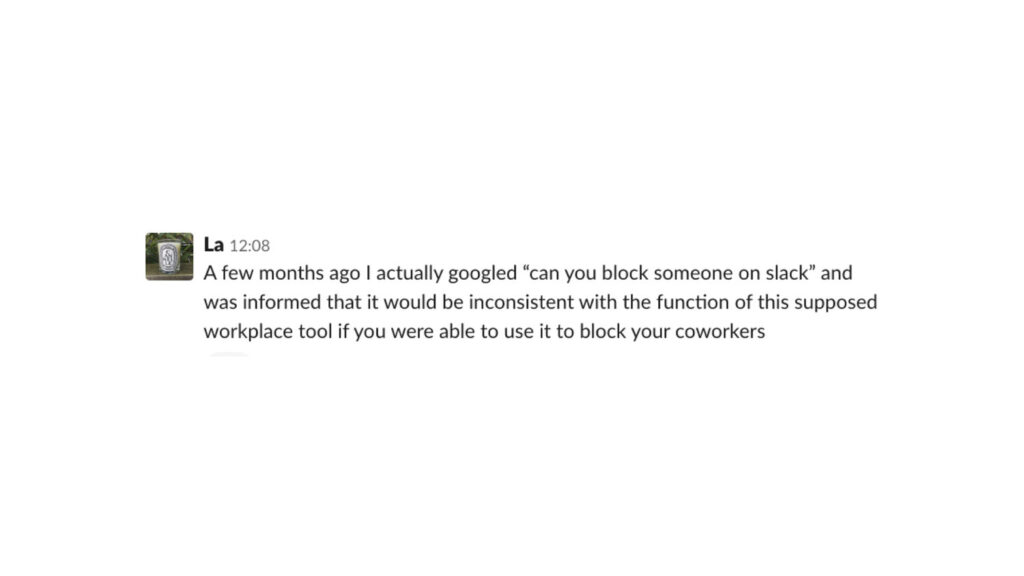
At first, you don’t notice the problem, because the community has chosen to come together around a shared interest. But as a fandom slack, or a design industry slack, grows to have hundreds or even thousands of members, they essentially become public spaces again. But without any of the curation tools that we need. You can’t block people, or mute people, because that’s not what the tools are for.
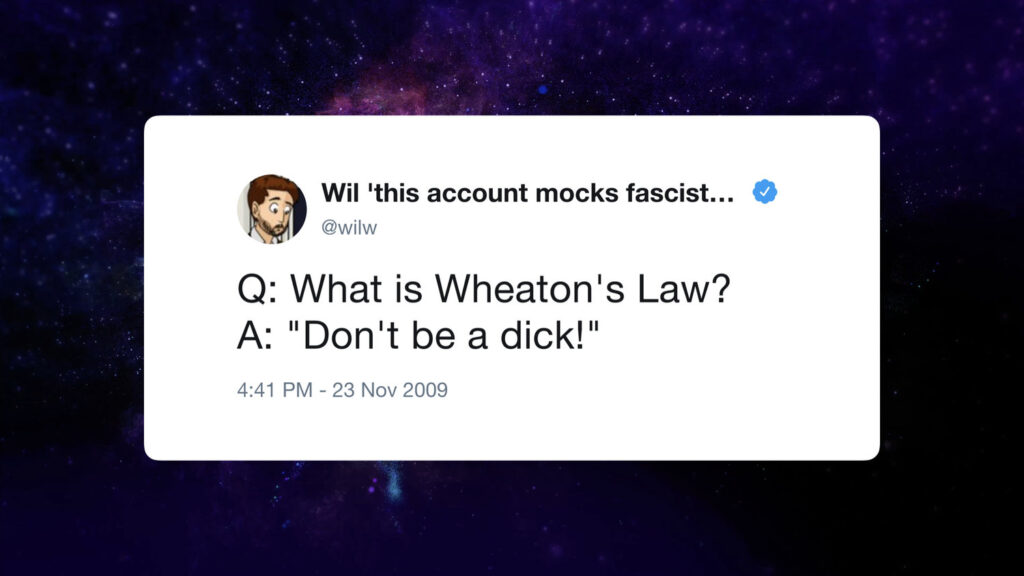
And so you try, to turn these into more moderated, controlled spaces – with Codes of Conduct, or rules for the group. And where do these sets of rules always, always start?
The first rule is almost always to be polite to one another. Some variant on Wheaton’s law. Or more commonly that we should “assume everyone has good intentions”. Inevitably, from here we leap to “not making discussions political” as some sort of proxy for “making everyone feel welcome.”
But as Mike Monteiro wrote in Ruined by Design: “The people affected by our actions are always more important than our intent.”
There’s no such thing as a neutral space. A decision to have an apolitical community is an inherently political decision.
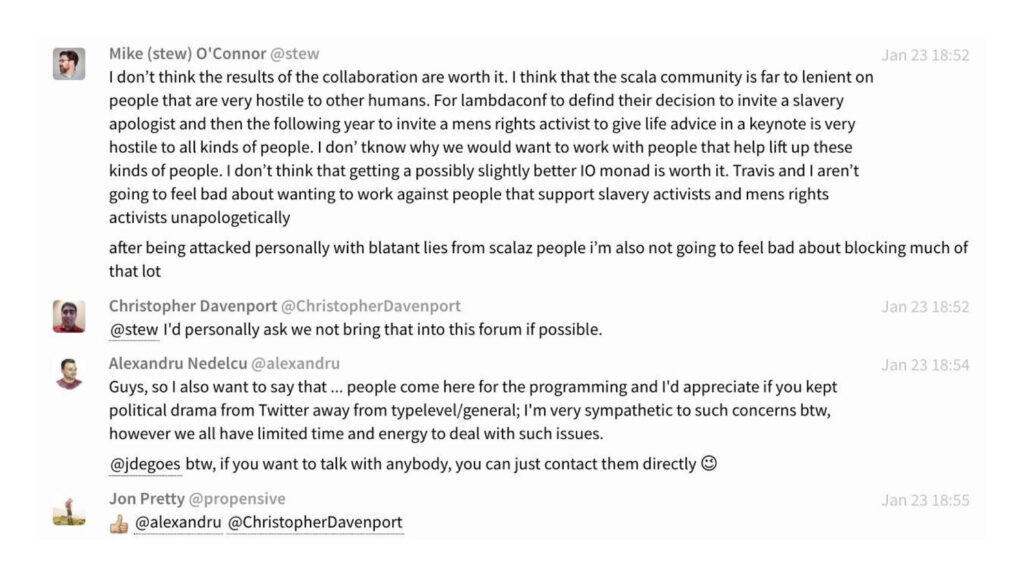
Kyle Kingsbury recently shared this example on Twitter from the Scala community. One member is trying to have a conversation about recent decisions to invite controversial figures to speak at a community conference. Immediately you see other members move to shut that conversation down. “Don’t bring that into this forum” “I come here for the programming” “Keep the political drama away”.
I’ve seen similar conversations in Harry Potter fanfic communities, boyband fangroups and even in private group chats.
Are you sensing a theme? It’s the same refrain we heard from the comic book guys. “Keep the politics out – it’s not what we’re here for.”
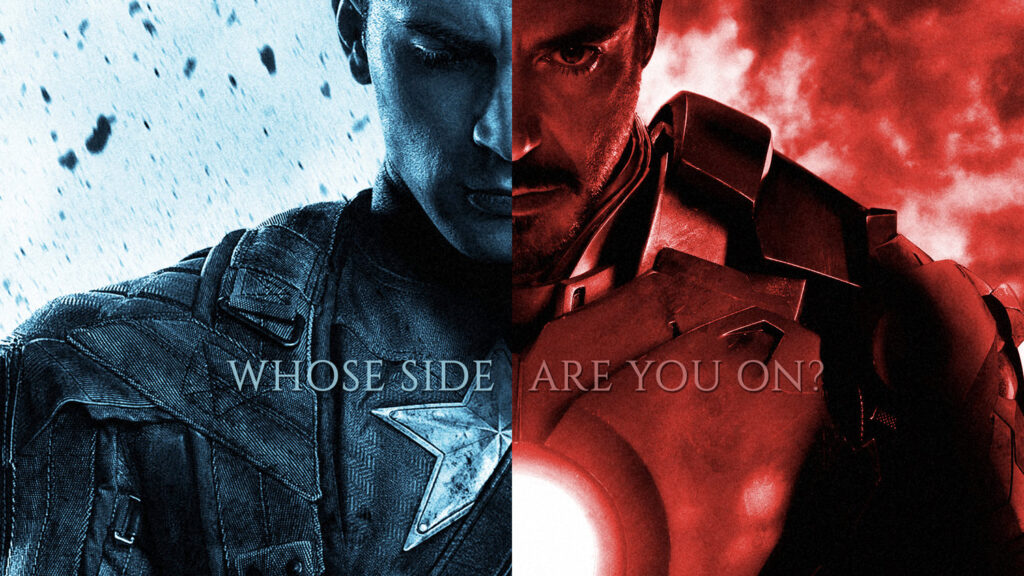
Now if you’re paying attention, you’ll realise I’ve just presented you with two extremely contradictory ideas.
Messy, unmoderated, public spaces like Twitter and Tumblr are terrible for underrepresented voices because they get harrassed, drowned out, and driven away.
But structured, moderated, controlled spaces don’t allow underrepresented voices to call out racism, transphobia and misogyny without asking anyone for permission.
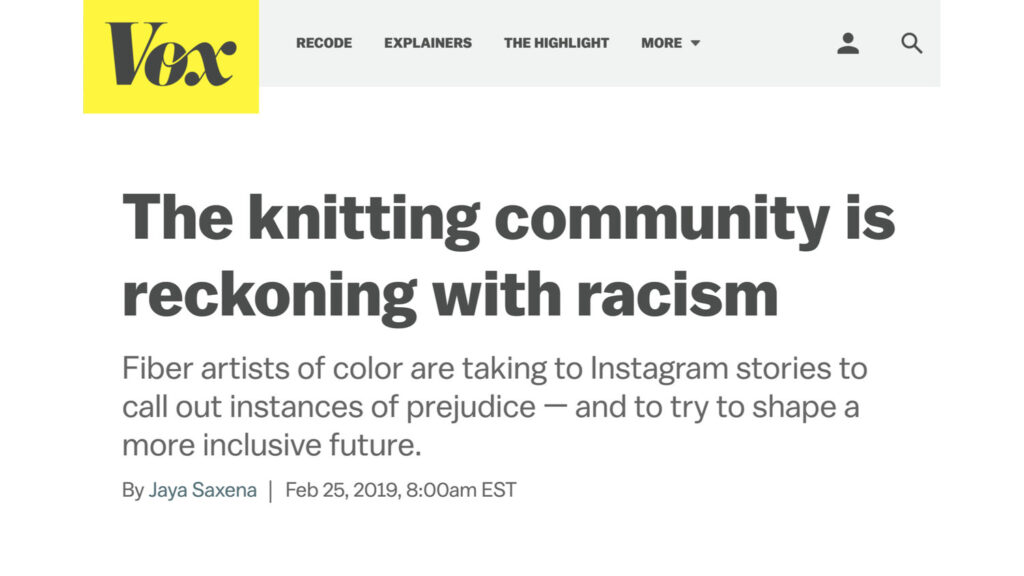
I started thinking about this dichotomy recently as I read this great article about racism in the knitting community
Social media makes pointing out racism easier than ever. For weeks, knitters of colour used Instagram, and specifically Instagram stories, to share their observations, tag other knitters, and conduct polls about others’ experiences with racism in the community. Hundreds of people of color shared stories of being ignored in knitting stores, having white knitters assume they were poor or complete amateurs, or flat-out saying they didn’t think black or Asian people knit.
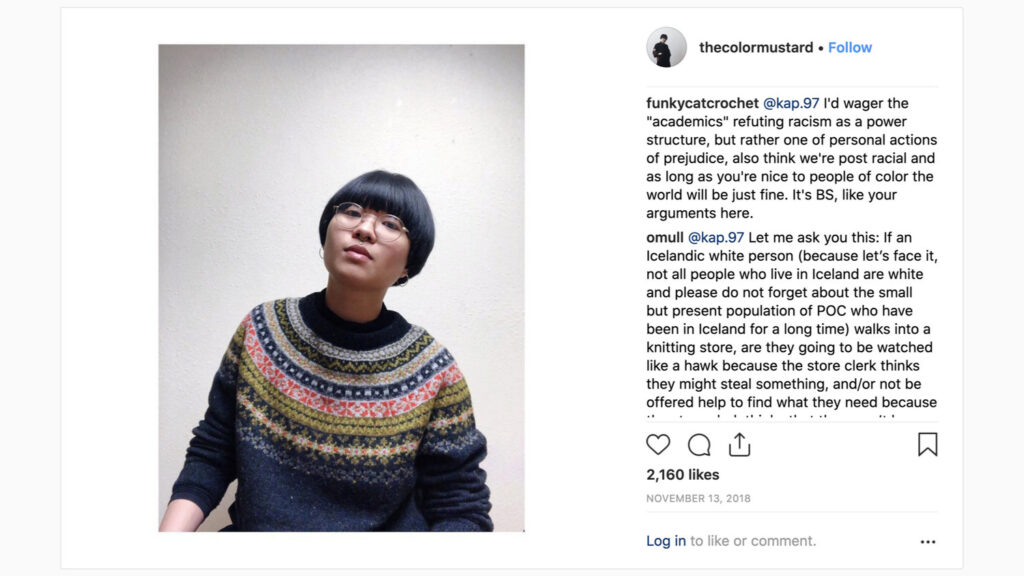
One of those who participated said “I don’t think this conversation could have happened elsewhere. There just isn’t another place where you could have this community, somewhat uncensored and able to react to one another.
The temporality of Instagram stories is what let them feel free to voice their concerns.
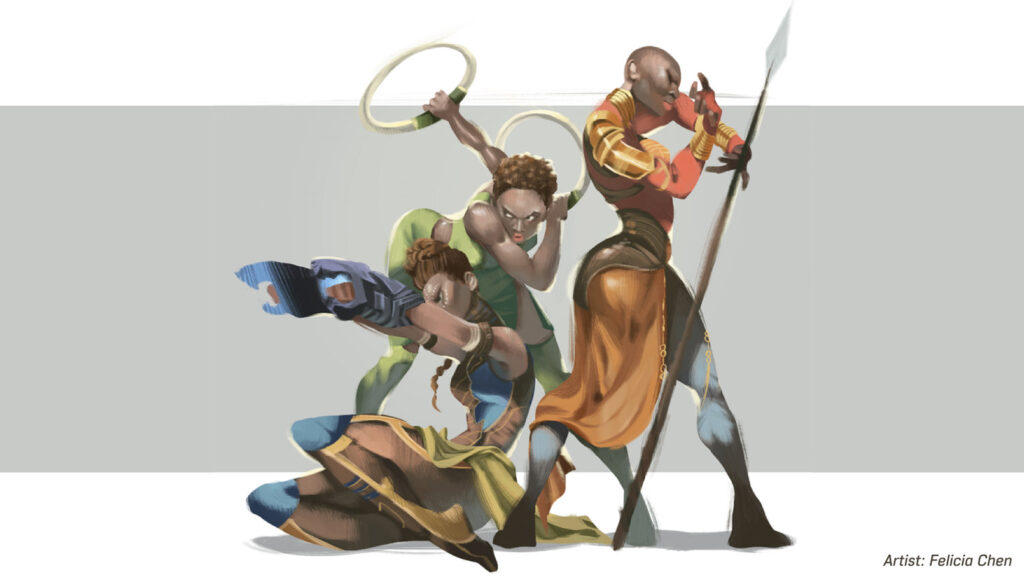
Similarly, speaking about racism in fan communities, Rukmini Pande said recently:
“They can kick you out of a chat. They can kick you out of a Discord. A lot of nonwhite fans are saying, “I’m not really comfortable with going into a Discord where the premium, once again, is on niceness,” you know, and on not rocking the boat.”
(credit: Felicia Chen)
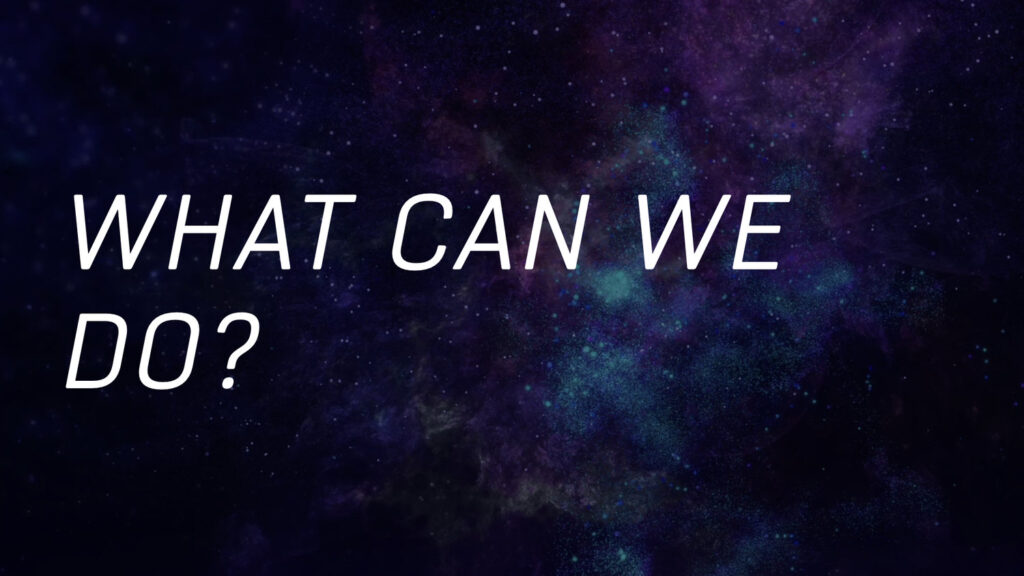
So what do we do?
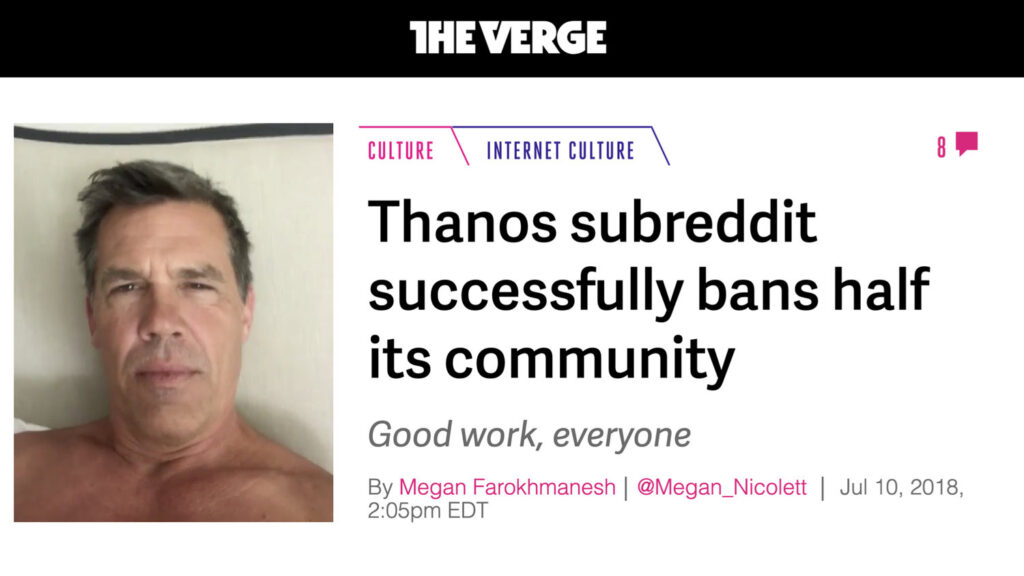
Get Thanos to snap half us off the internet?
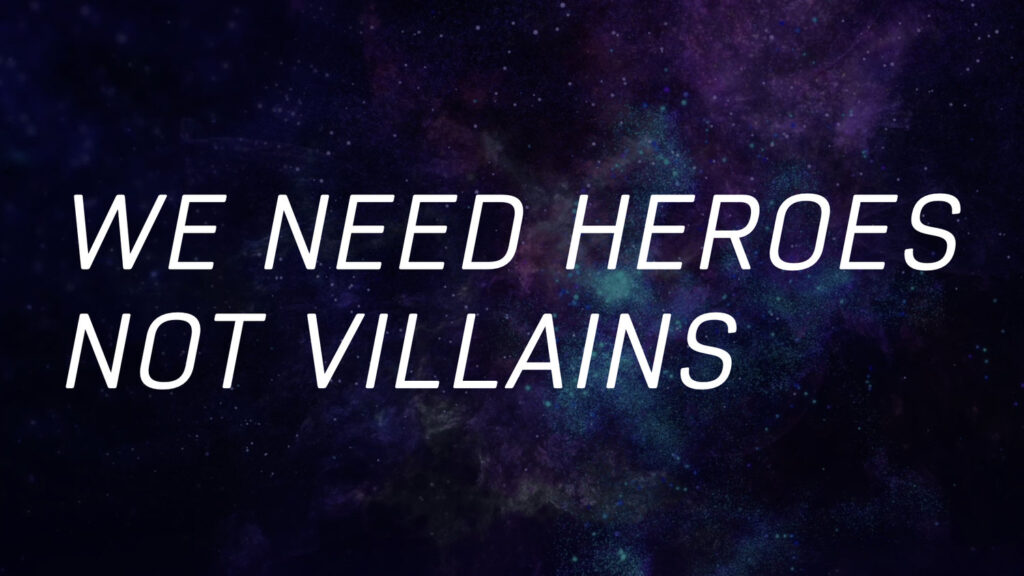
We can’t give up that easily.
We need to focus on the heroes not villains.

There are five things we can do, starting today, to be the heroes we need in the world.
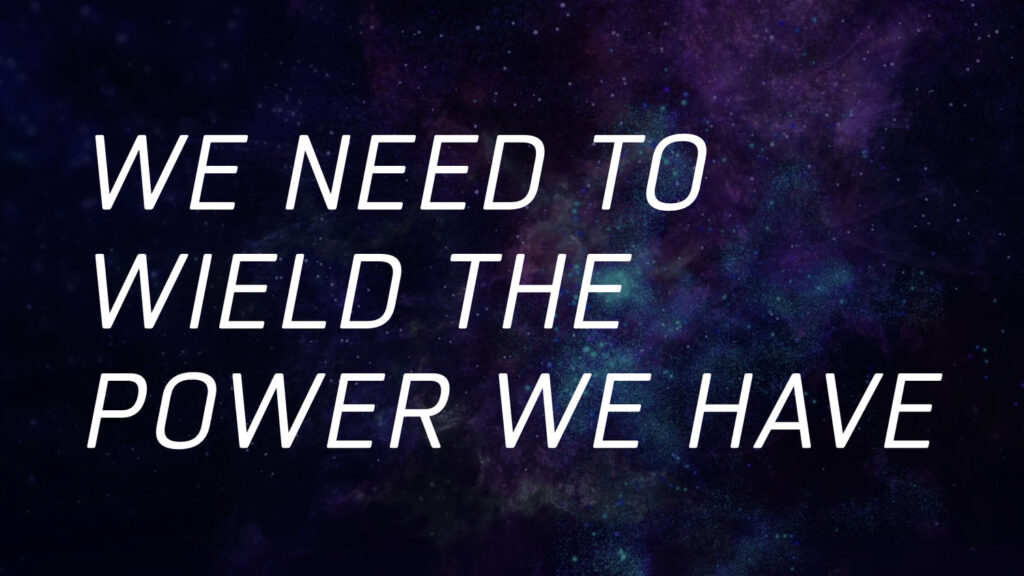
We need to wield the power we already have.
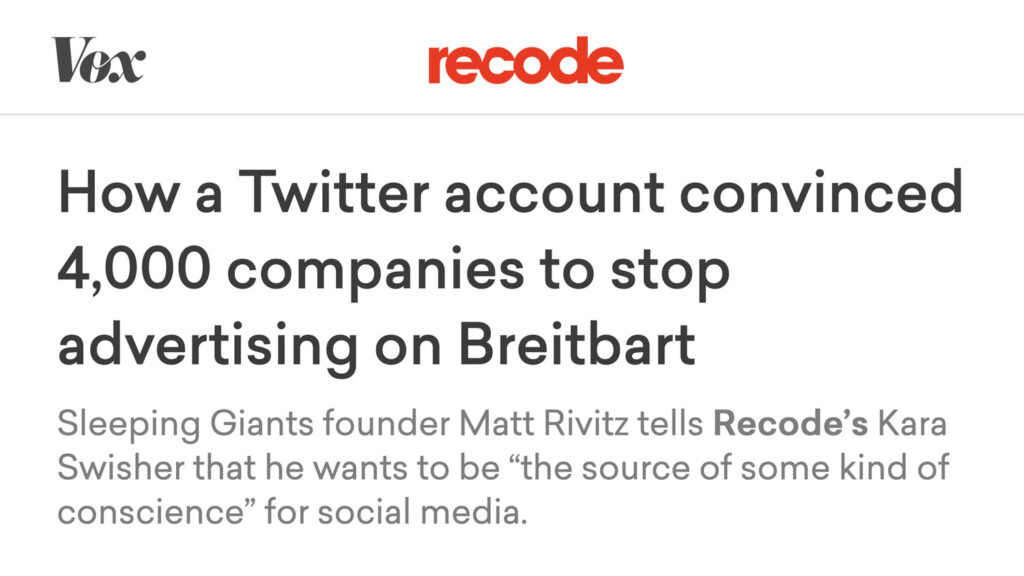
As consumers, when we show companies that bad PR is a problem they have to do something about it. As advertisers, refusing to allow your brands to be shown alongside objectionable content goes straight to the bottom line.
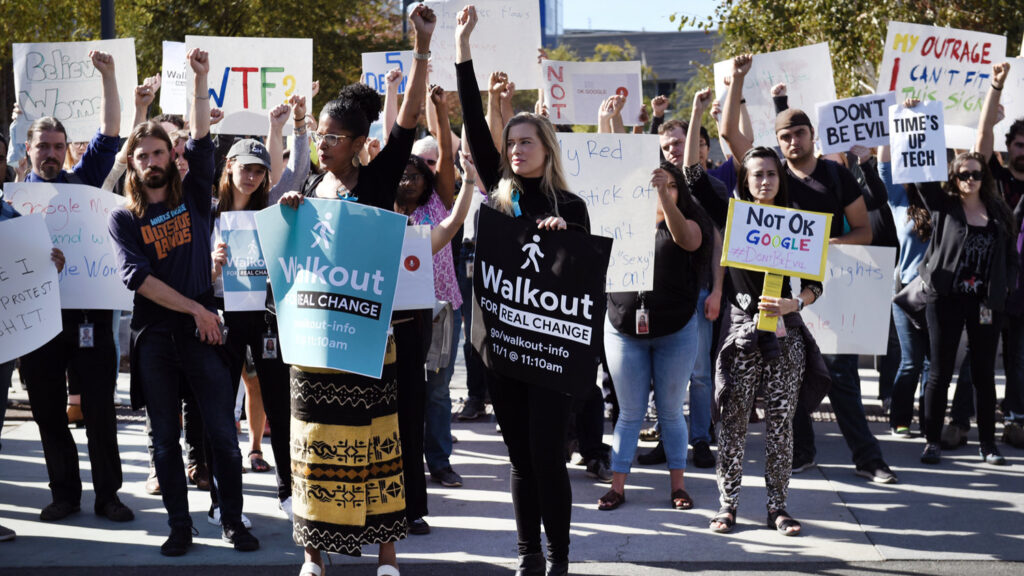
As employees – you all are some of the most sought-after employees in the world right now. You have so much more power than you think you do. Collective bargaining, exerting that power within these companies, is a serious tool for change.
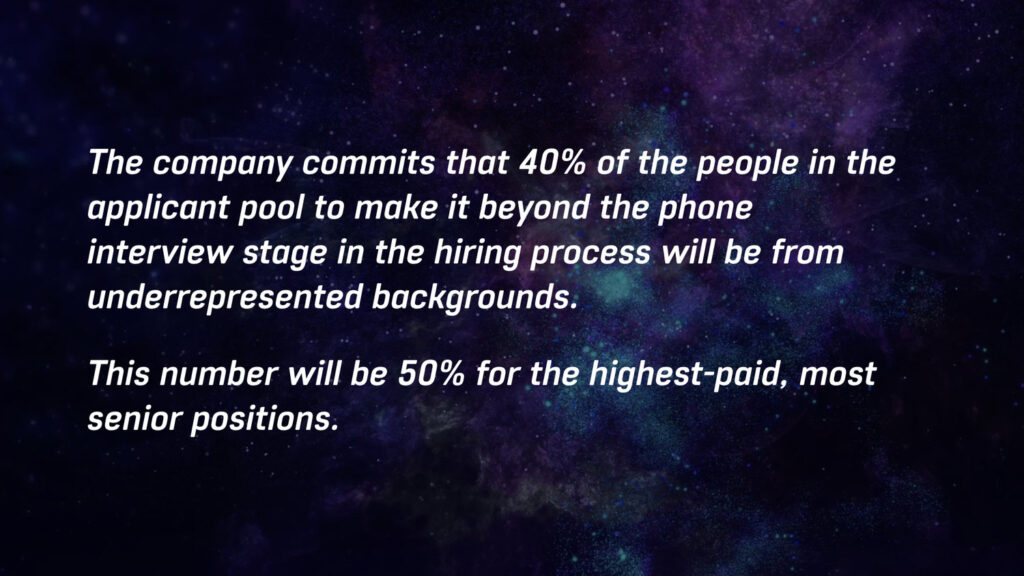
Employees of Vox Media unionised last year, and have just ratified their first collective bargain. Among the many financial and other protections they won for employees, they also achieved things like this diversity pledge.
And that’s important, because…
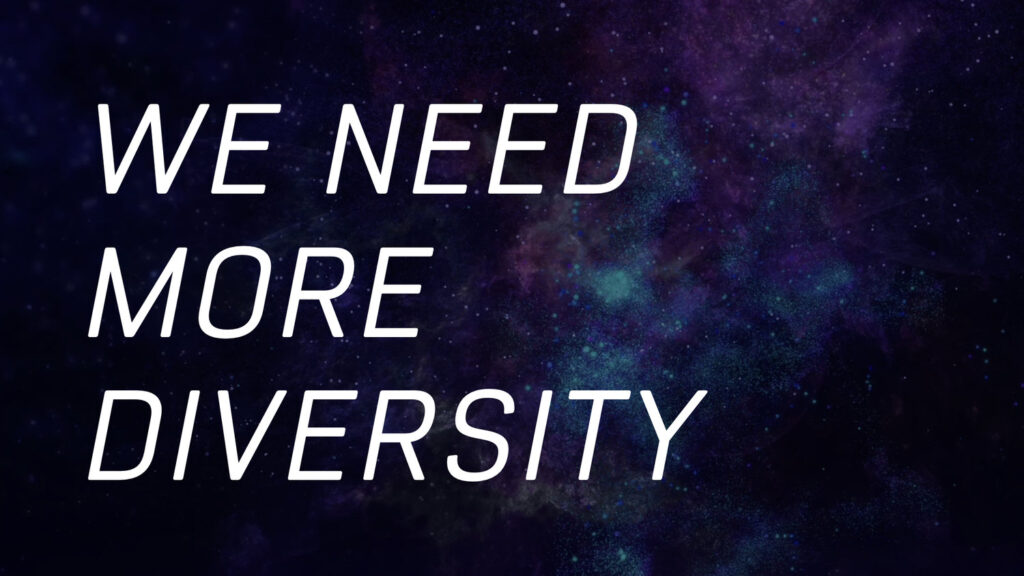
We need more diversity.
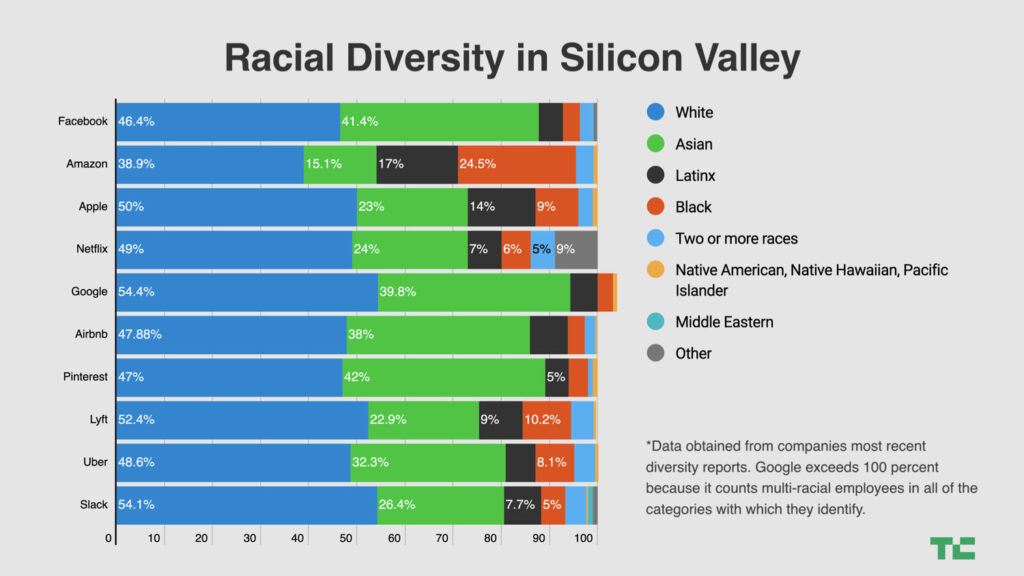
Even after ten years of diversity and inclusion efforts, the industry is still overwhelmingly male, and overwhelmingly white and Asian.
This matters in this context, because political and social issues often aren’t fully considered and vetted, or are ignored, because marginalized groups are not at the table when technology is designed, discussed and tested.
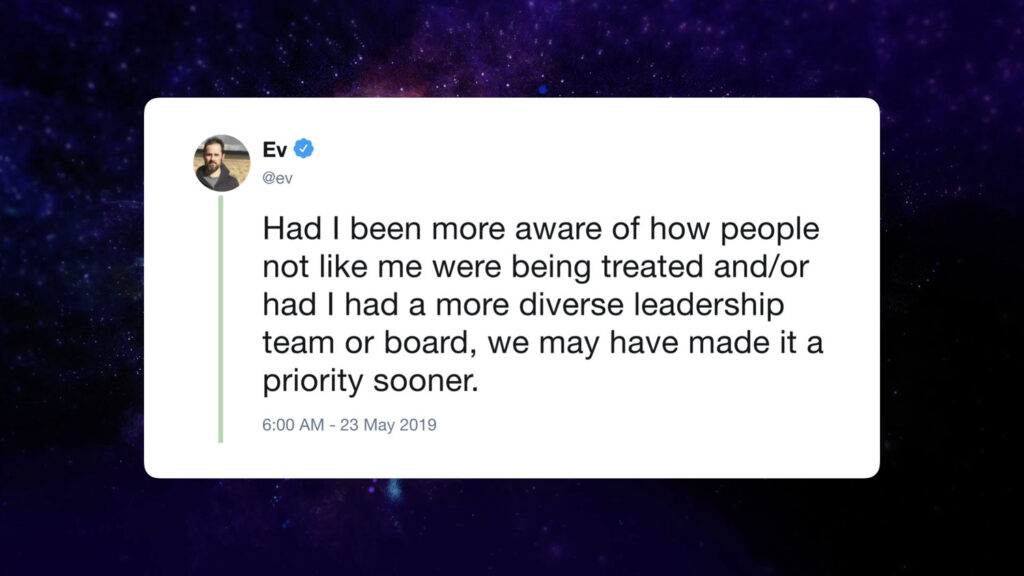
Inclusive innovation, with members of marginalized groups sitting in positions of power, would have produced very different outcomes.
For example, an engineer or product manager who comes from a community that was historically targeted by voter suppression efforts is far more likely to anticipate the sorts of vulnerabilities we saw exploited on Facebook by Cambridge Analytica.
Even Twitter’s co-founder has acknowledged this fundamental truth.
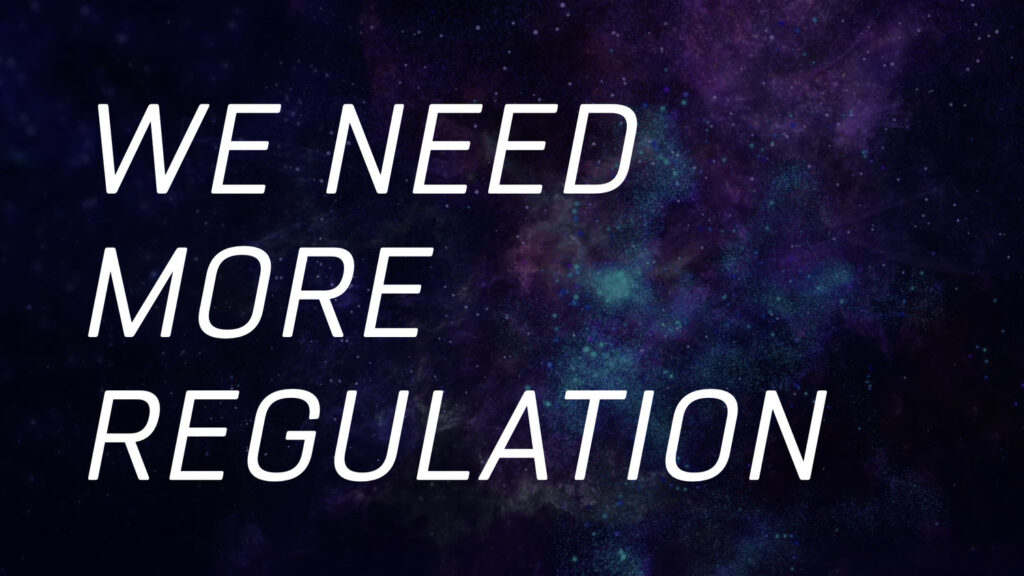
More than that though.
We need more regulation.

Every libertarian in the room feels their hackles go up, but the evidence is insurmountable.
Social media platforms have to comply with Germany’s laws prohibiting the distribution of pro-Nazi propaganda. It should be true everywhere.
The argument that it’s too hard technically is given lie to over and over again. Platforms have successfully eradicated almost all of the ISIS content that was spreading online.
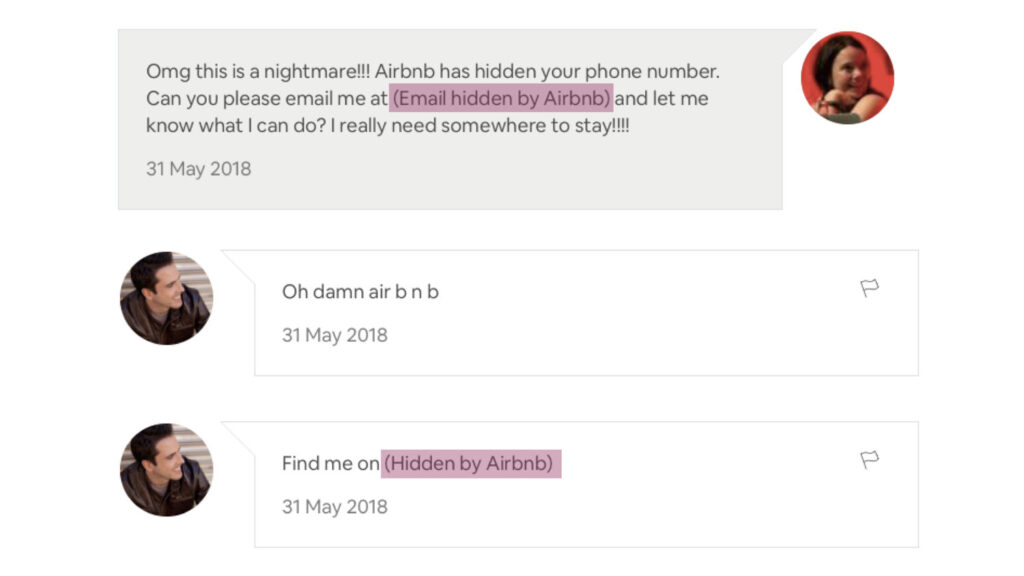
Technical solutions work just fine to remove commercial or branded content. Or when it suits a company financially.
Here is me having a truly infuriating conversation with an AirBNB host where we tried to swap contact details so that we could get in touch with each other off the platform. Again and again – hidden by AirBnB.

And yet when Dr Christine Blasey Ford’s personal details were repeatedly shared on twitter, forcing her to move house? The answer is a 12 hour suspension after the fact.
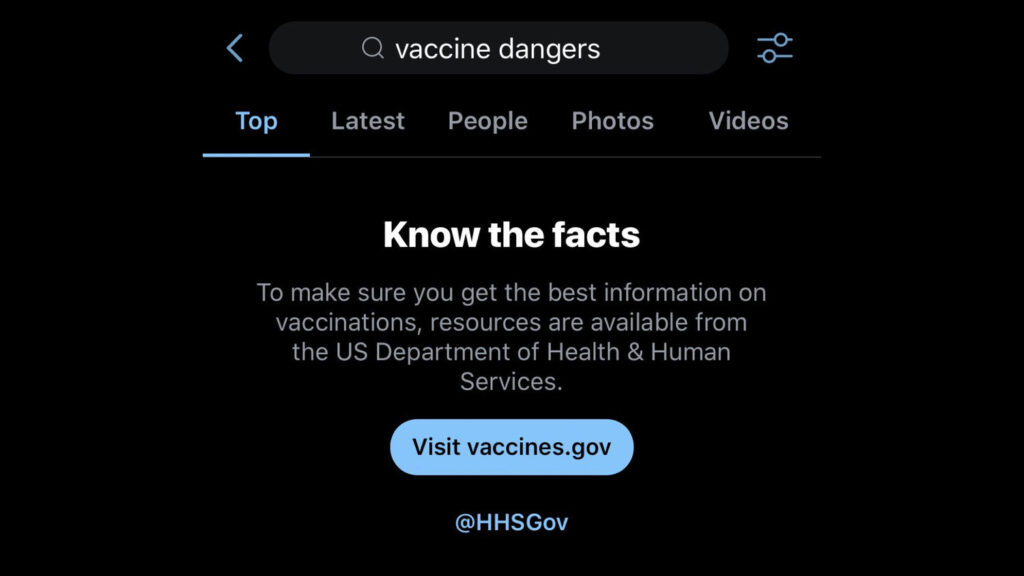
When faced with pressure, these companies do make (small) efforts to change.
Twitter now throws up warnings when you search for anti-vax content.

Facebook and Google have both introduced new (minor) rule changes around live streaming after Christchurch.
But it’s not nearly enough. We need new regulatory tools.
But ultimately, regulation will always be a blunt instrument. We need more than this.
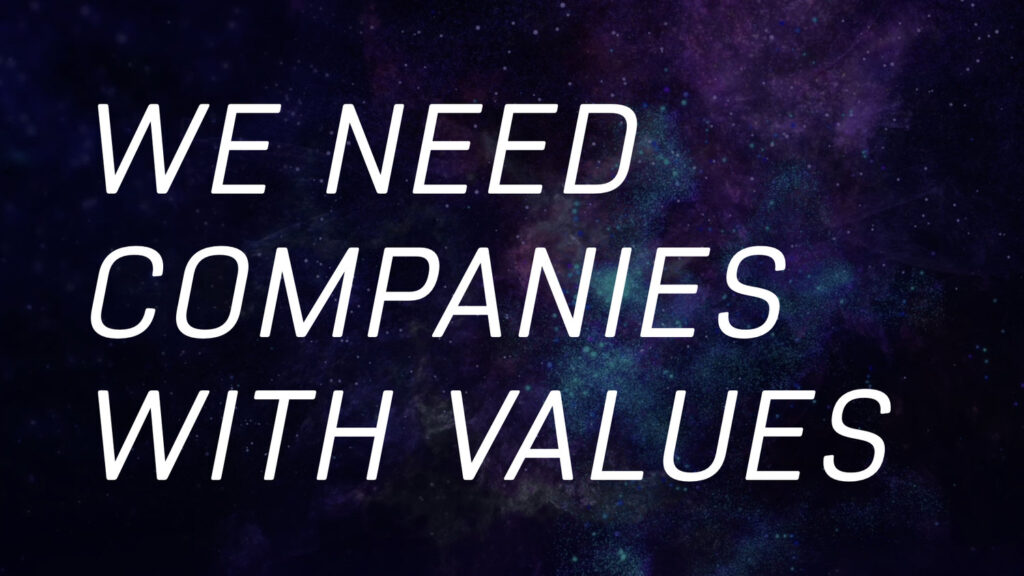
We need companies with values
Private companies and platforms need to make this a priority – to abandon the myth of neutrality and to determine what the values are that they stand for and stick to them. Rules can always be gamed. Companies need to be able to come back to their central principles, their values, when they’re making decisions. And they need to make those values clear.
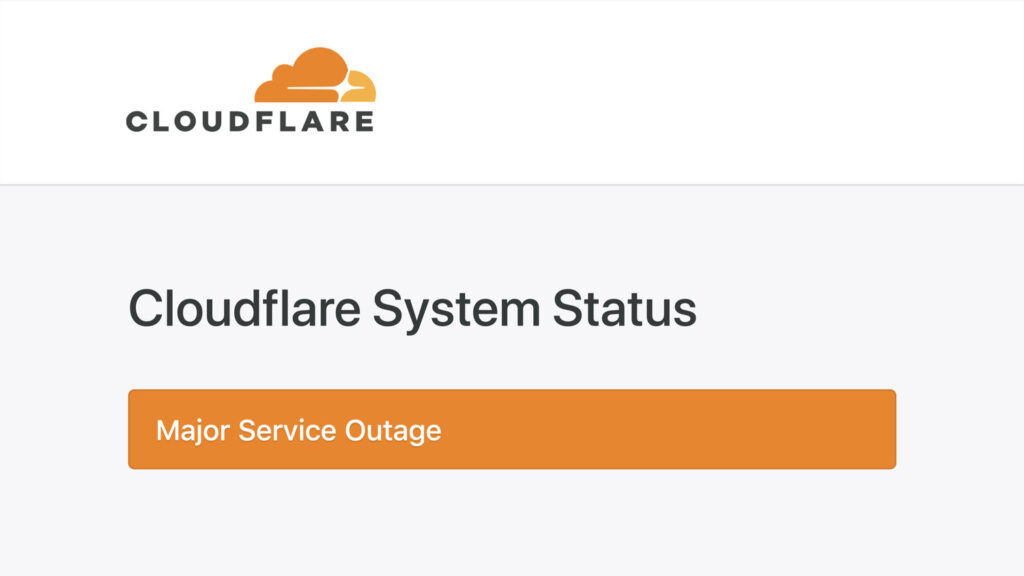
Cloudflare, for example, a company that protects websites from attacks, decided to terminate the account of white supremacist website the Daily Stormer in 2017. However, they are now refusing calls to stop working to keep 8chan online, saying that “they don’t want to get into the business of what is and isn’t appropriate”
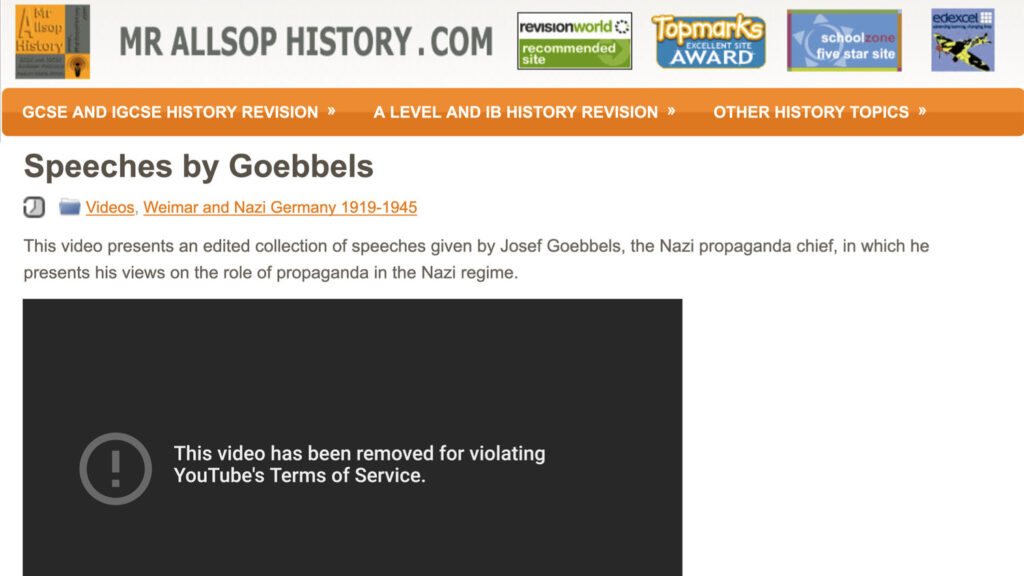
YouTube flails around unable to decide whether it’s going to demonetize hate speech or not, engages in one-off purges of extremist content, and winds up taking down history professor’s videos on the Nazi regime. It’s ad hoc, inconsistent, and seemingly without principles.
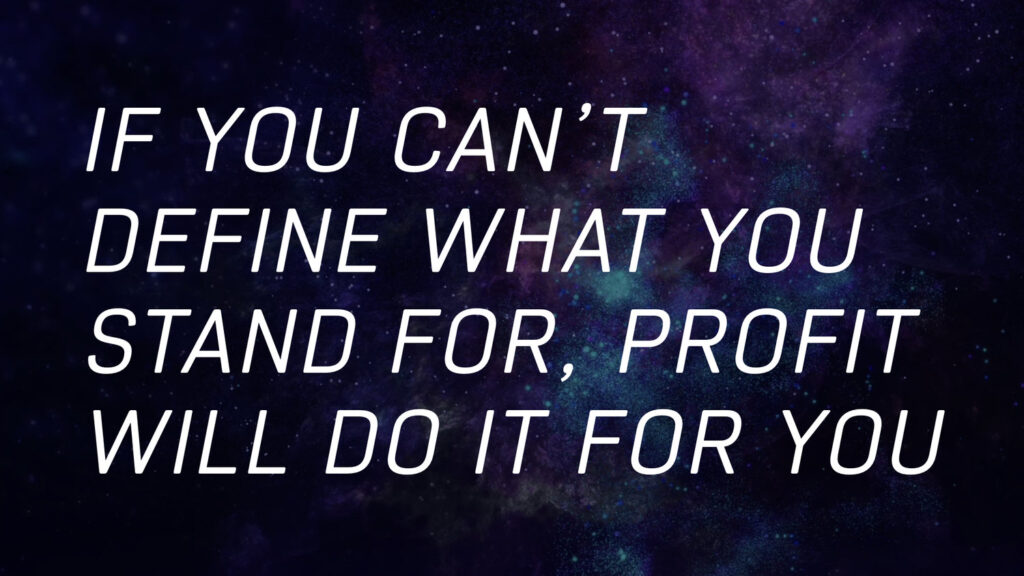
We know now that deplatforming works. Data & Society research found consistent drop-offs in audiences after personalities are kicked off of social media platforms, and that they don’t gain the same amplification power they had. A study published by researchers at Georgia Tech found that banning Reddit’s most toxic subreddits resulted in less hate speech elsewhere on the site, and especially from the people who were active on those subreddits.
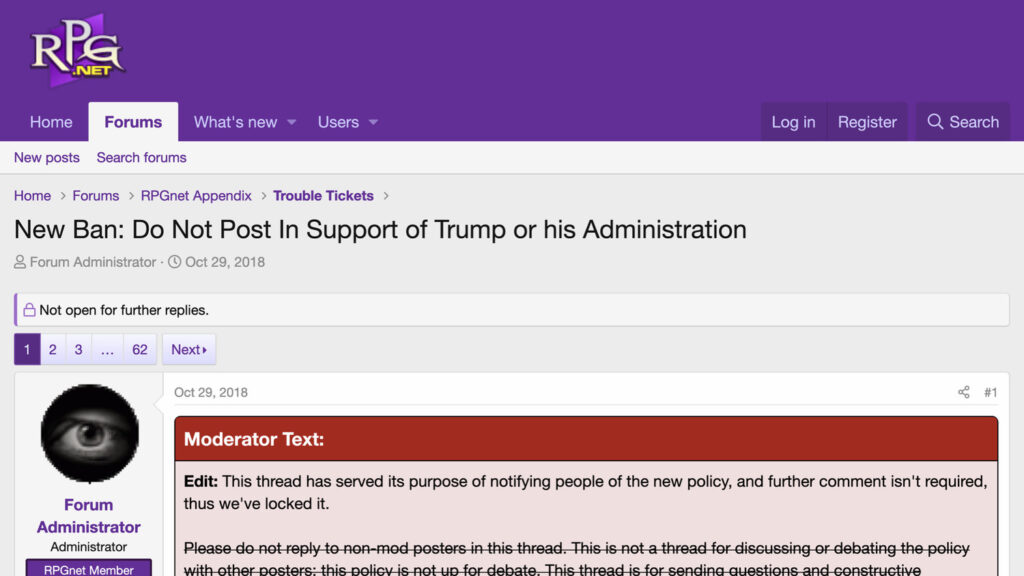
So we need companies prepared to come down off that fence. If you can’t define what you stand for, then profit will do it for you.
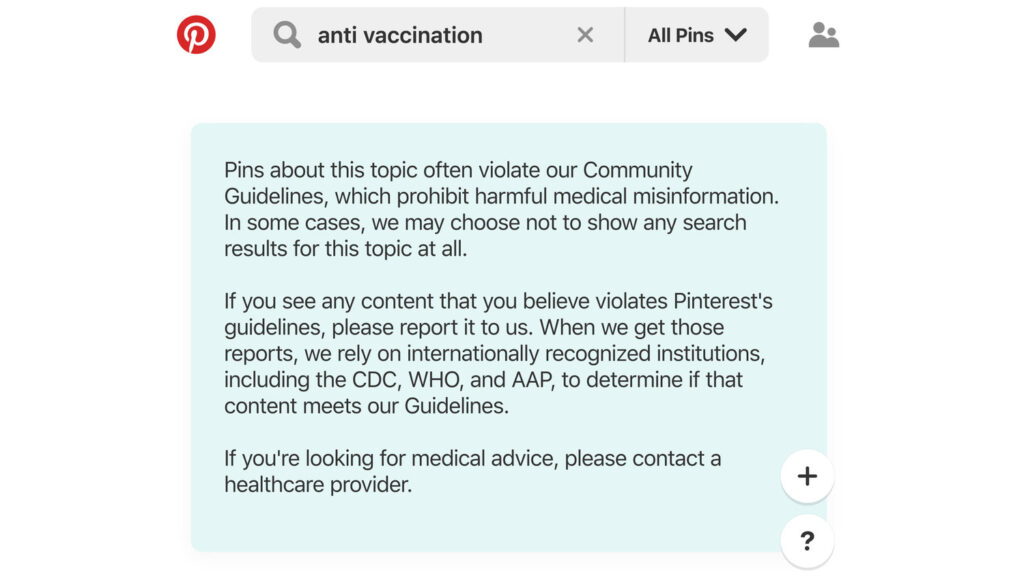
Last year RPGnet, one of the oldest gaming forums on the internet, made their stance clear.
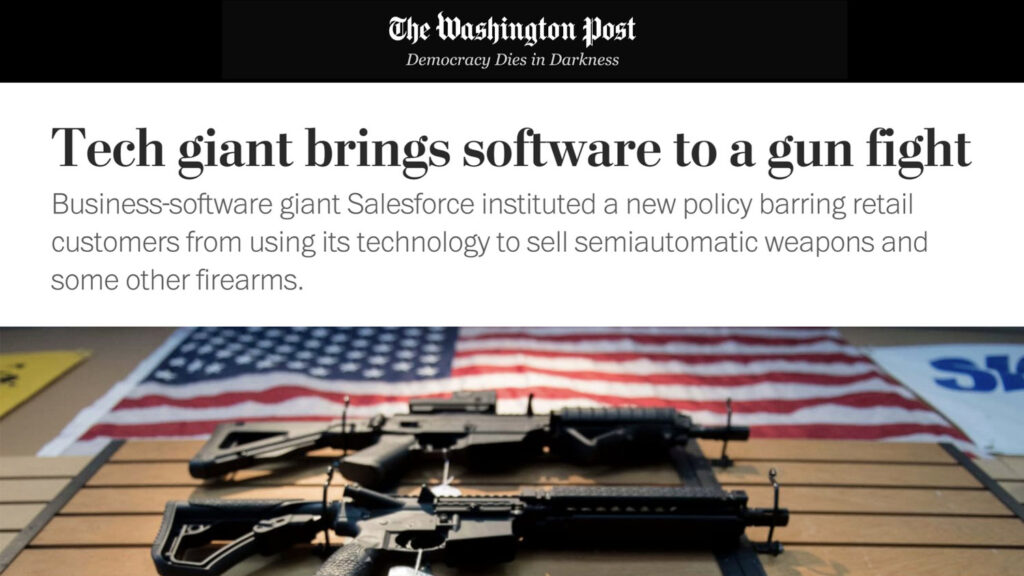
This year, Pinterest has announced anti-vax content isn’t welcome on its platform.
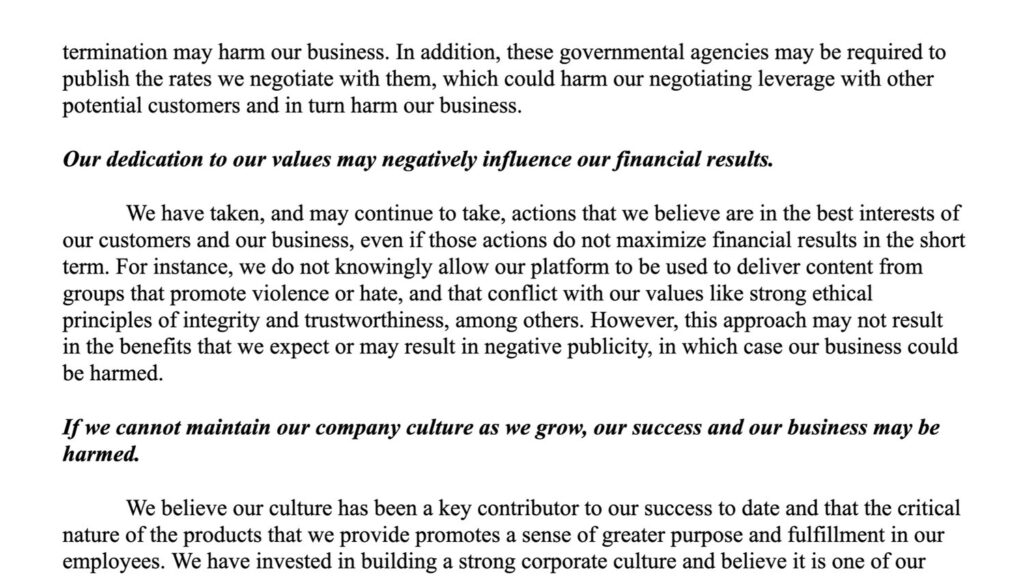
Salesforce recently announced a policy that bars customers that sell a range of firearms — including automatic and semiautomatic — from using its e-commerce technology.
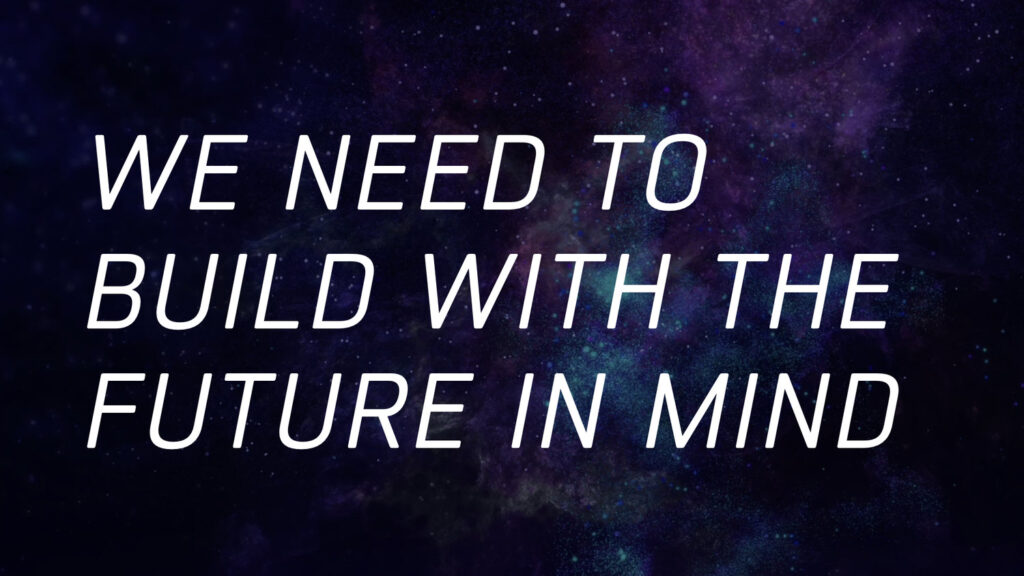
Being an ethical company might mean you’re not maximising for short-term financial gain.
Fastly noted this risk in its recent S-1 filing in advance of it’s IPO in the US.
But not behaving ethically is going to be a far greater business risk in the future.
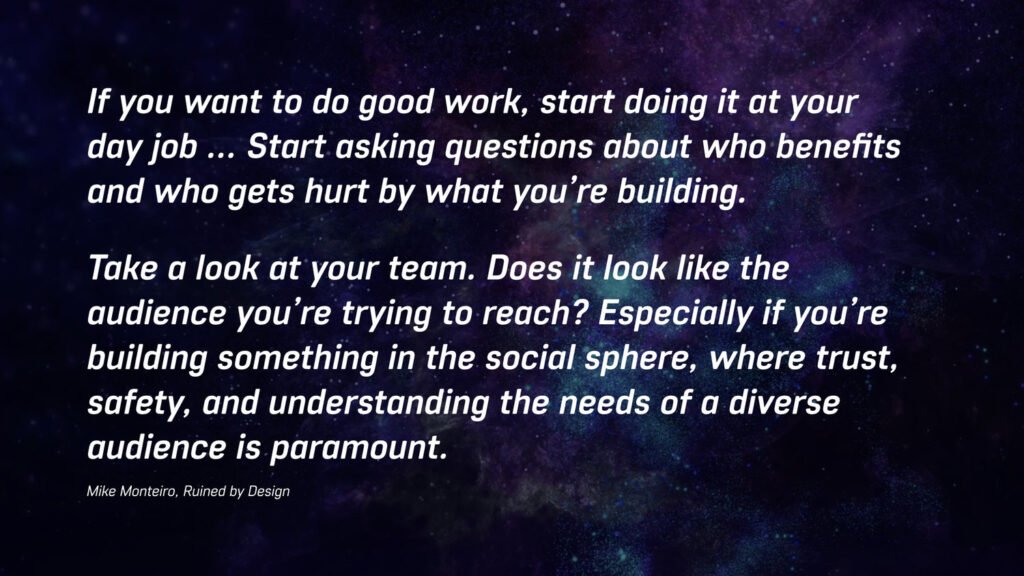
We need to build with the future in mind
In addition to holding these existing companies to account, we need to think about the things we’re building right now. All of us. The people in this room. And we need to build with the future in mind.
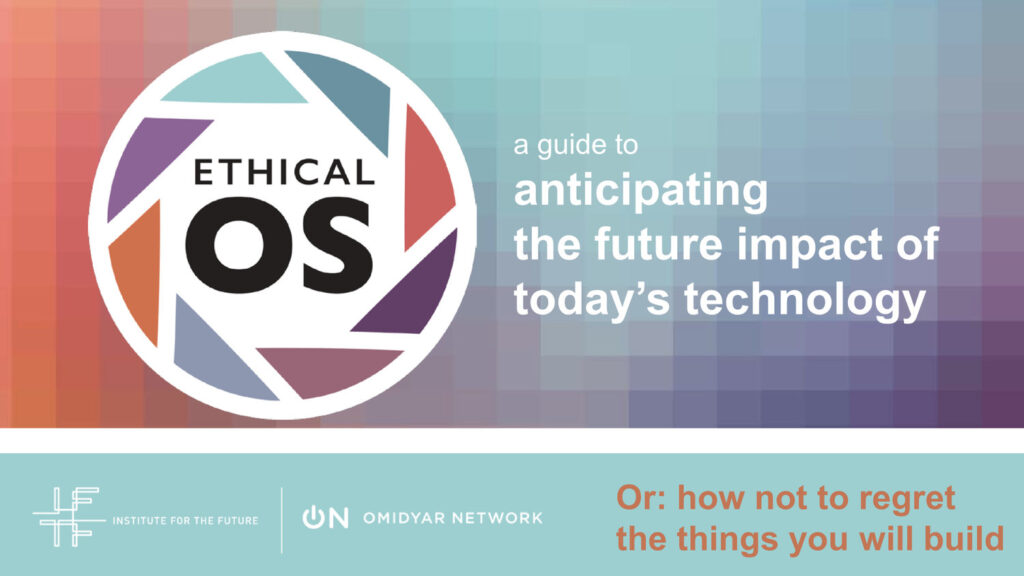
Mike Monteiro, in Ruined by Design – a book I can’t recommend strongly enough, says:
“Doing good work isn’t a matter of location. It’s a matter of craft and a matter of responsibility. If you want to do good work, start doing it at your day job. Start asking questions about what you’re building. Start asking questions about who benefits from what you’re building. Start asking questions about who gets hurt by what you’re building. Take a look at your team. Does it look like the audience you’re trying to reach? Especially if you’re building something in the social sphere, where trust, safety, and understanding the needs of a diverse audience is paramount.”
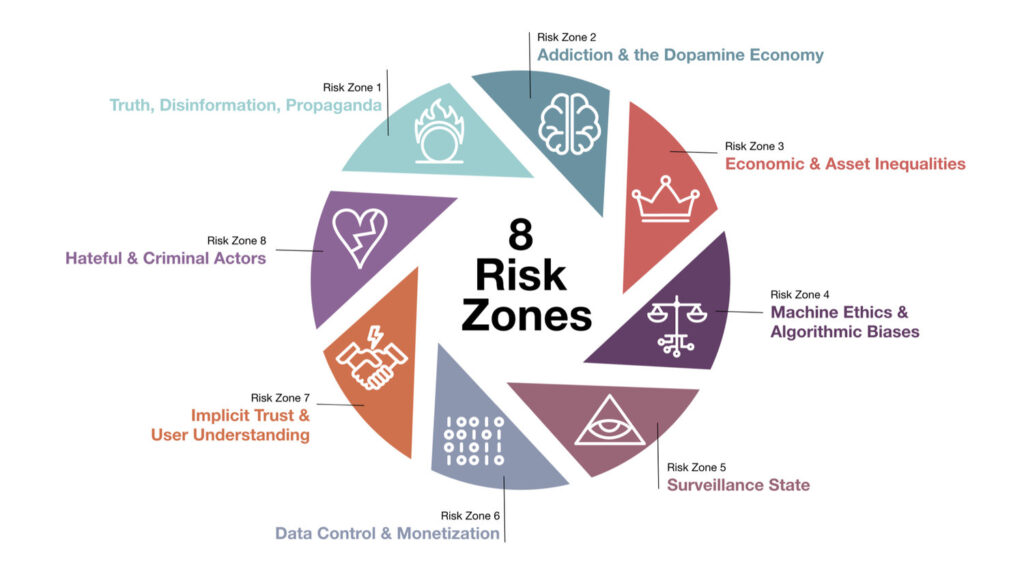
Last year, a new toolkit called EthicalOS was released.
The guide comes out of a partnership between the Institute of the Future, and the Tech and Society Solutions Lab.
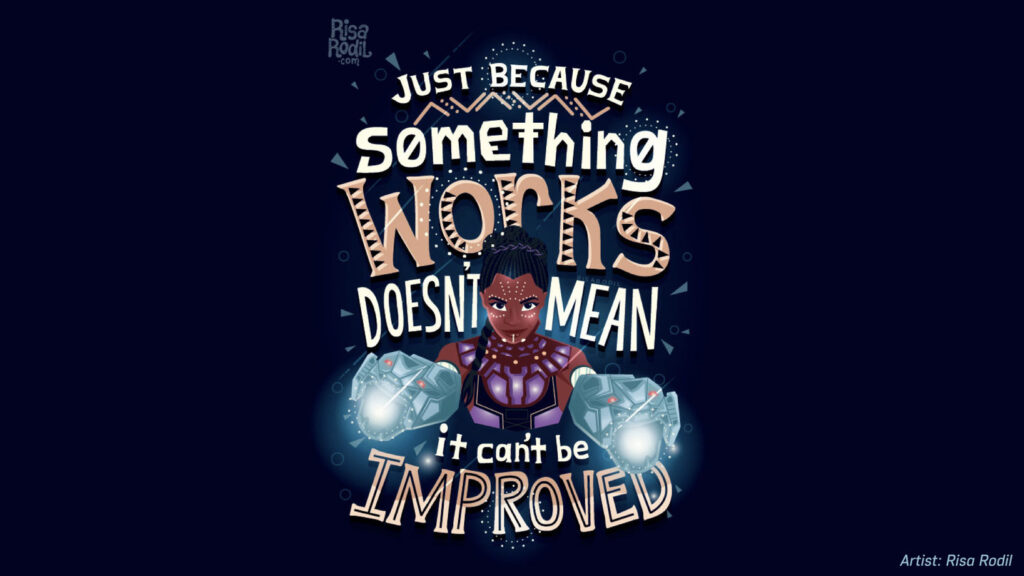
It functions as a sort of workbook with checklists, thought experiments, and basic solutions for product development teams, designers, founders, or investors to grapple with the future impact of their products.
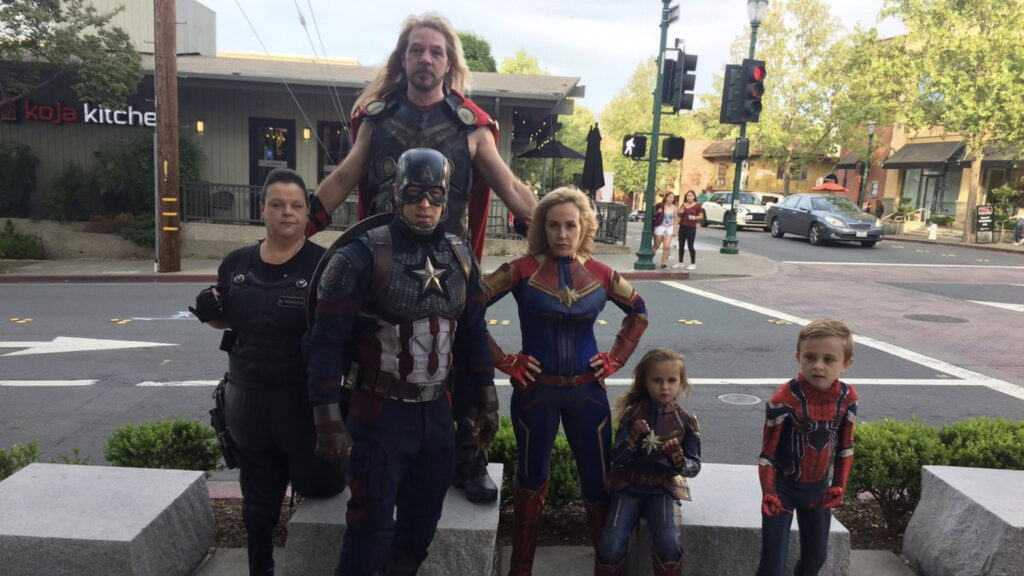
The decisions we take now are critical in determining the kind of world we’re going to get to live in in the future.
It’s worth fighting for. I still believe in heroes.
(credit: Risa Rodil)
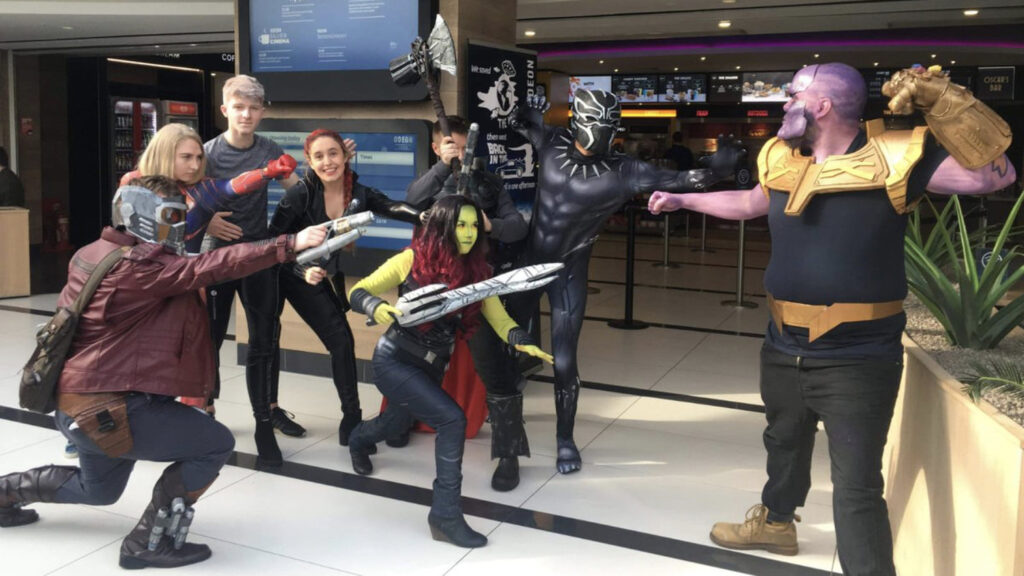
Heroes know that our world isn’t, and can’t ever be apolitical. And that instead we should be doing our very best to build products and platforms that understand this.

That welcome people into communities and make space for them and make them safe, regardless of their race or their age or their gender.

Their sexual orientation.
(credit: Abby – Shop5)
We’re the ones that can change this. We’re the only ones who can. It’s up to us.
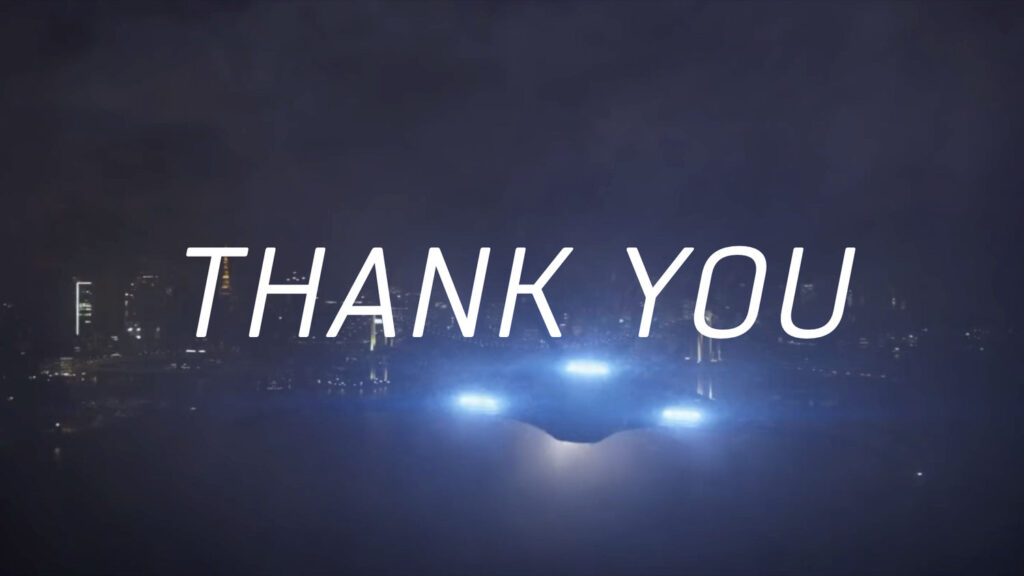
With thanks to all of the fan artists who gave permission to share their work, to Anthony Oliveira, Rob, meriko for their help, and to Su Yin for the gorgeous slides.